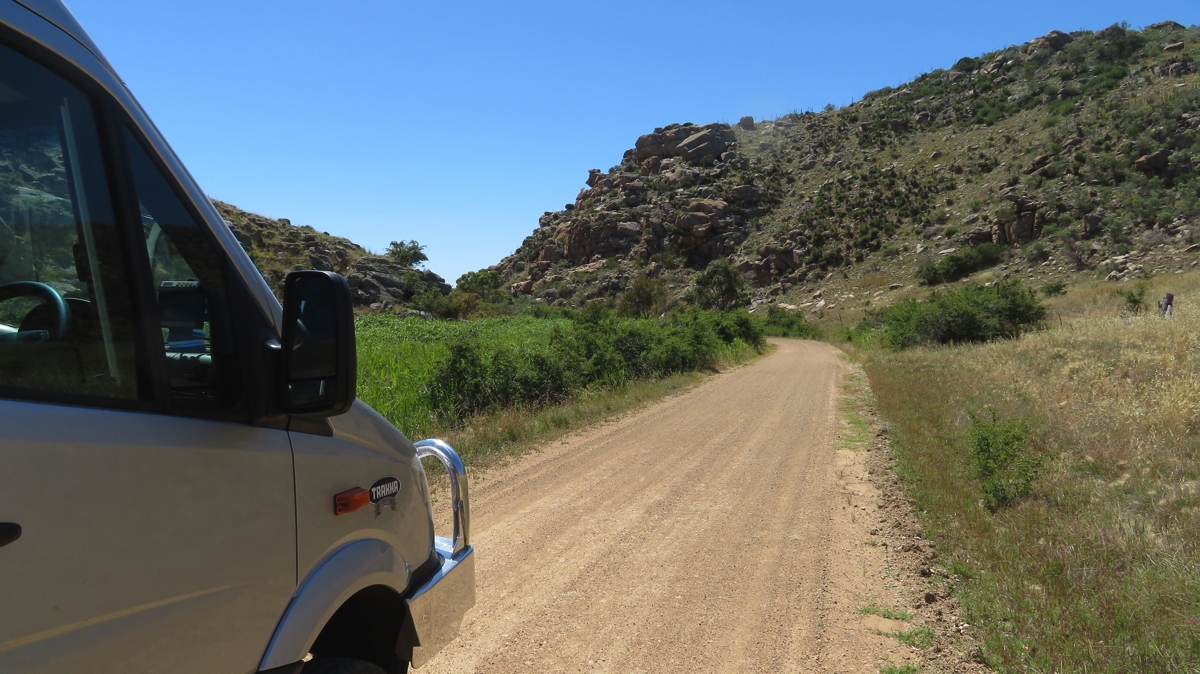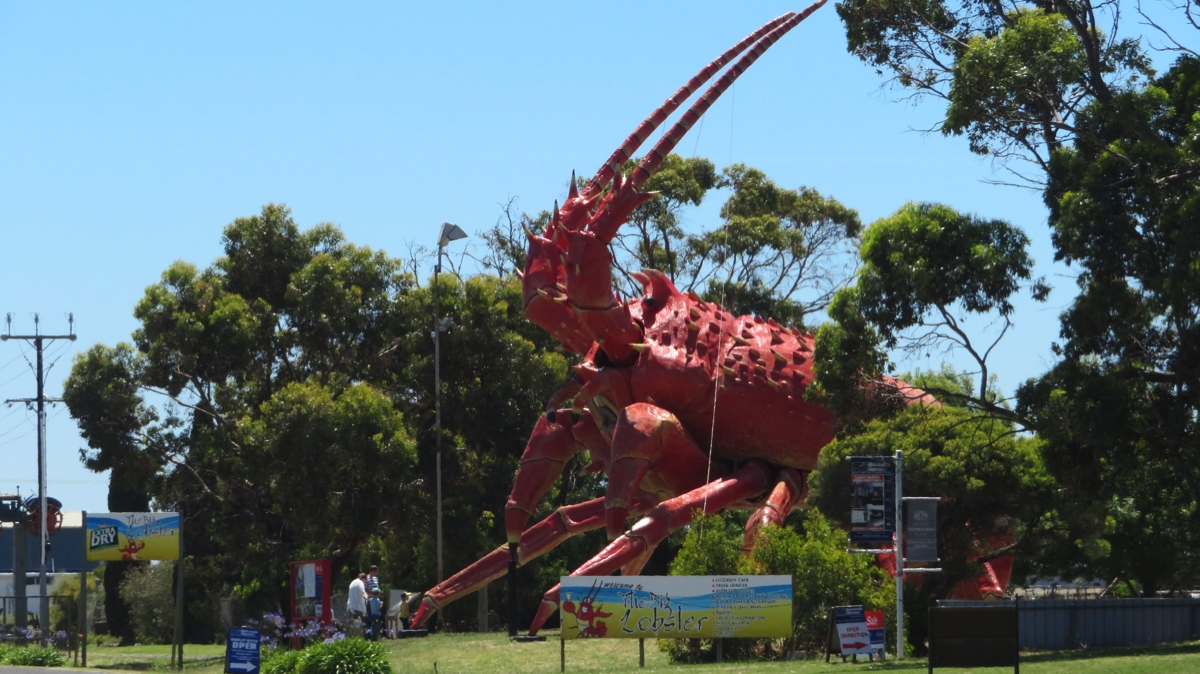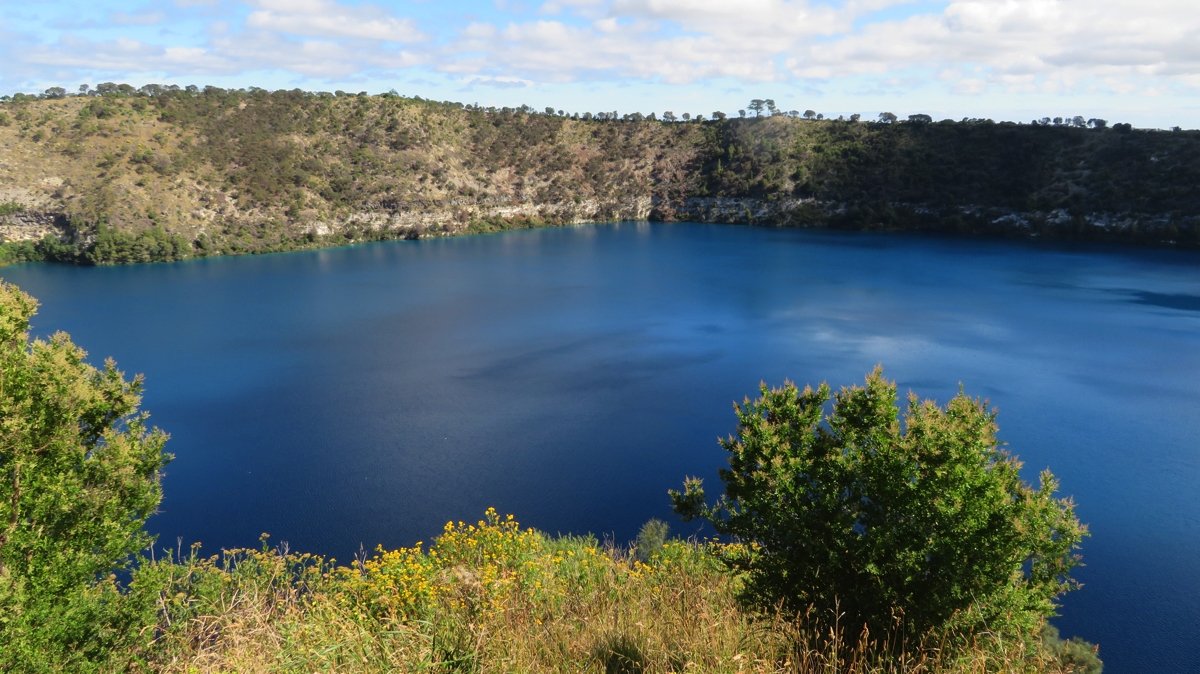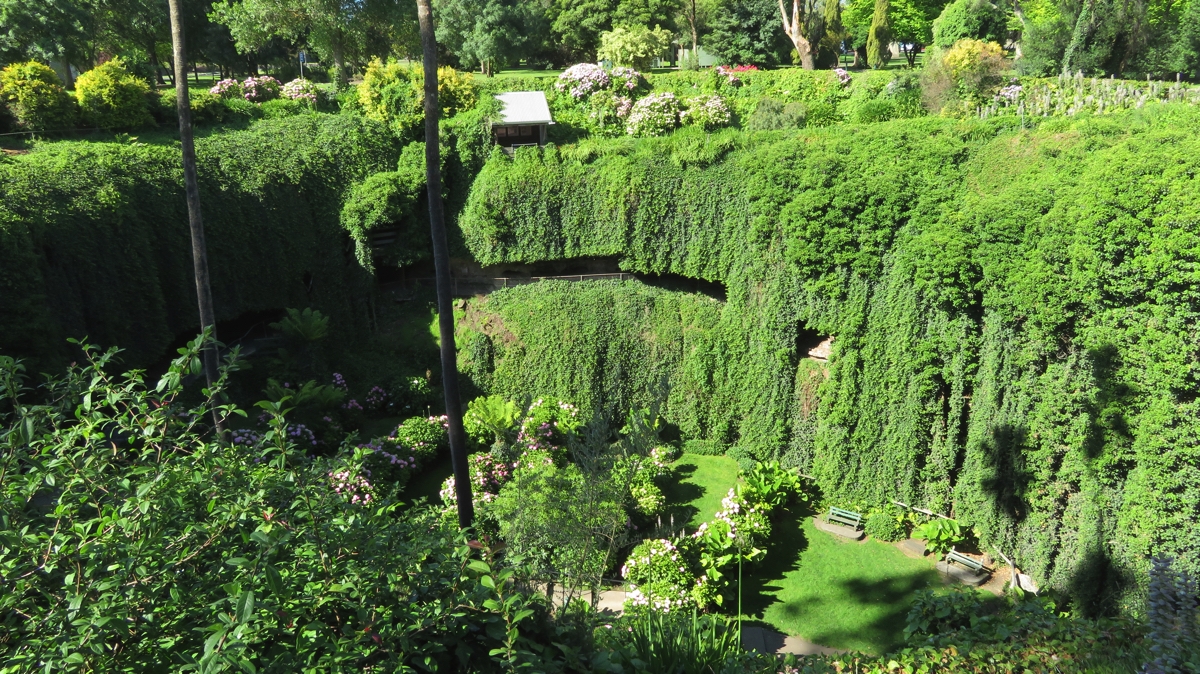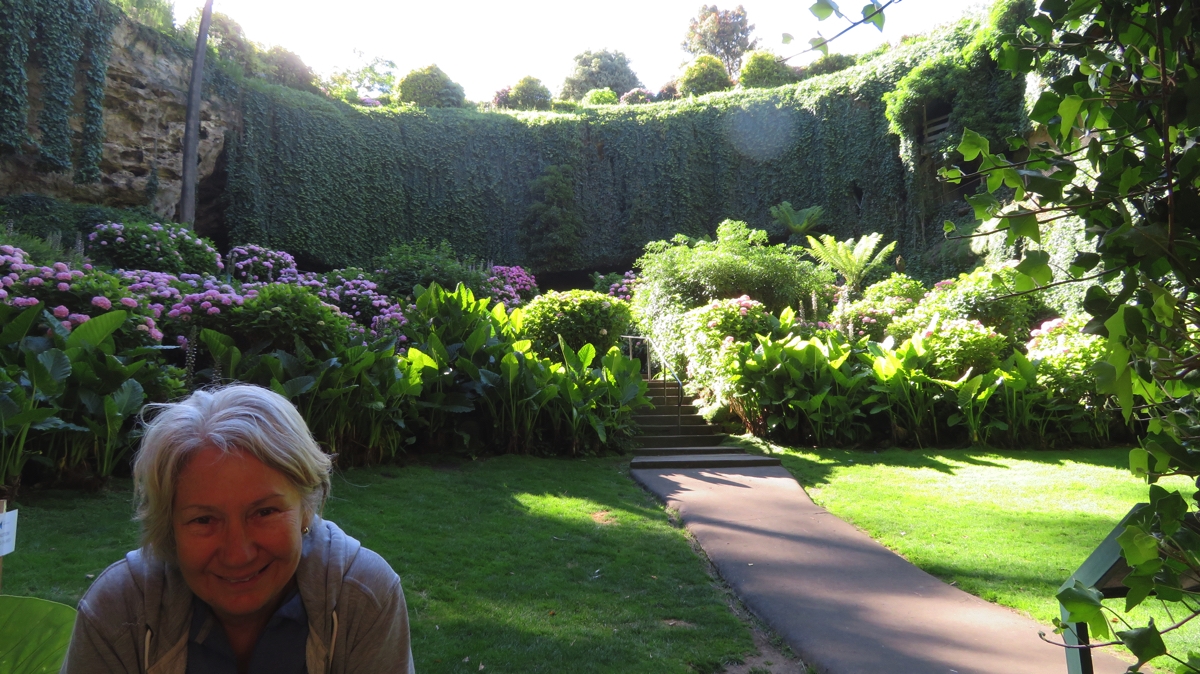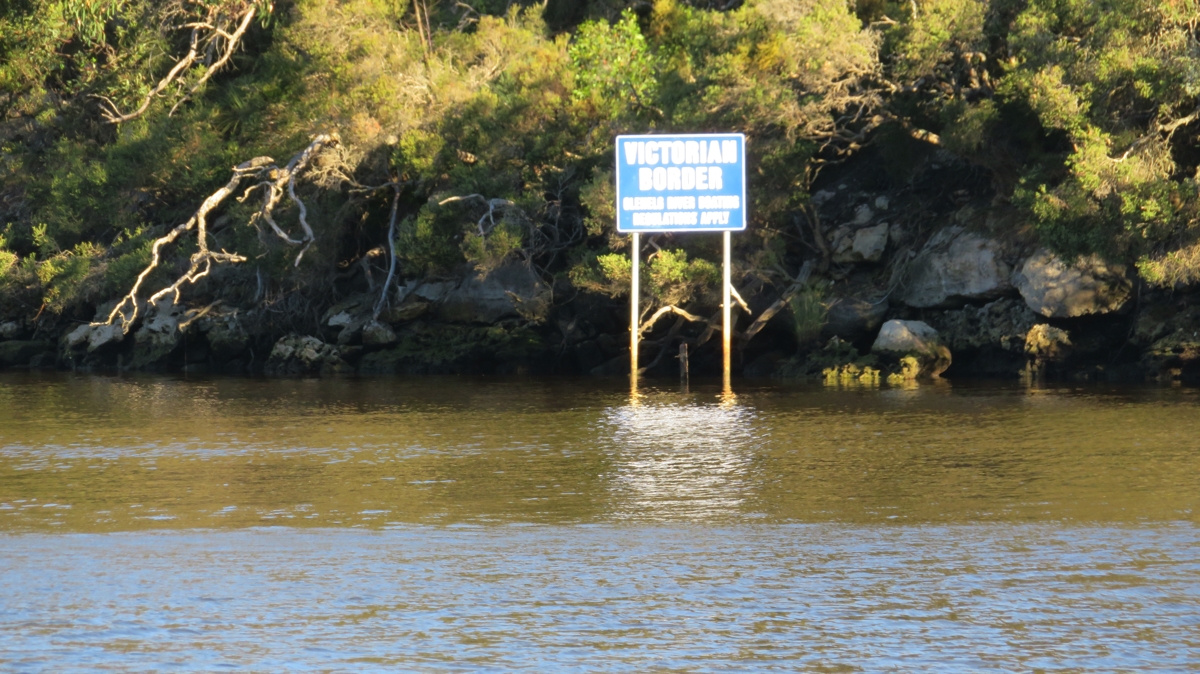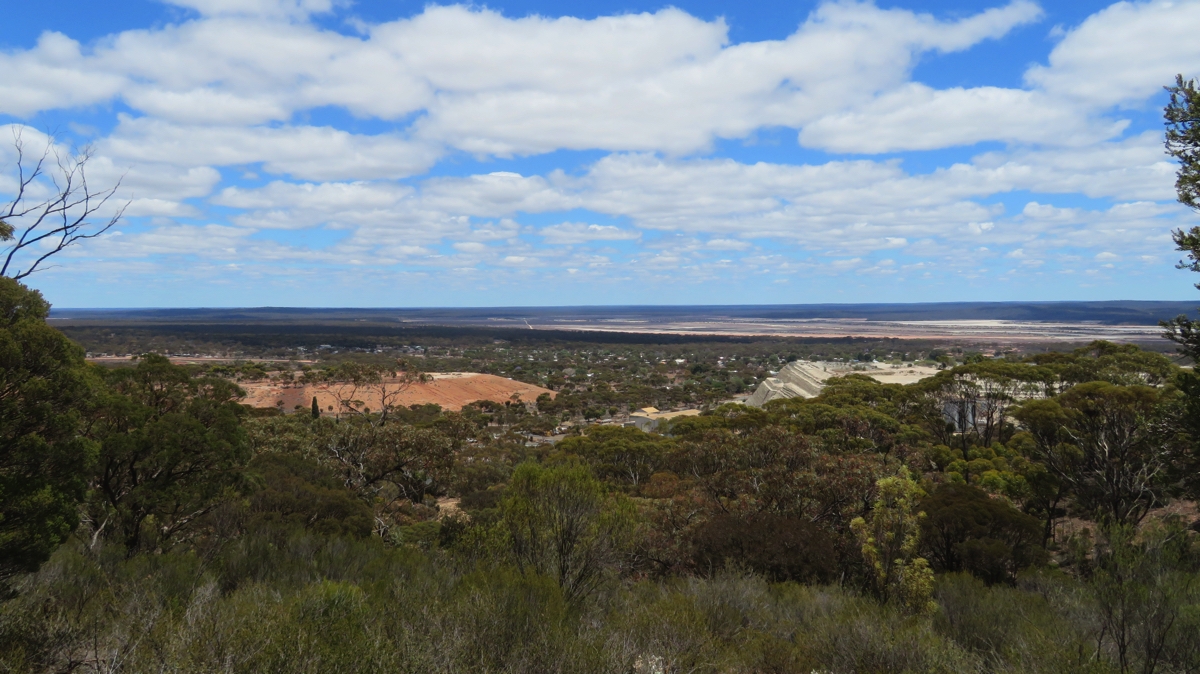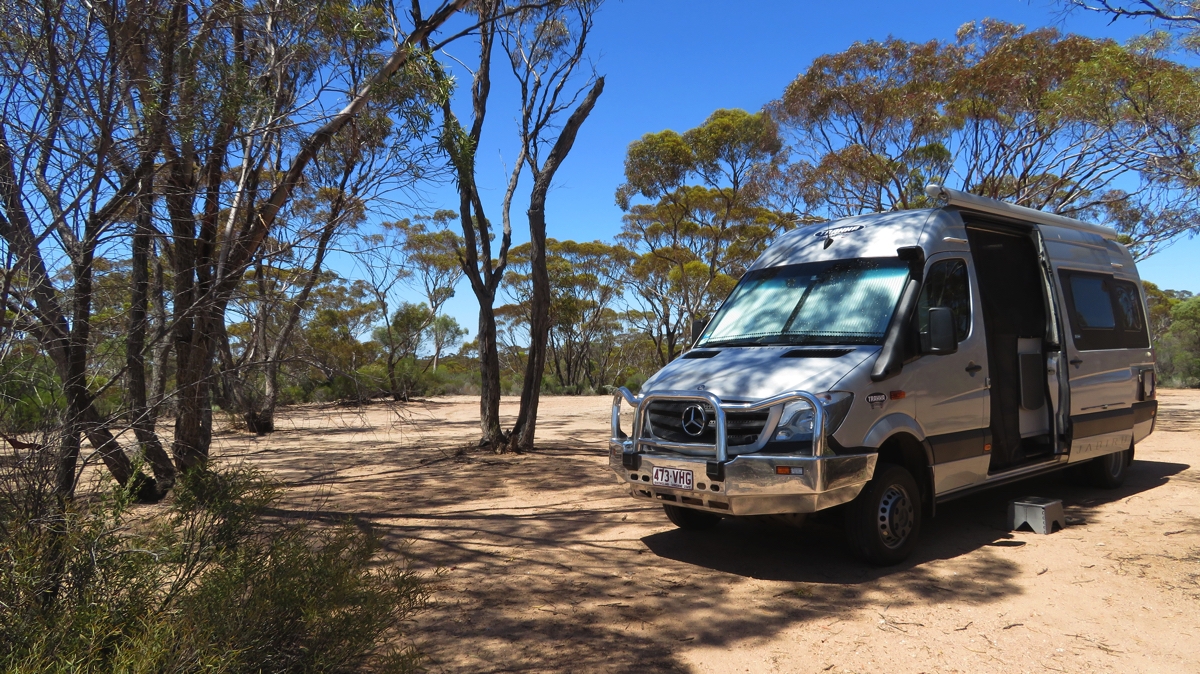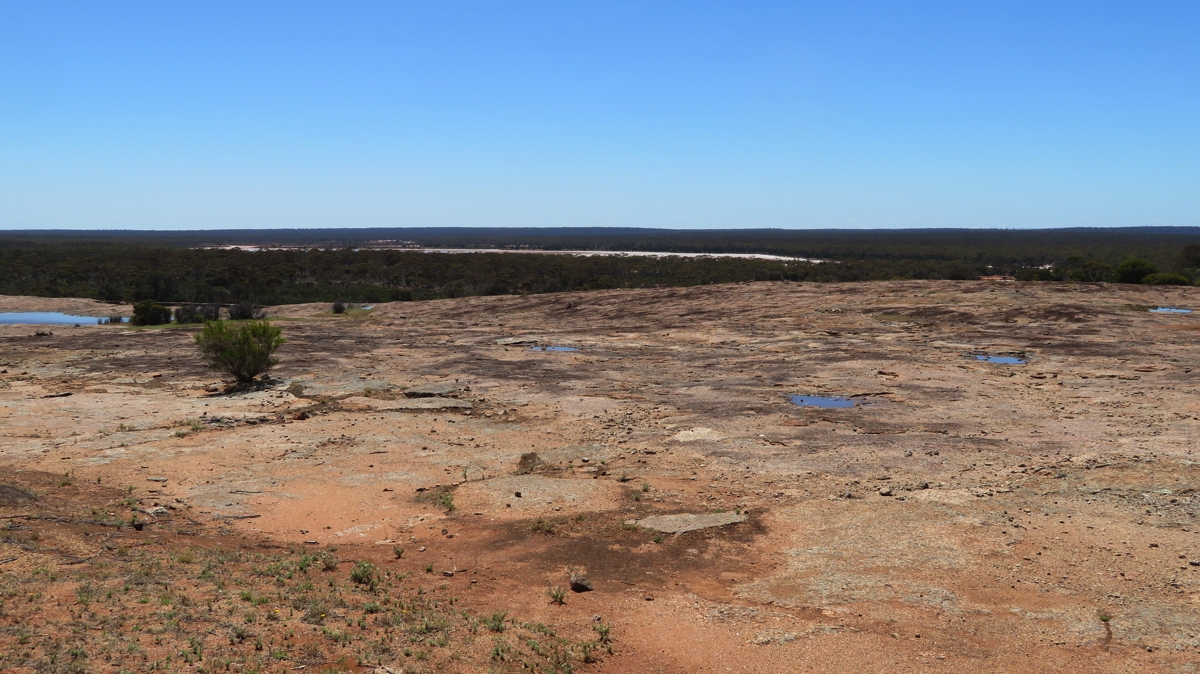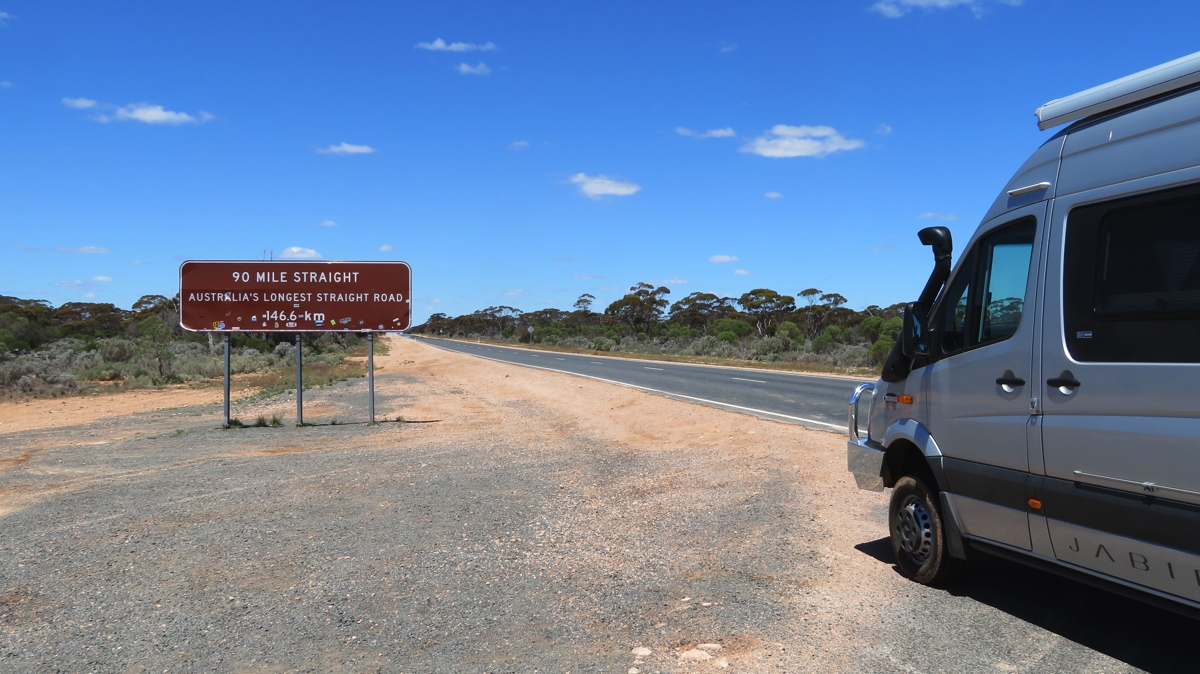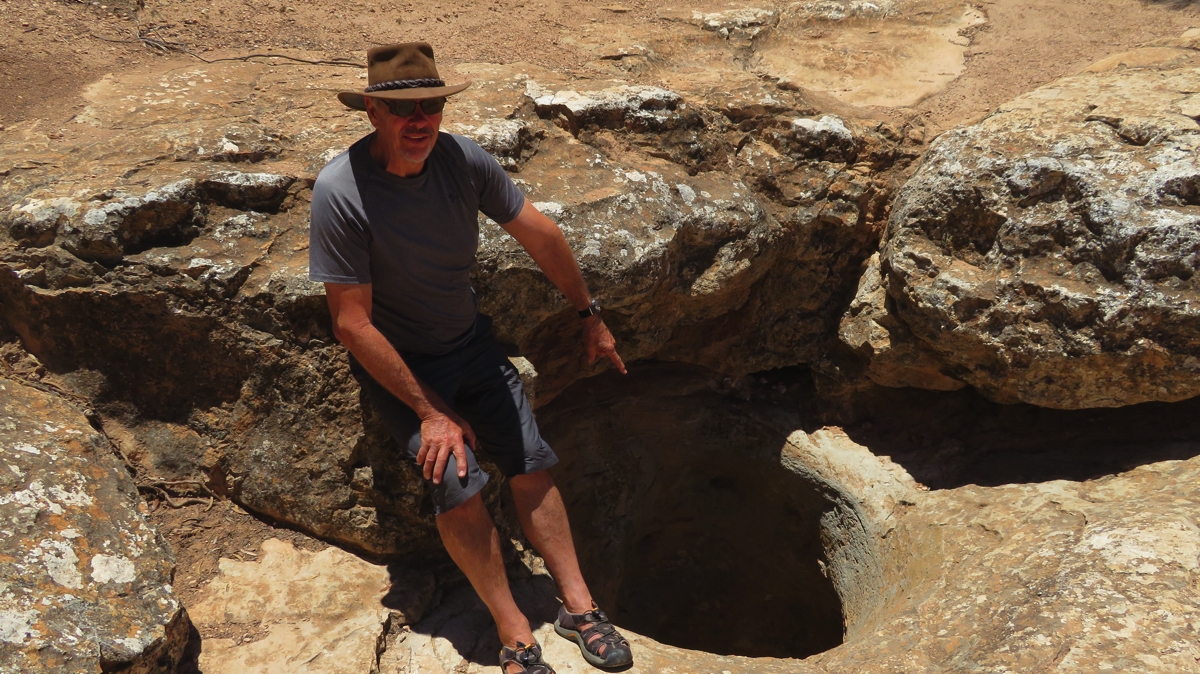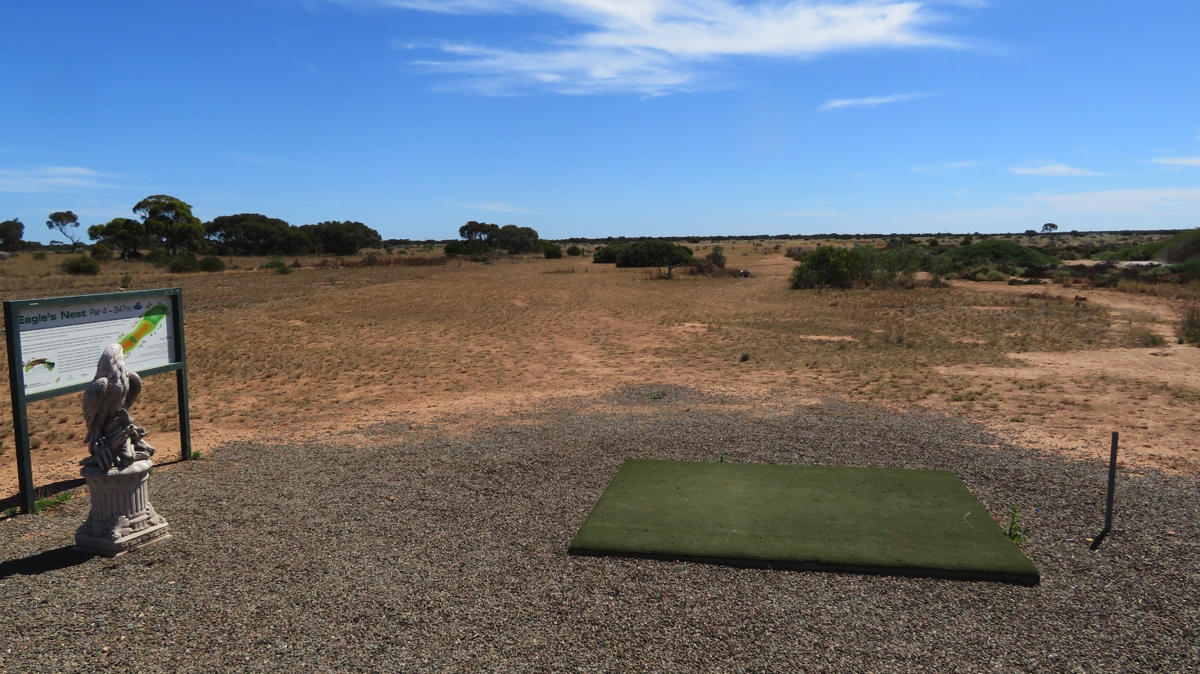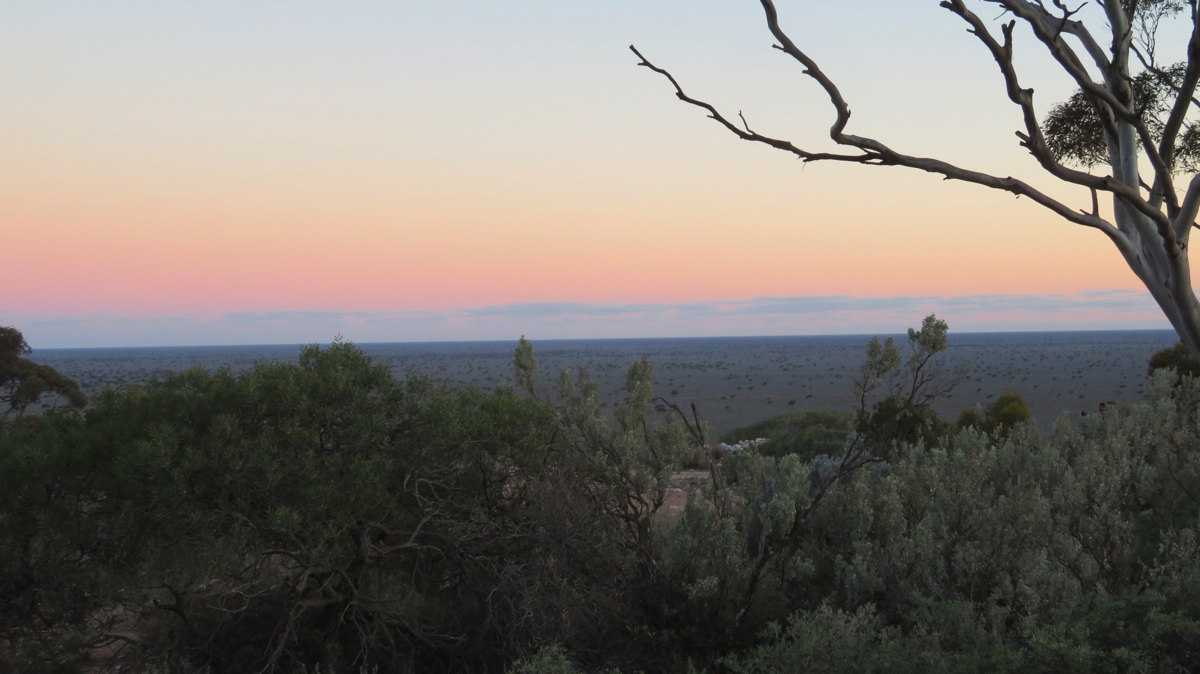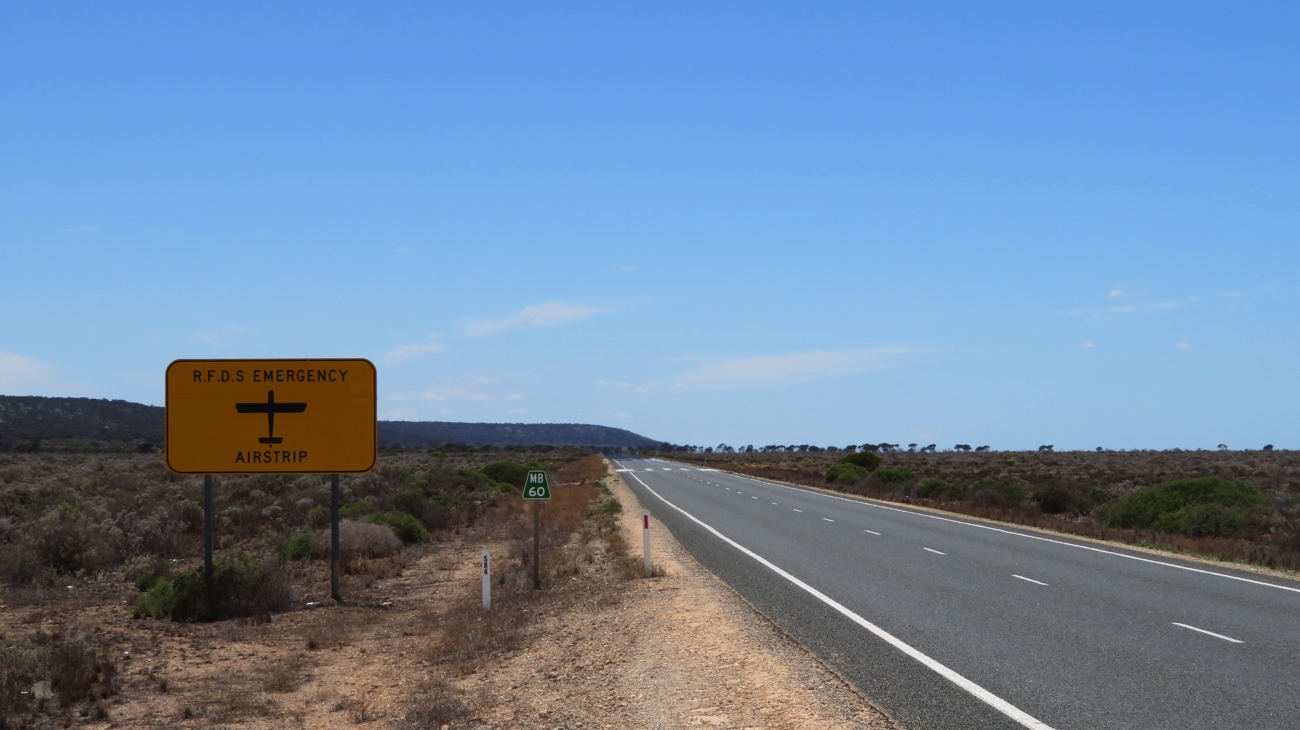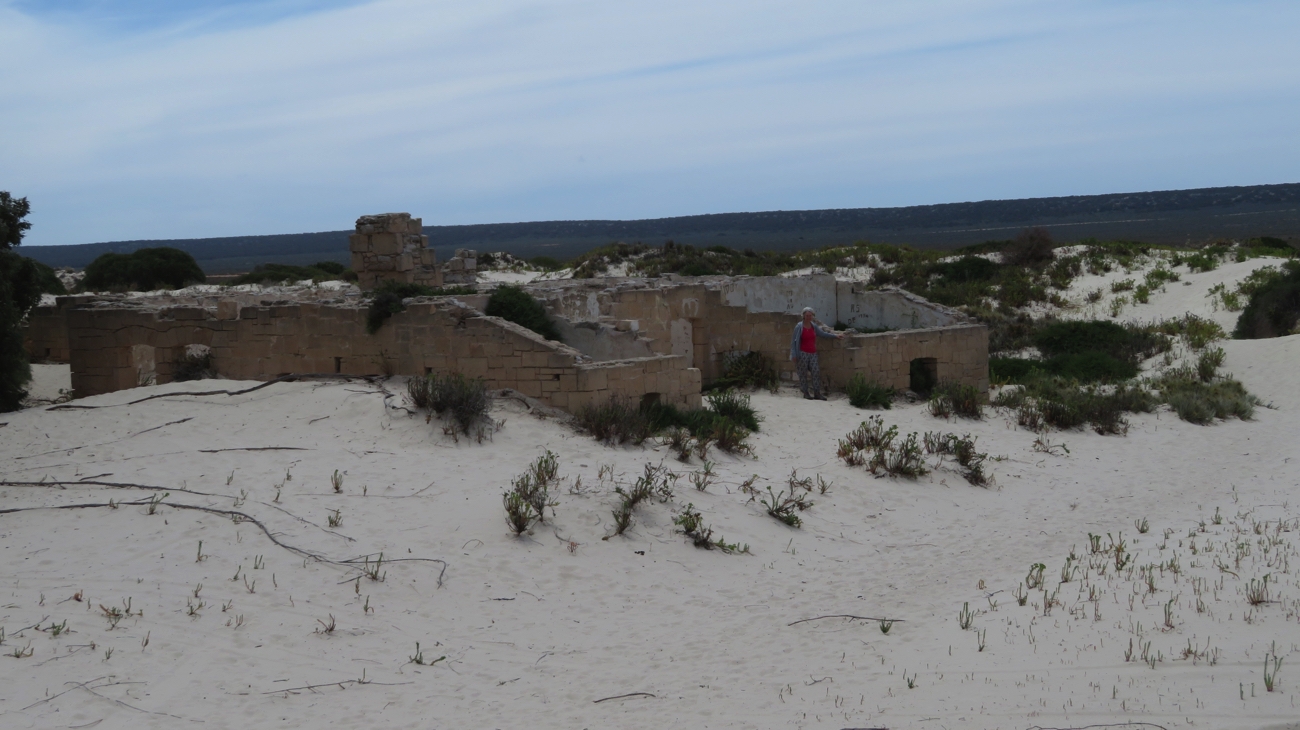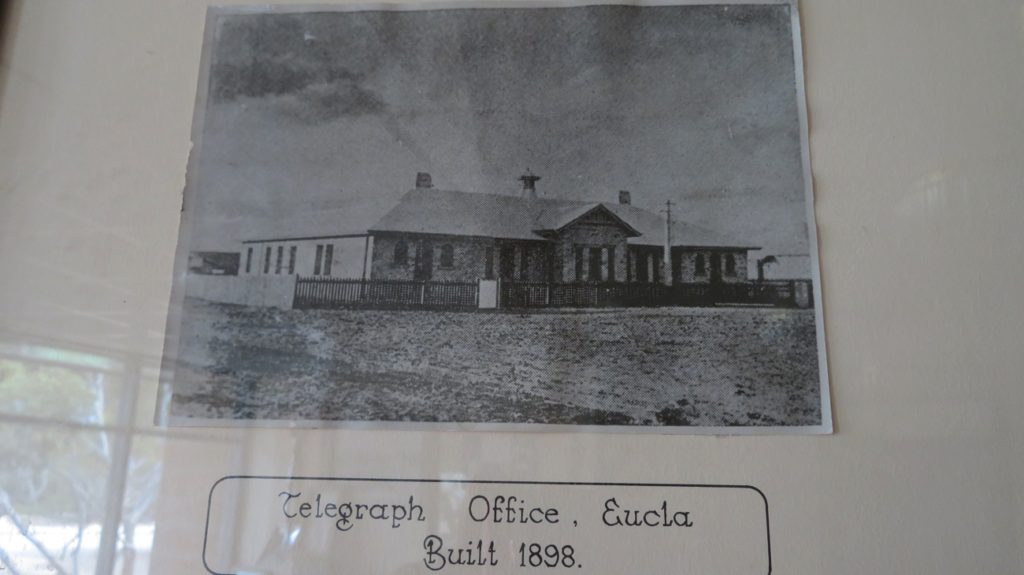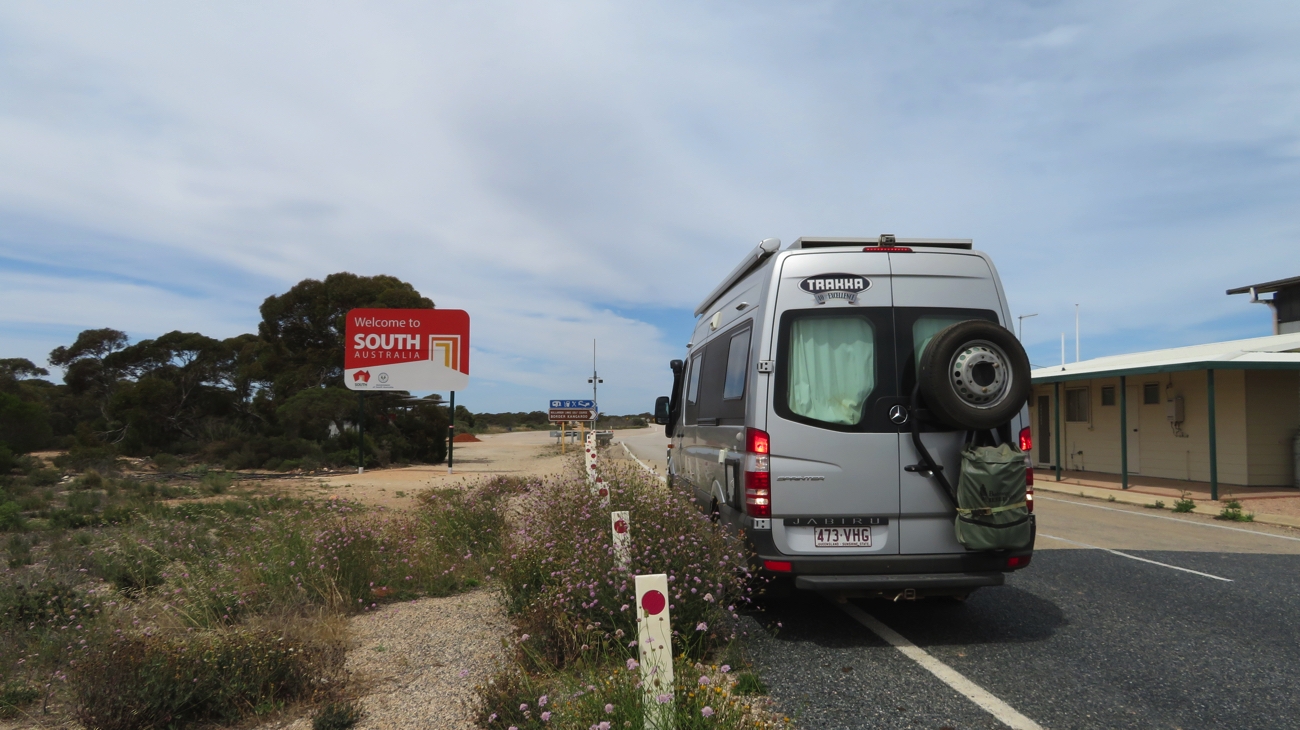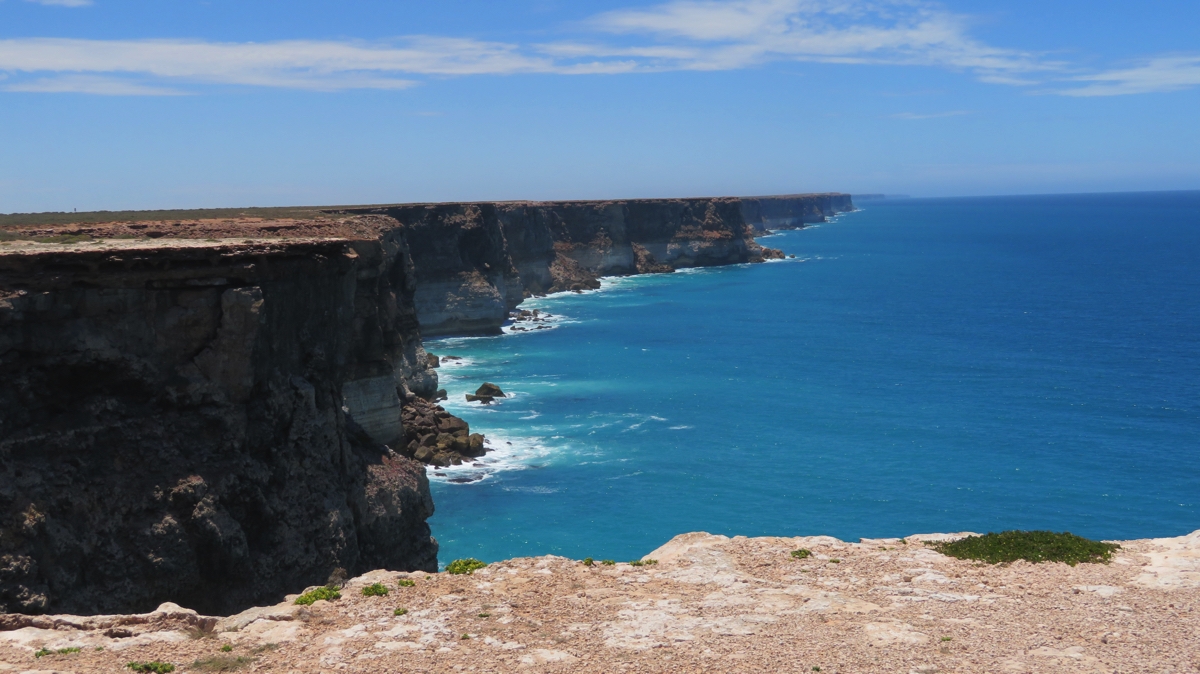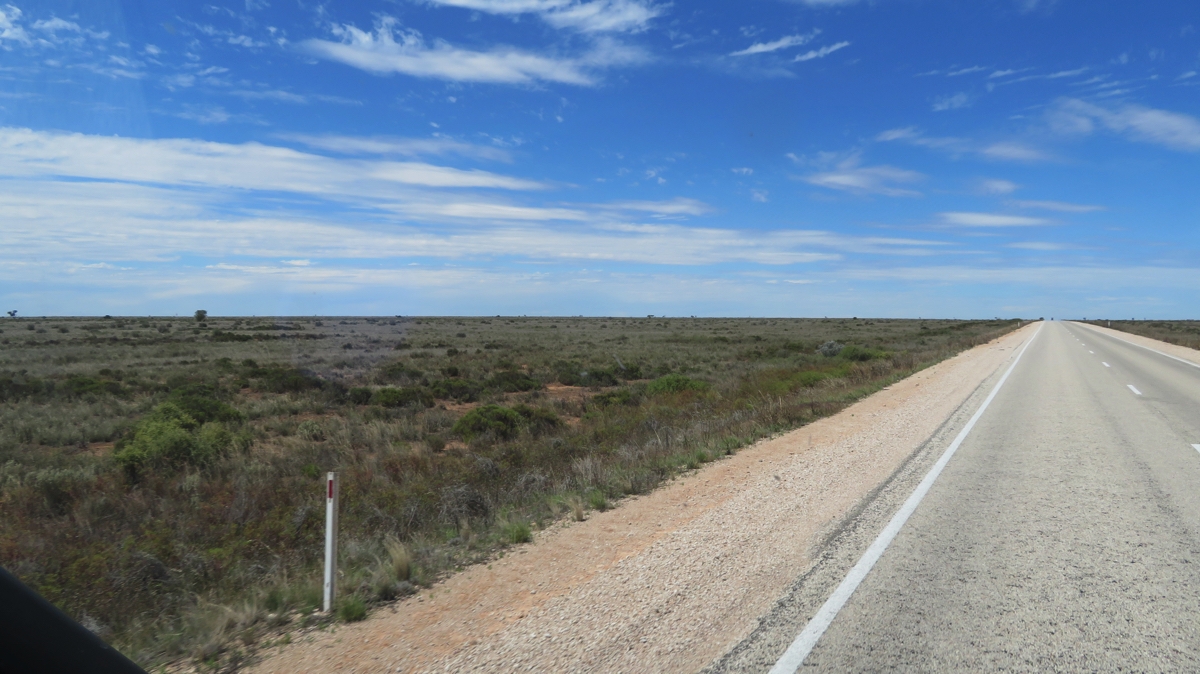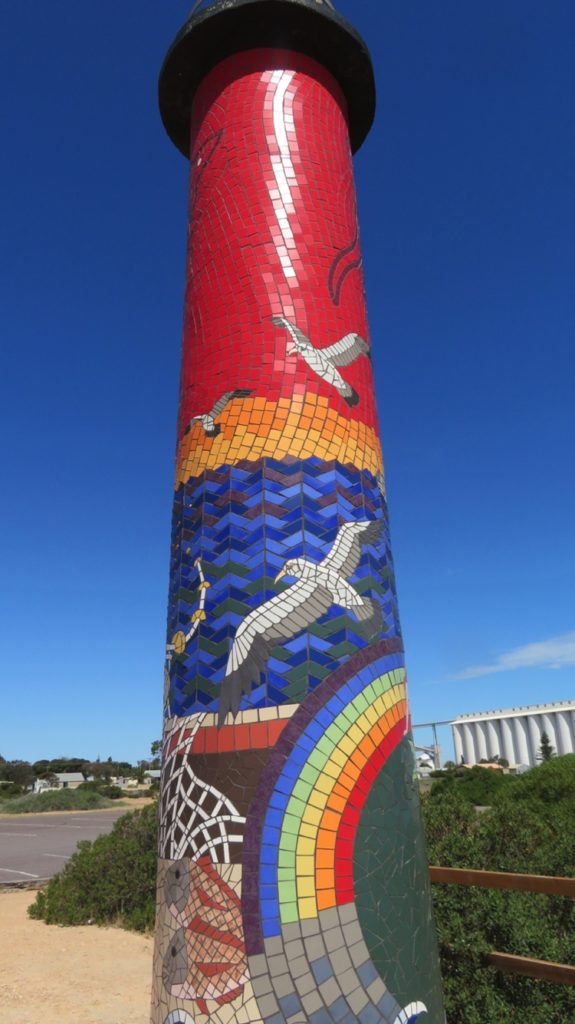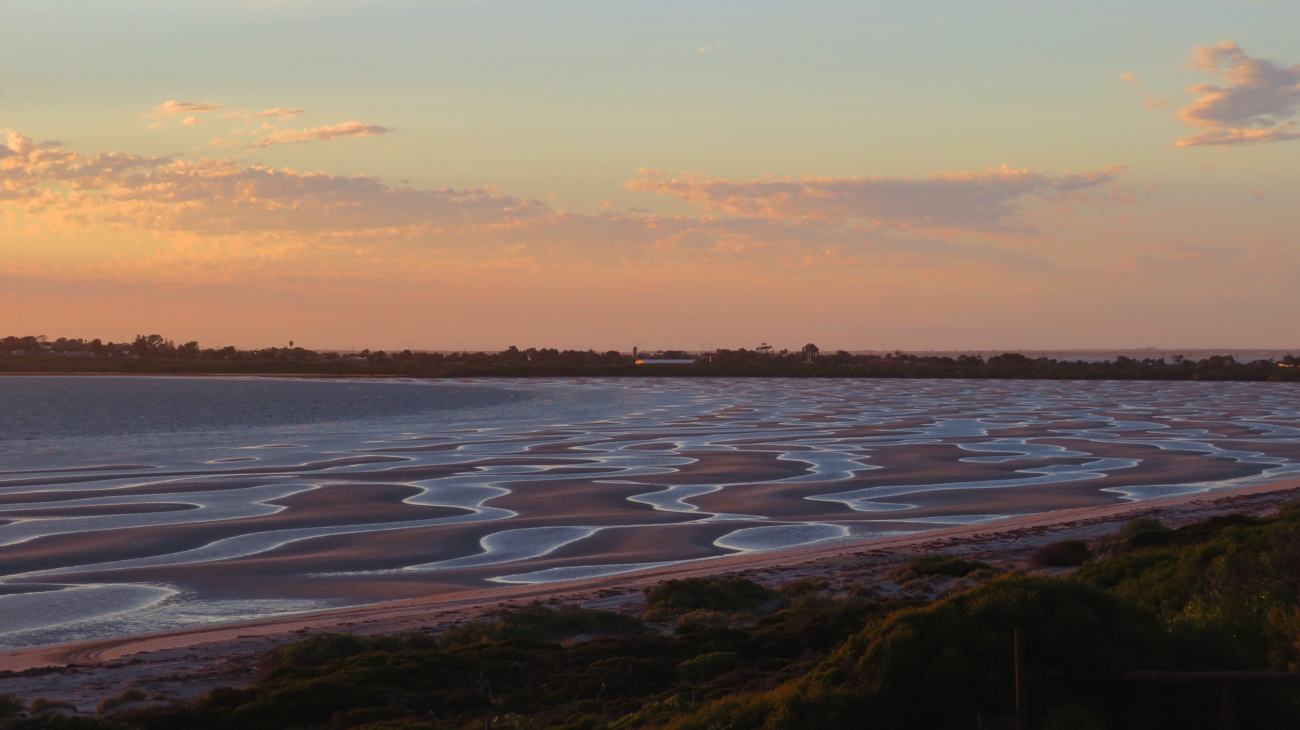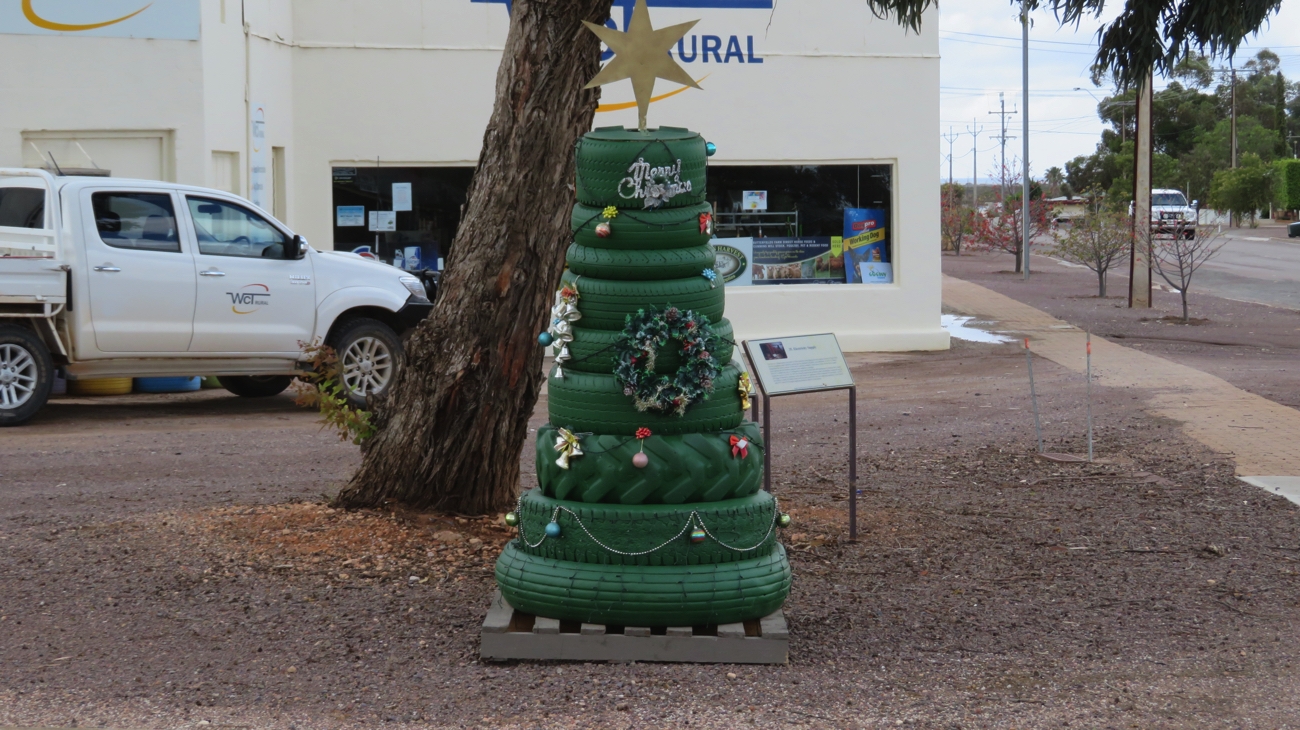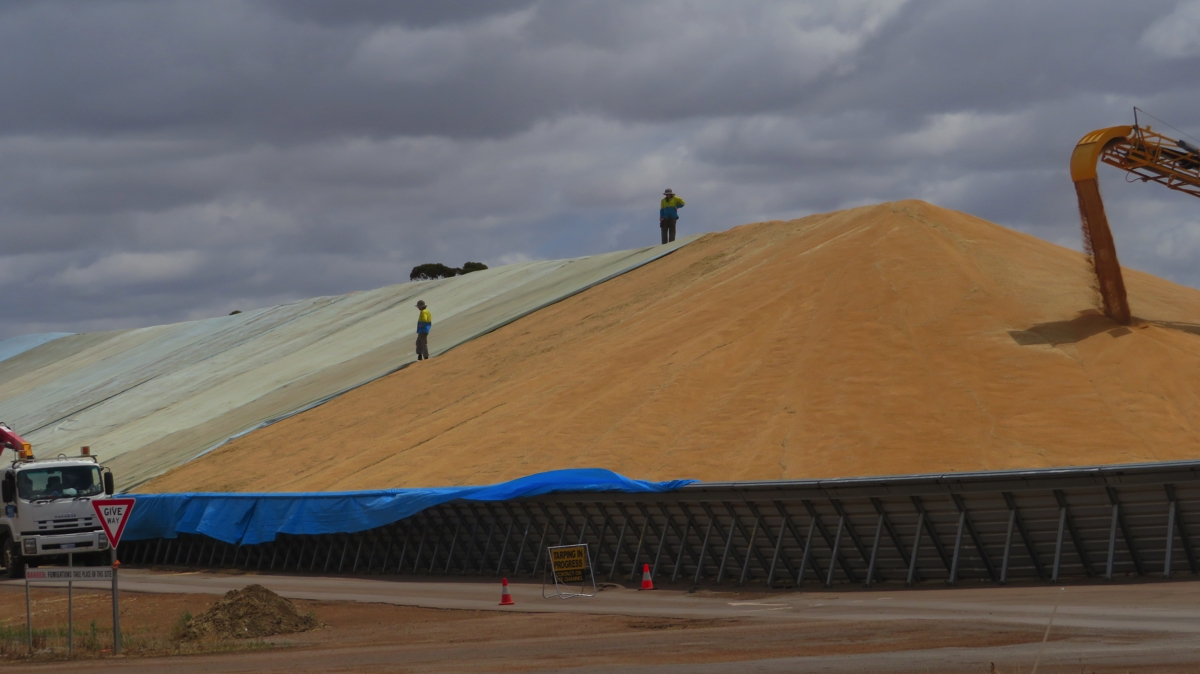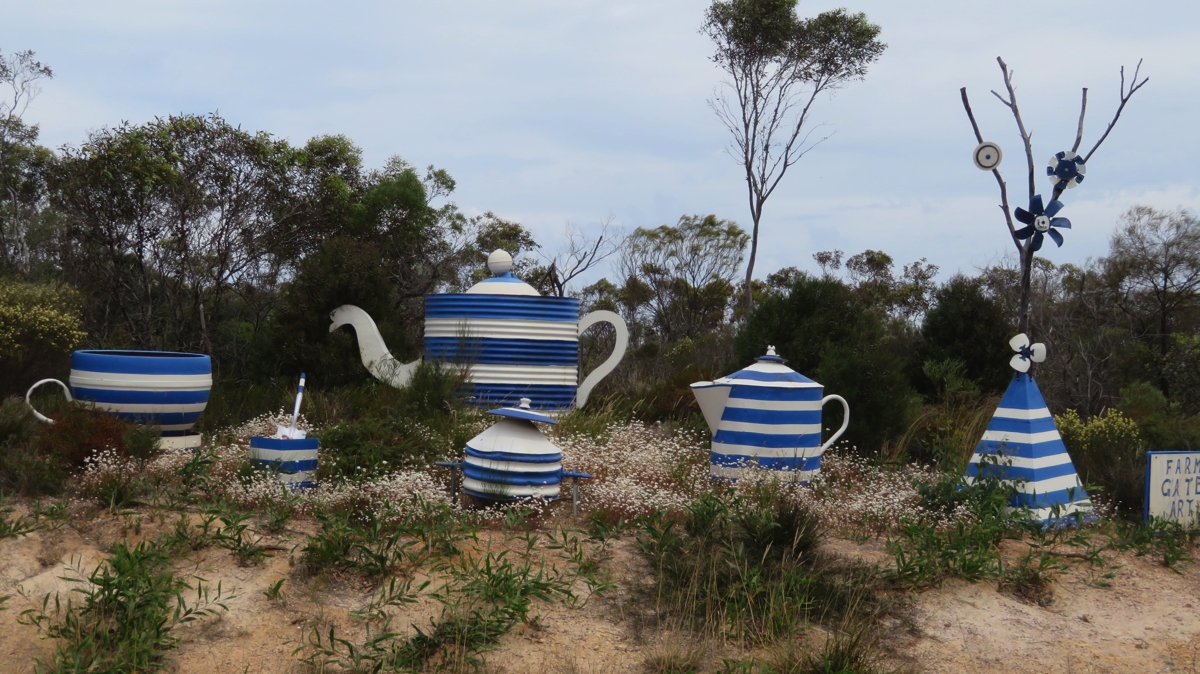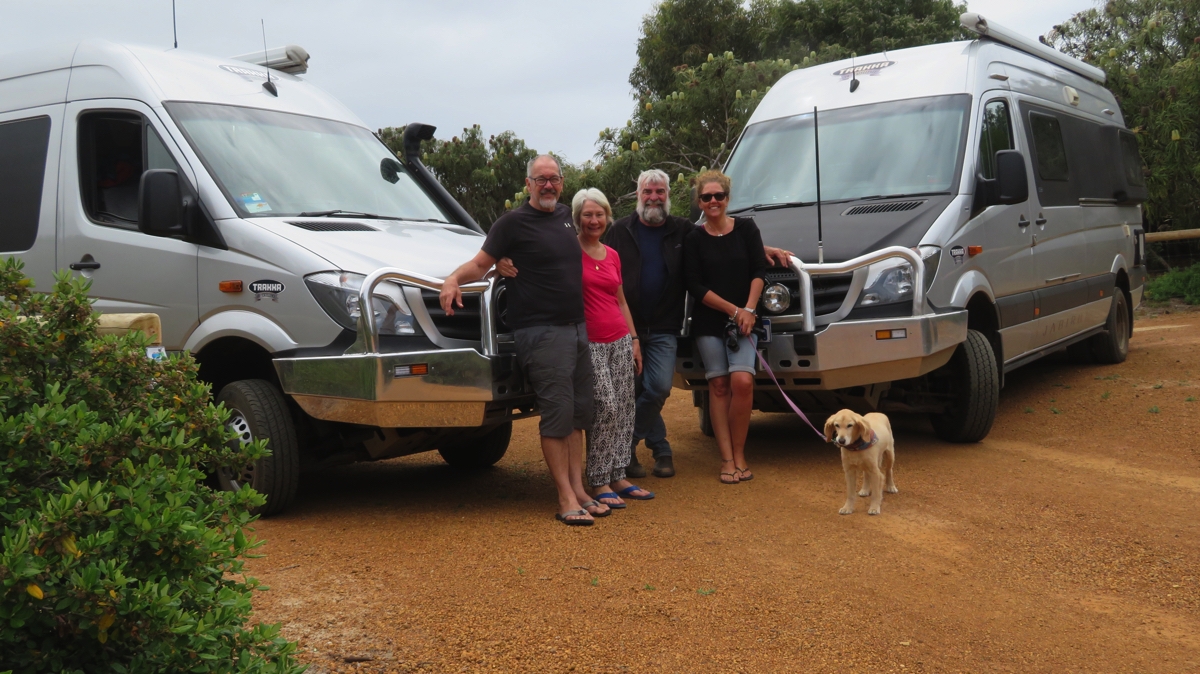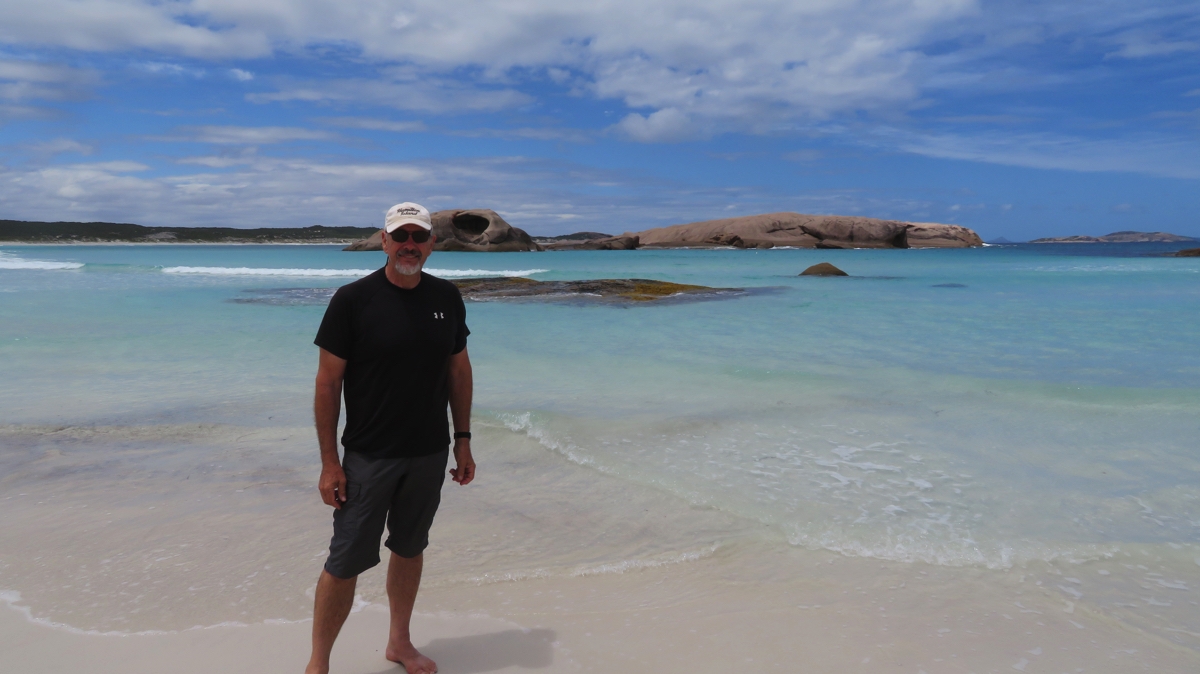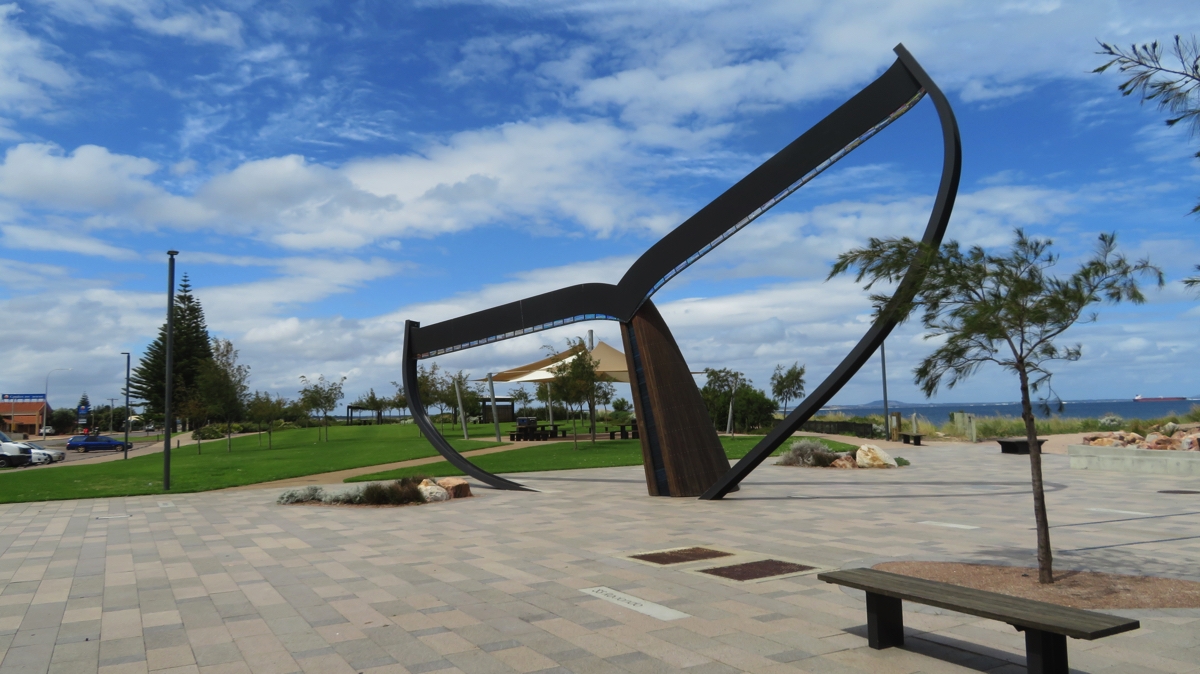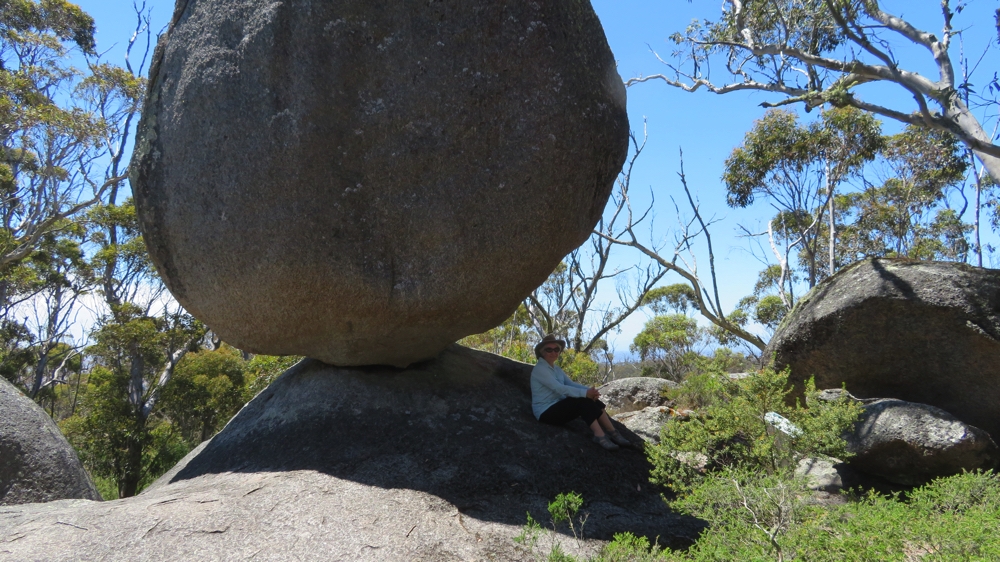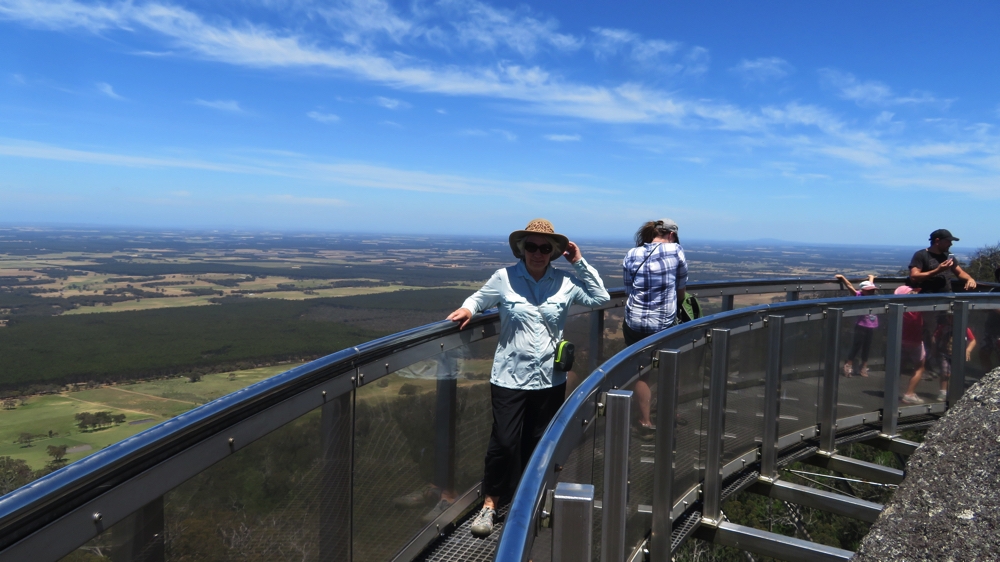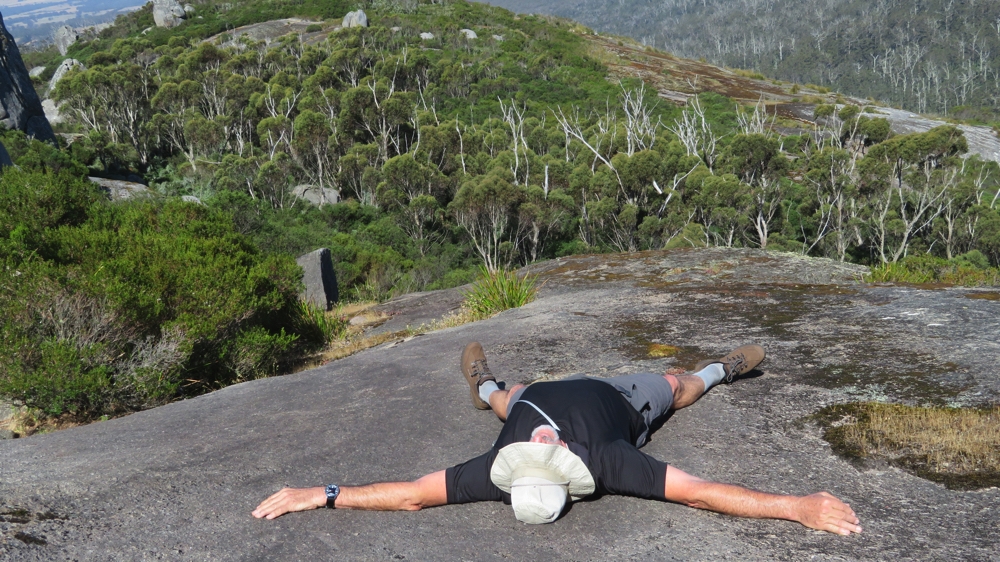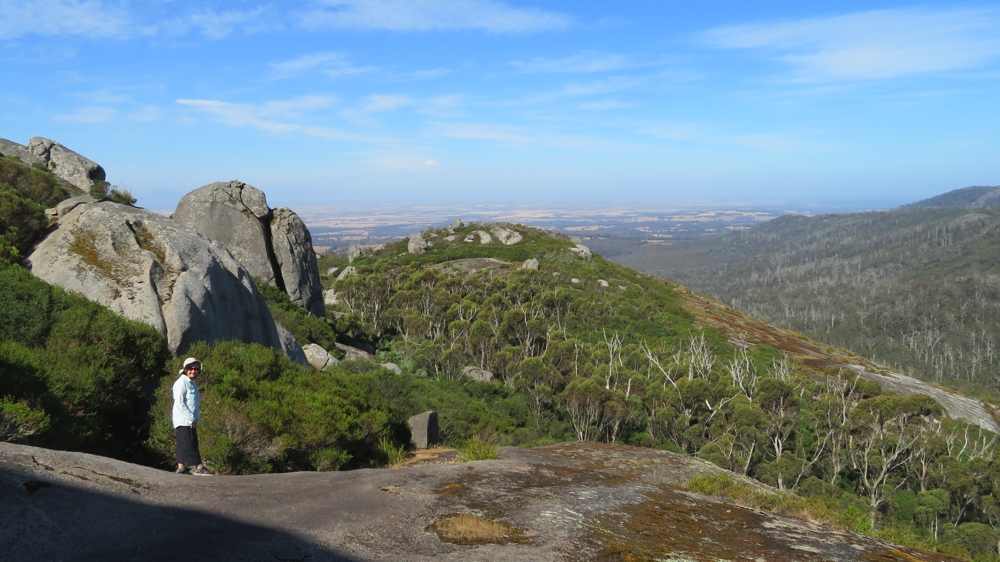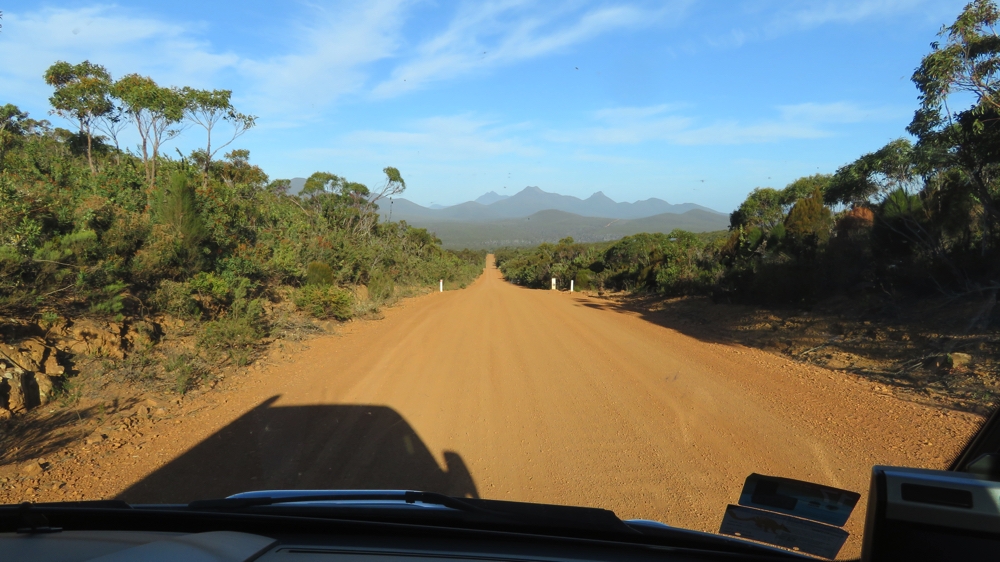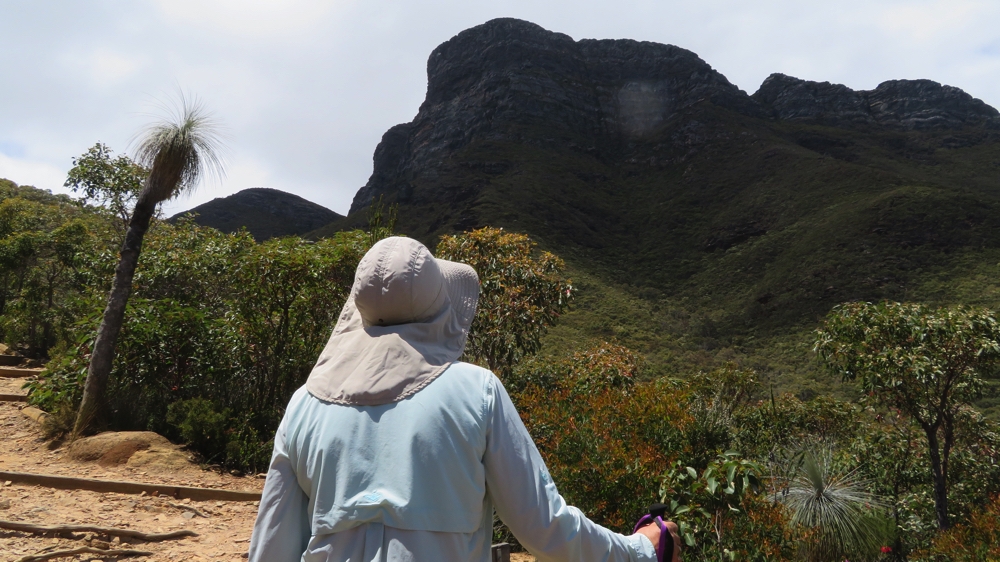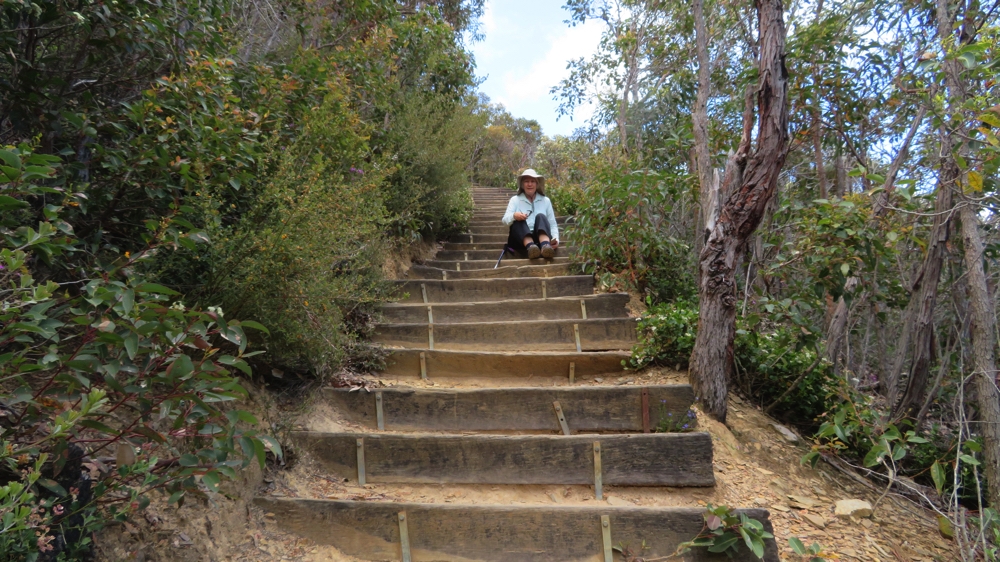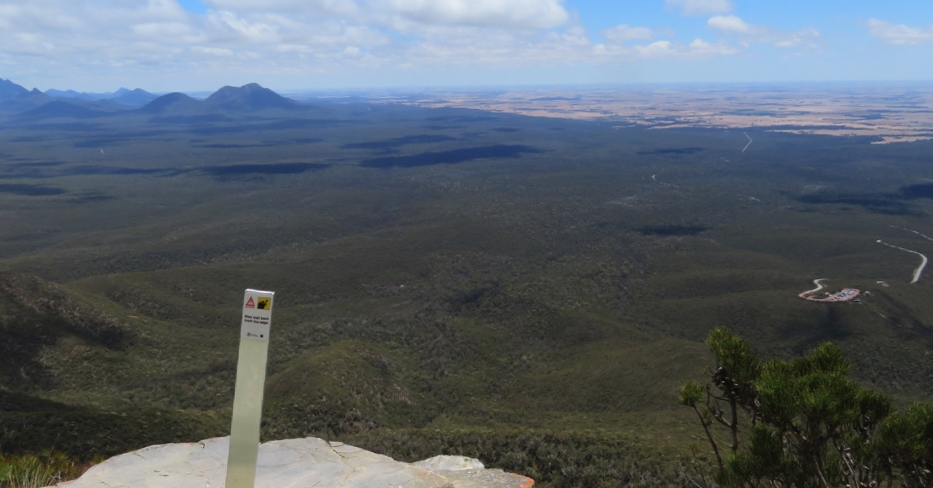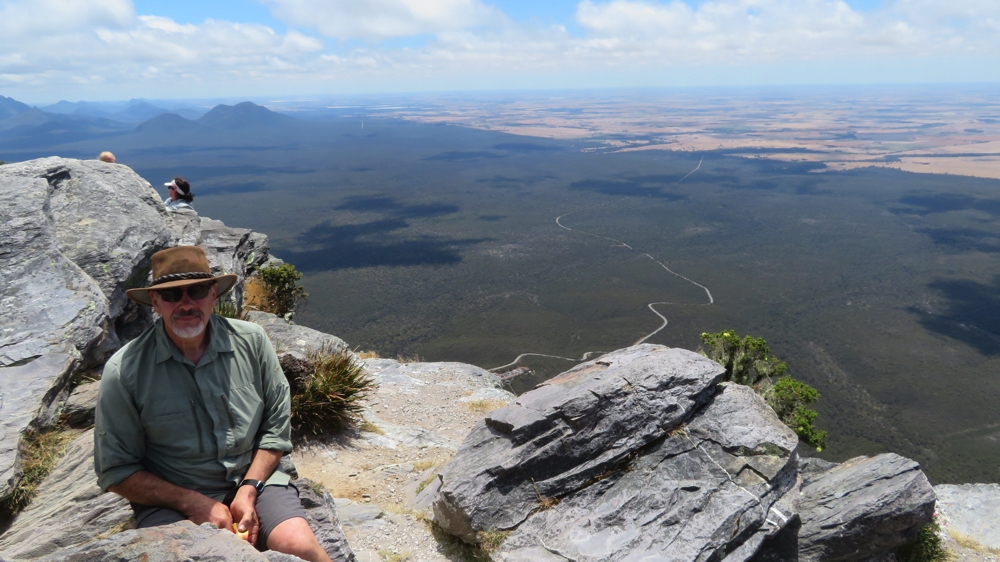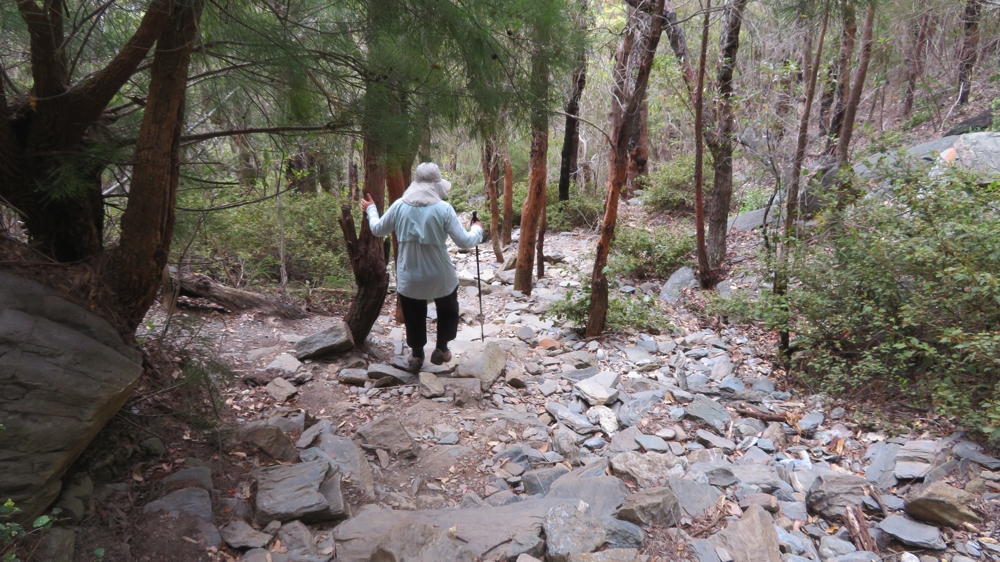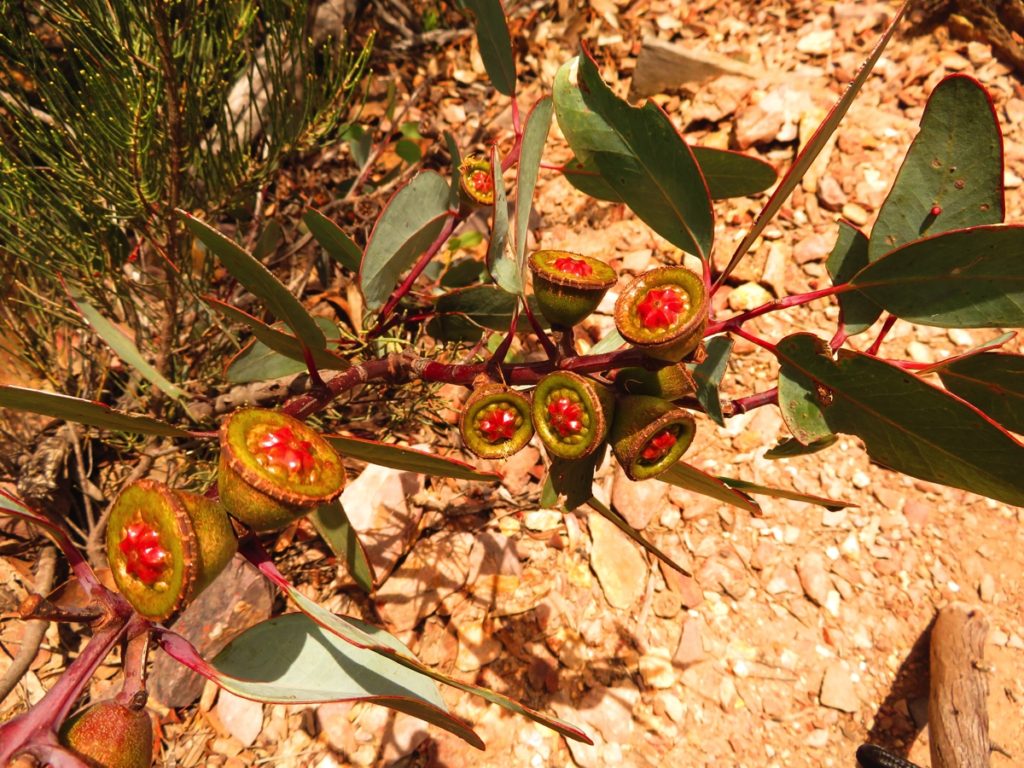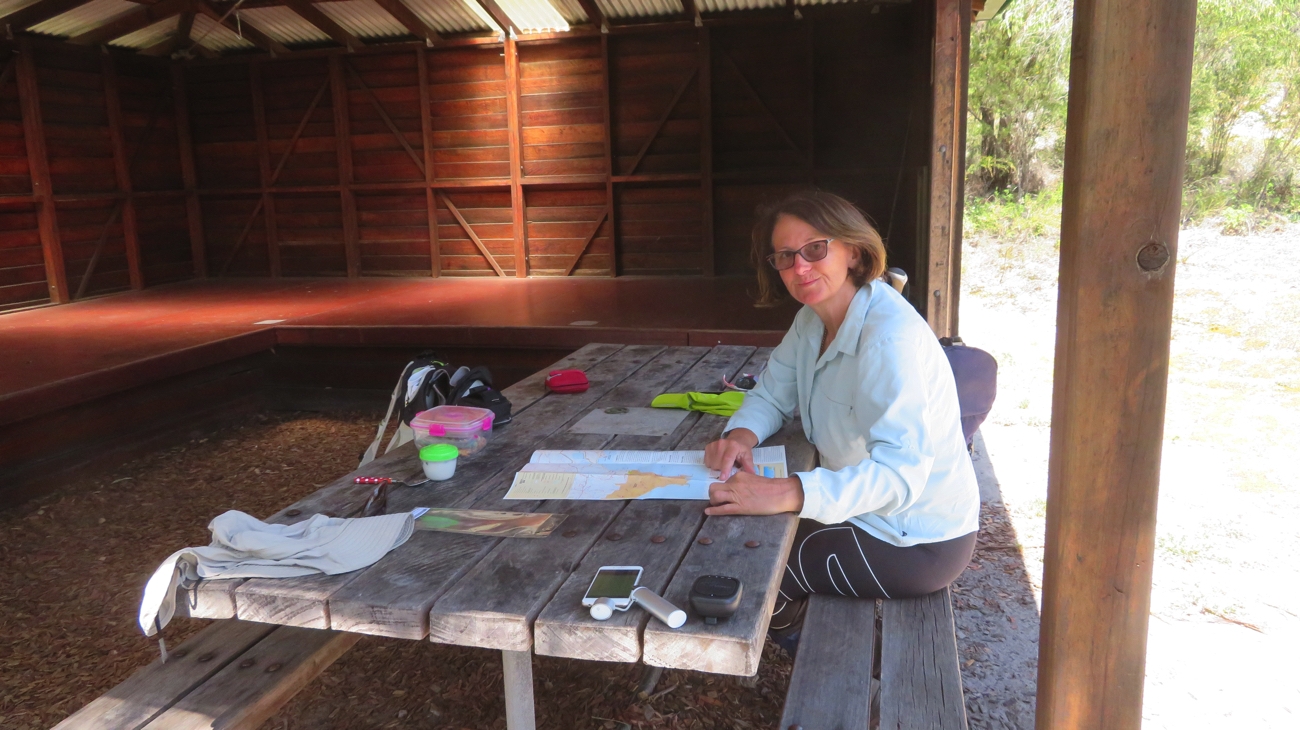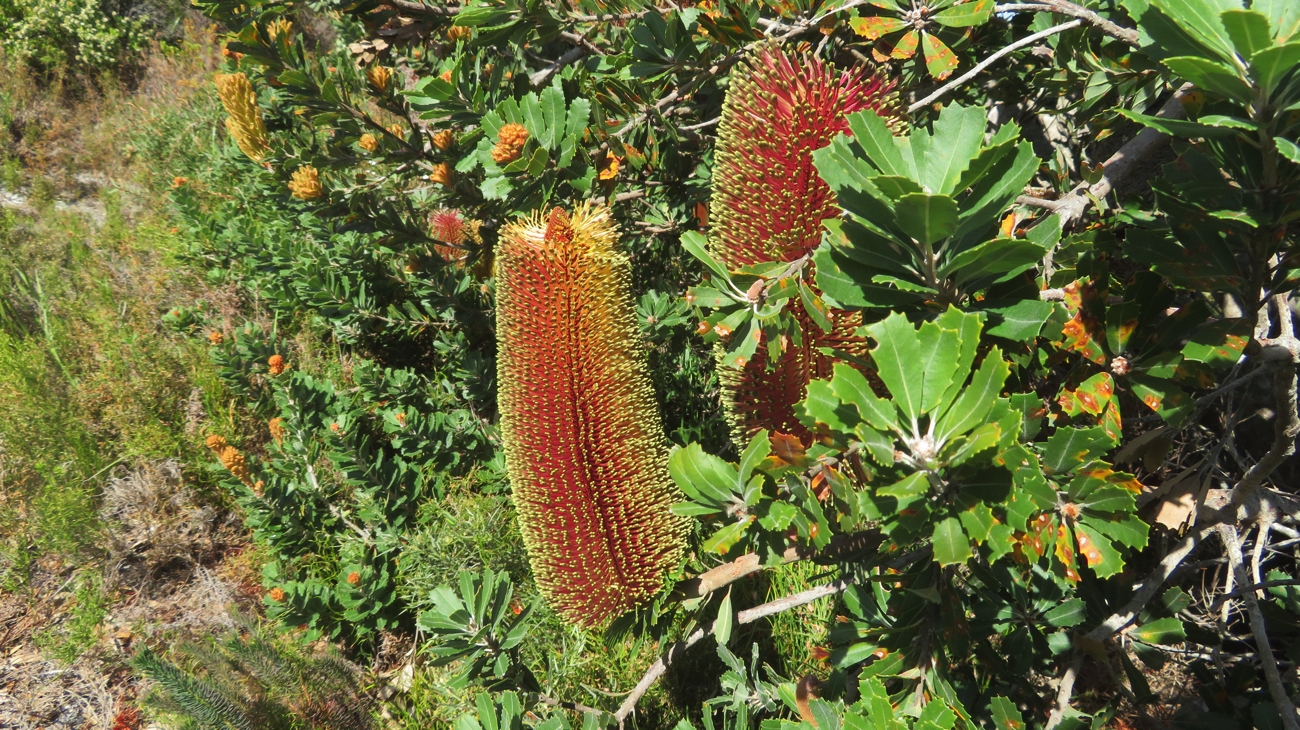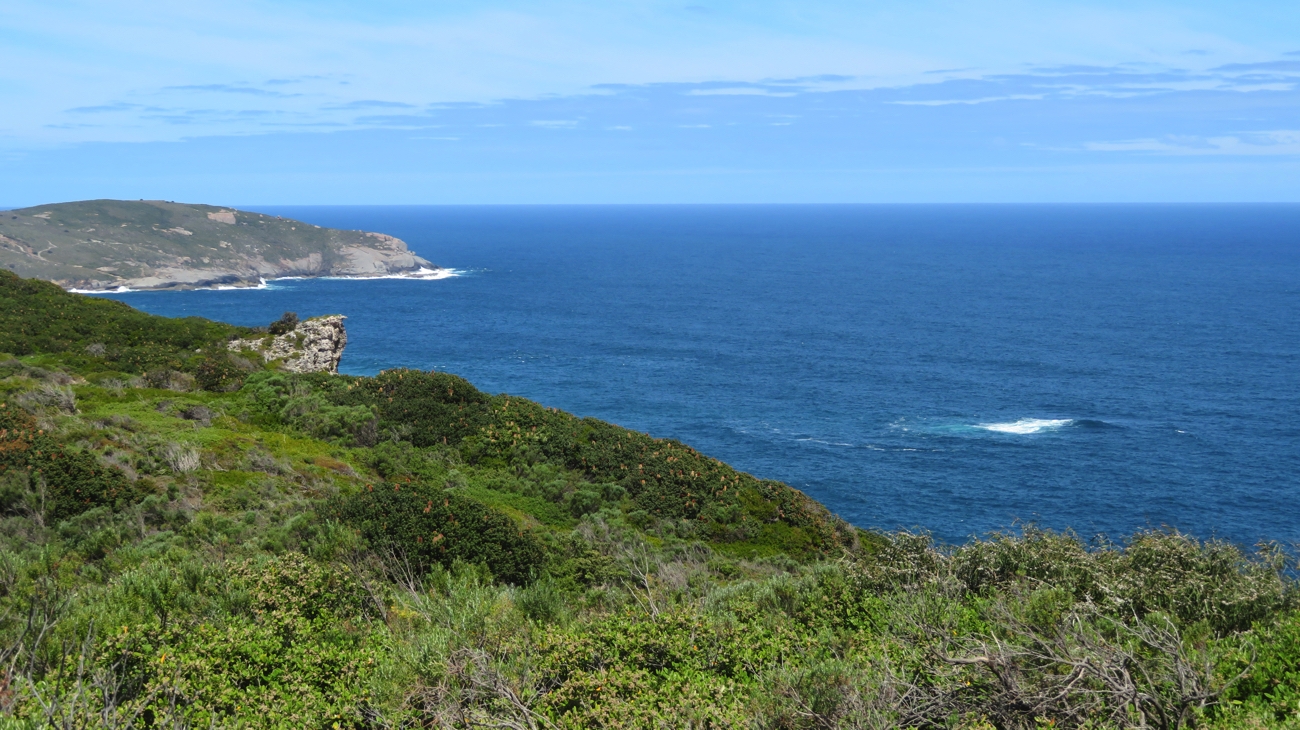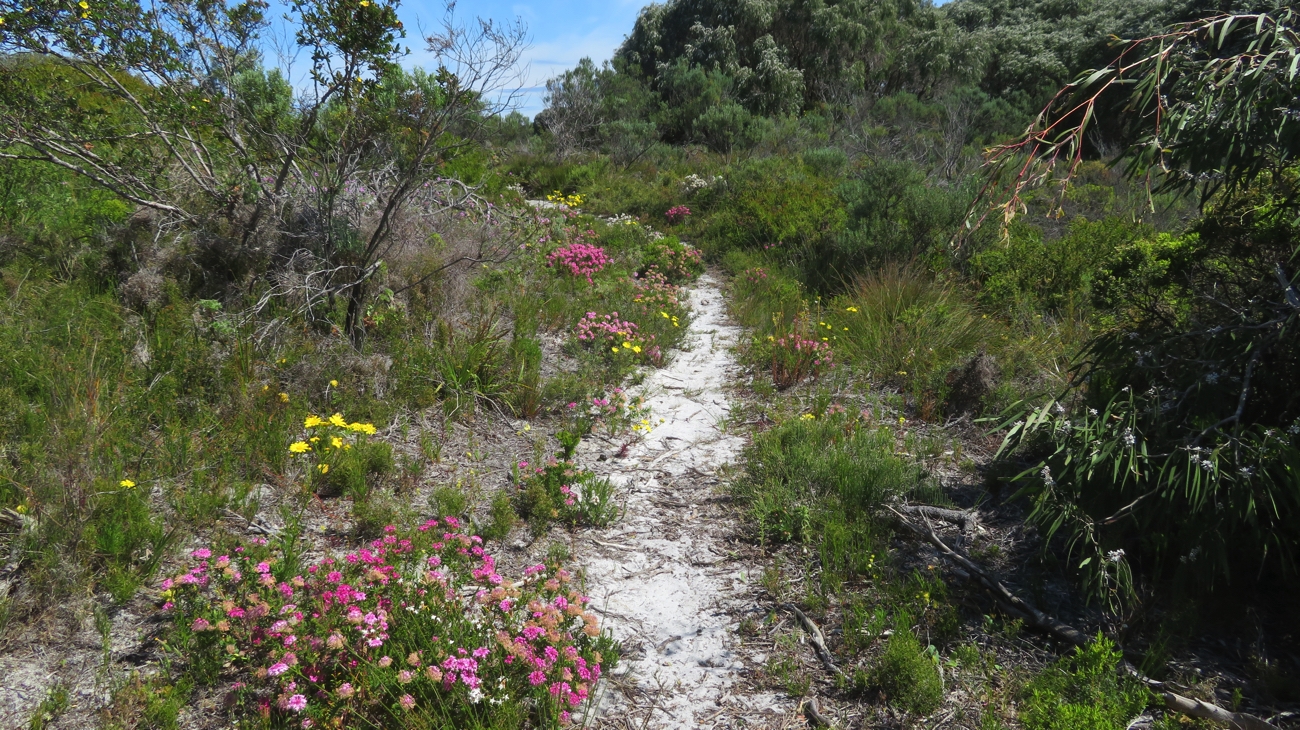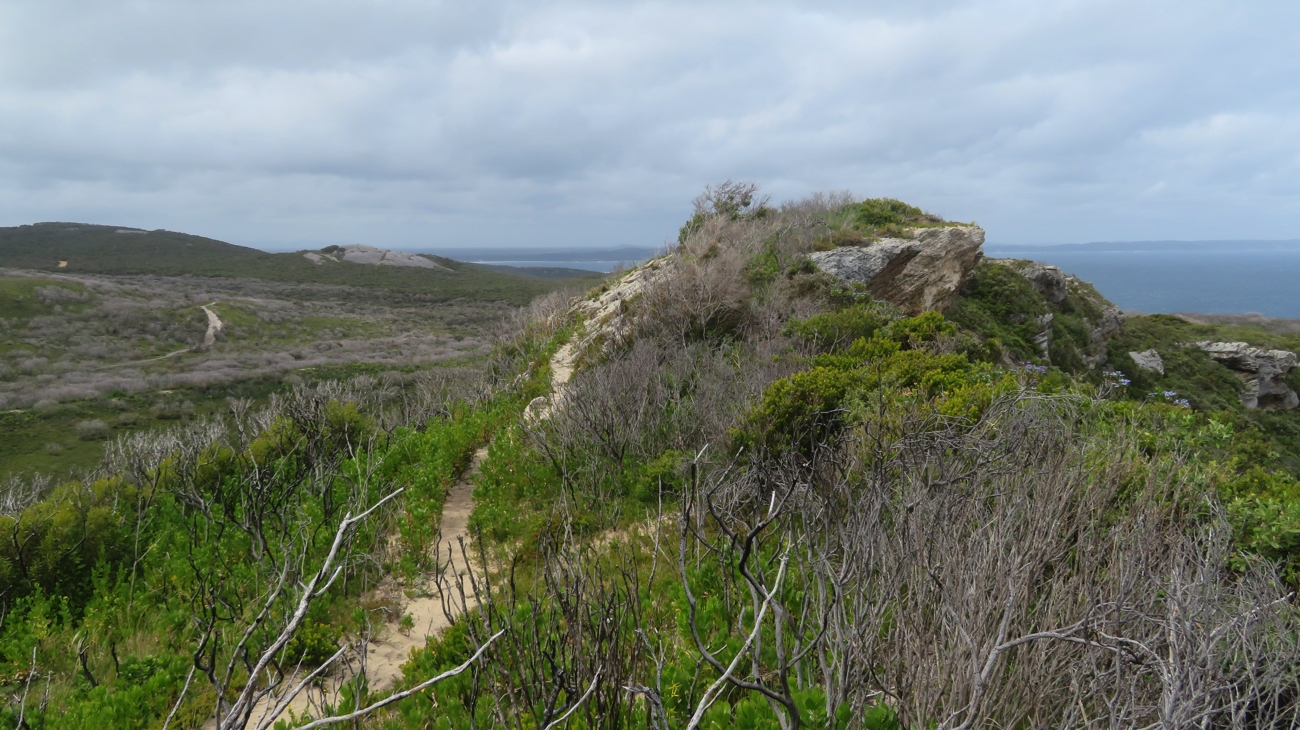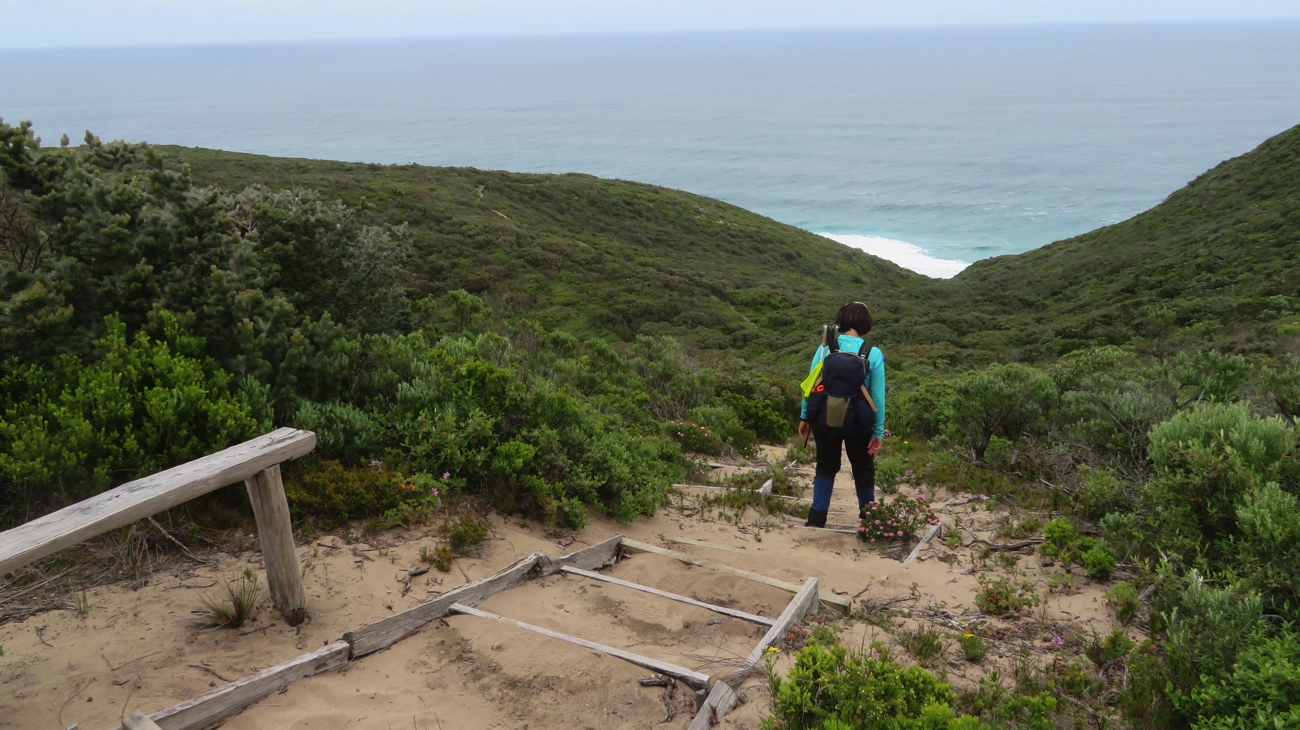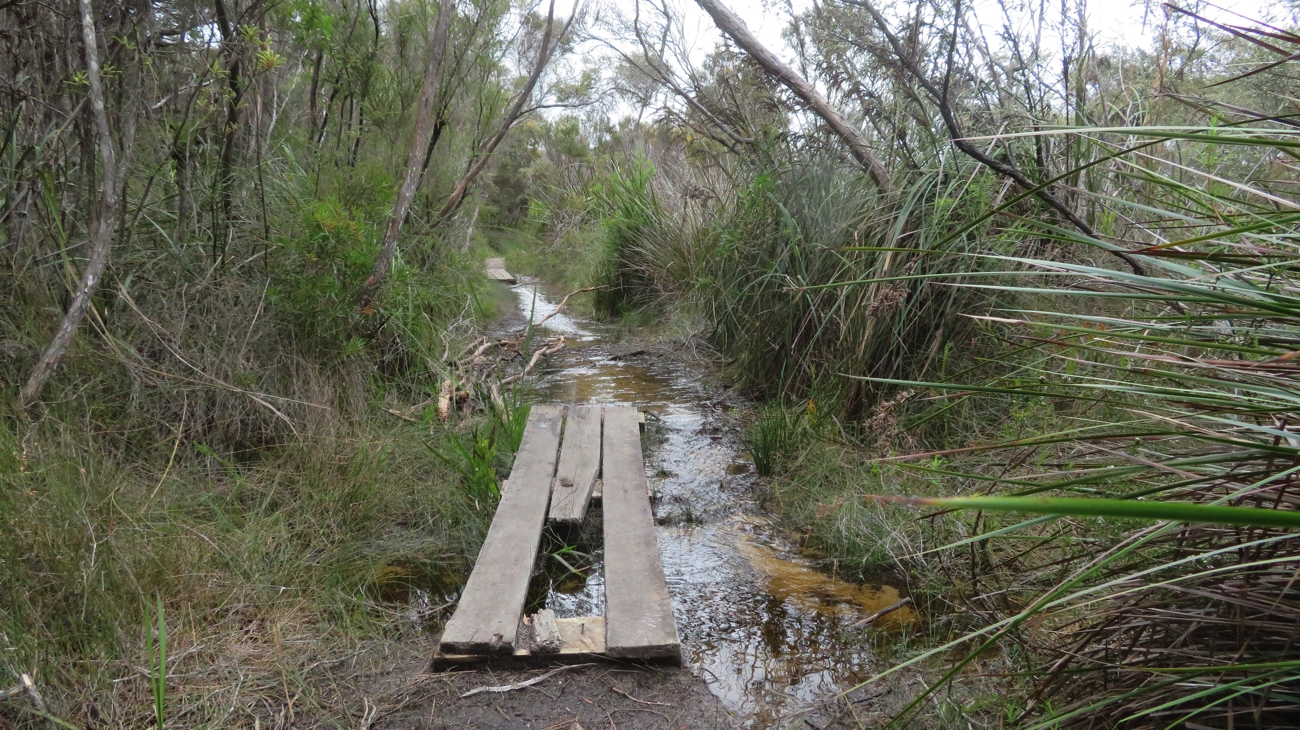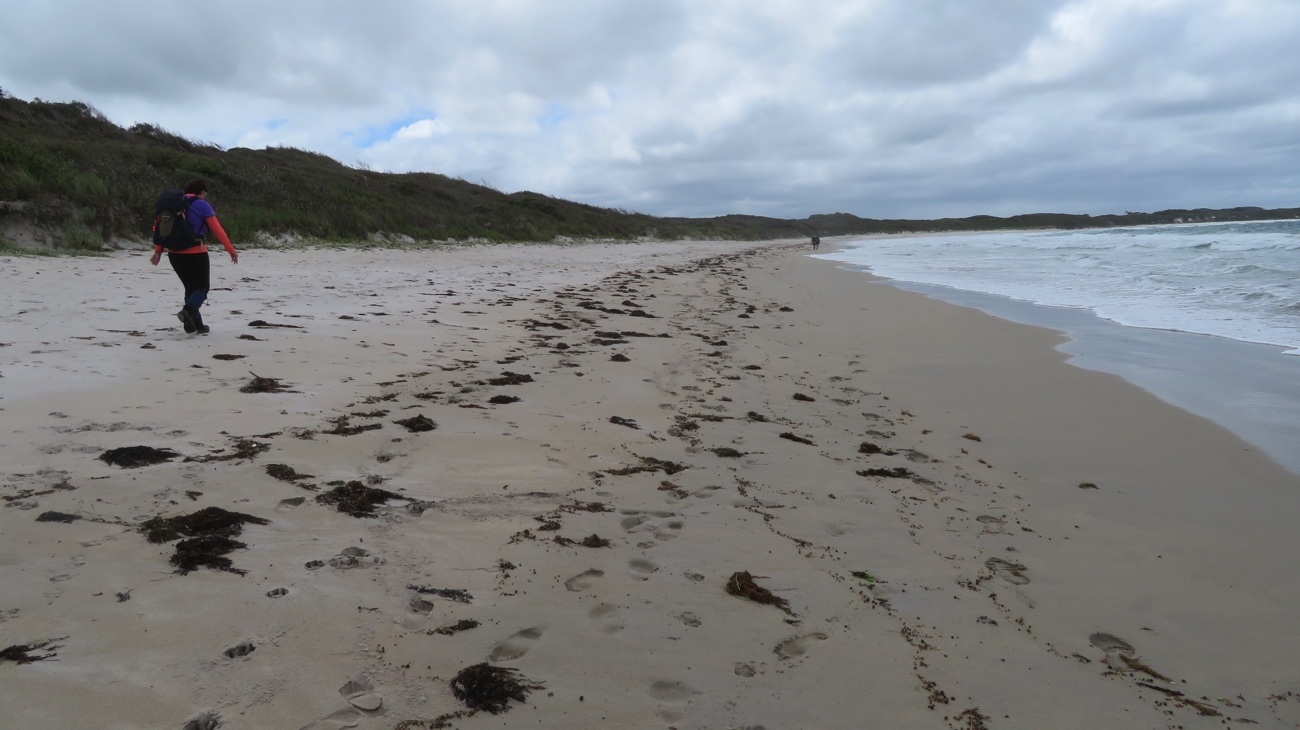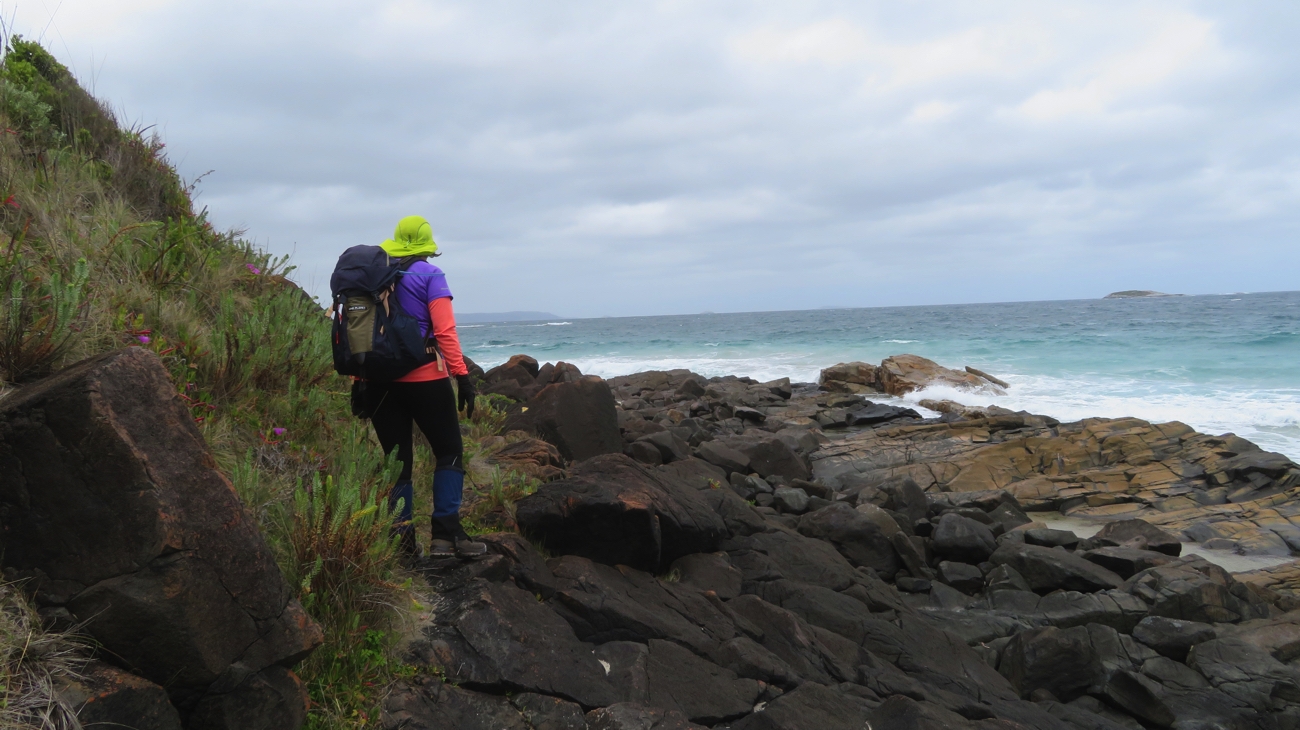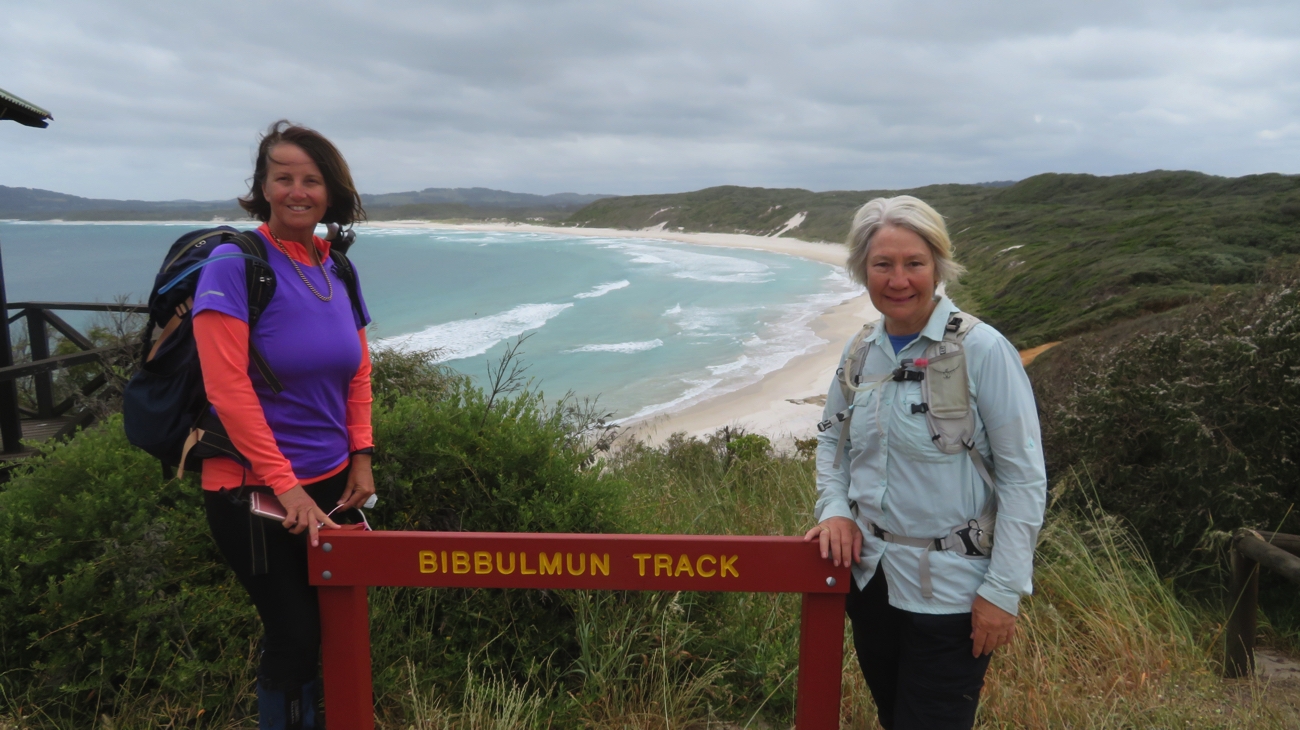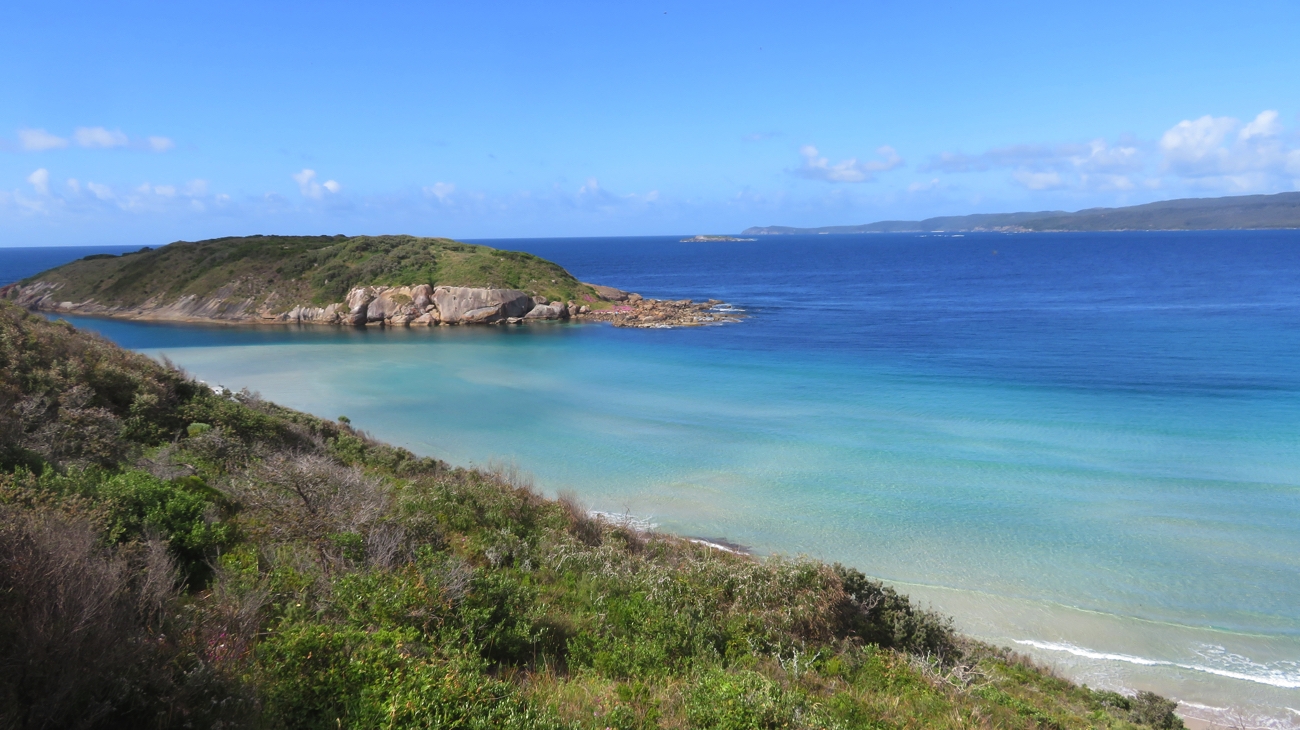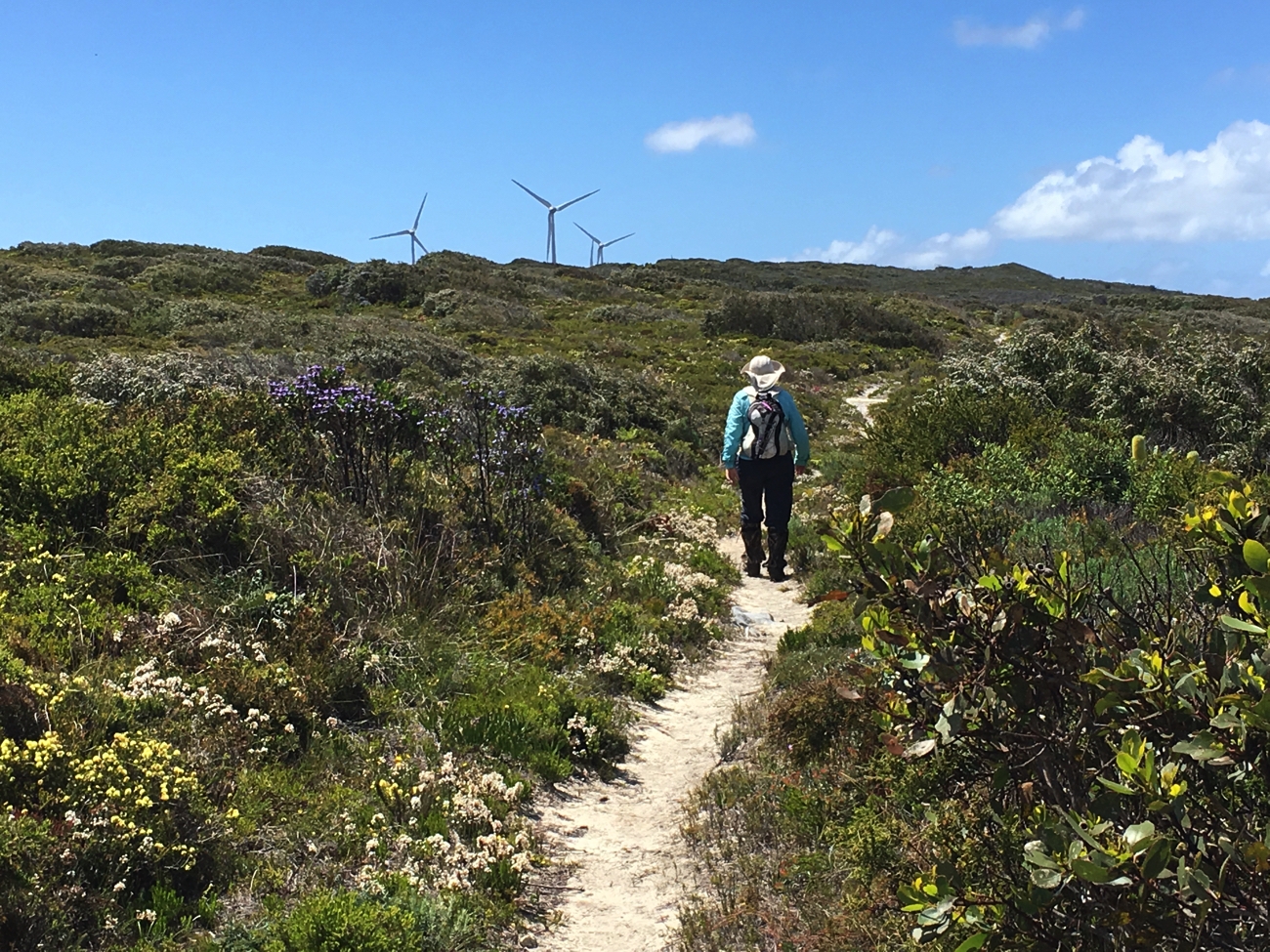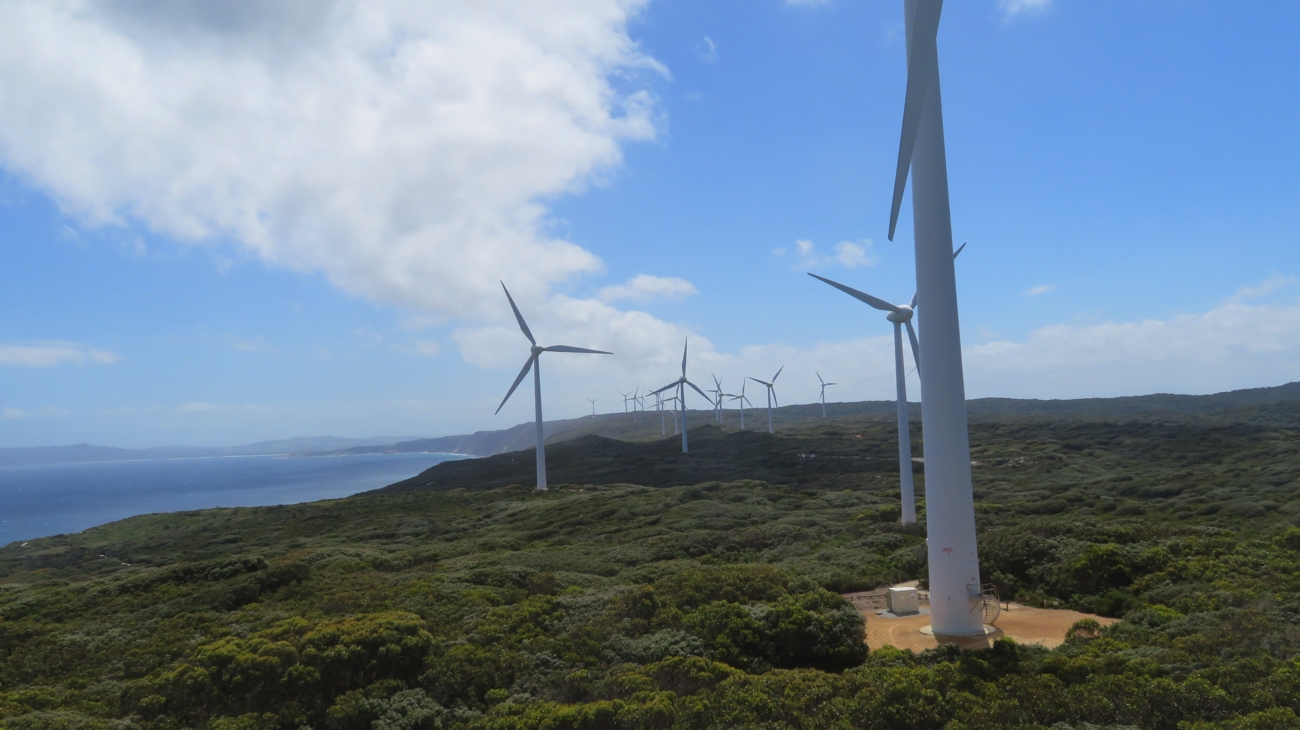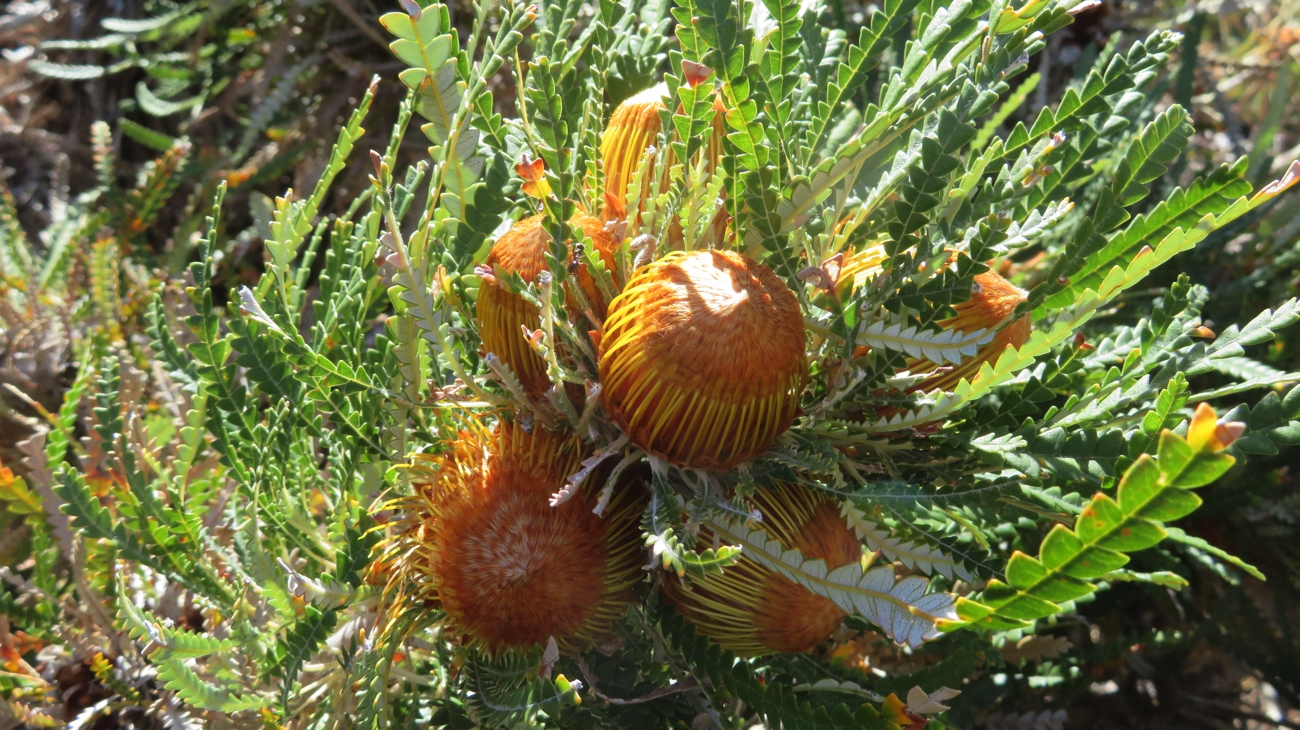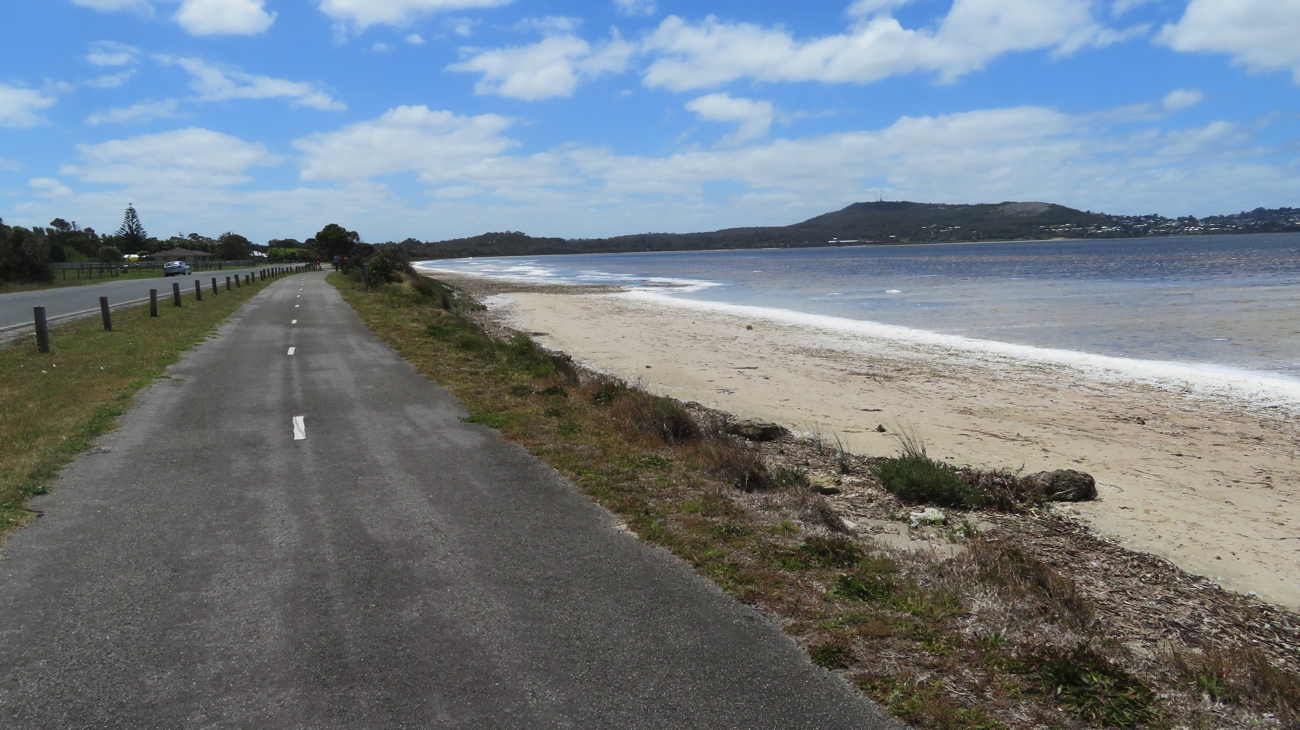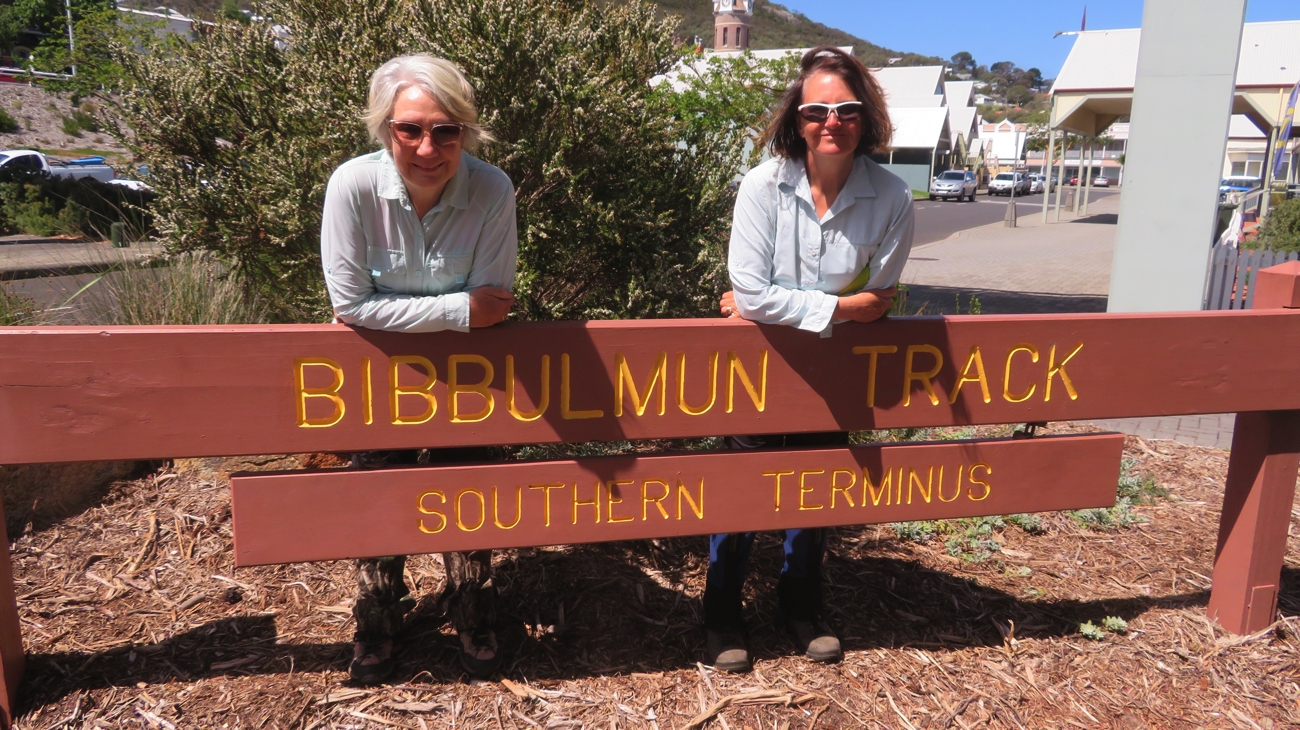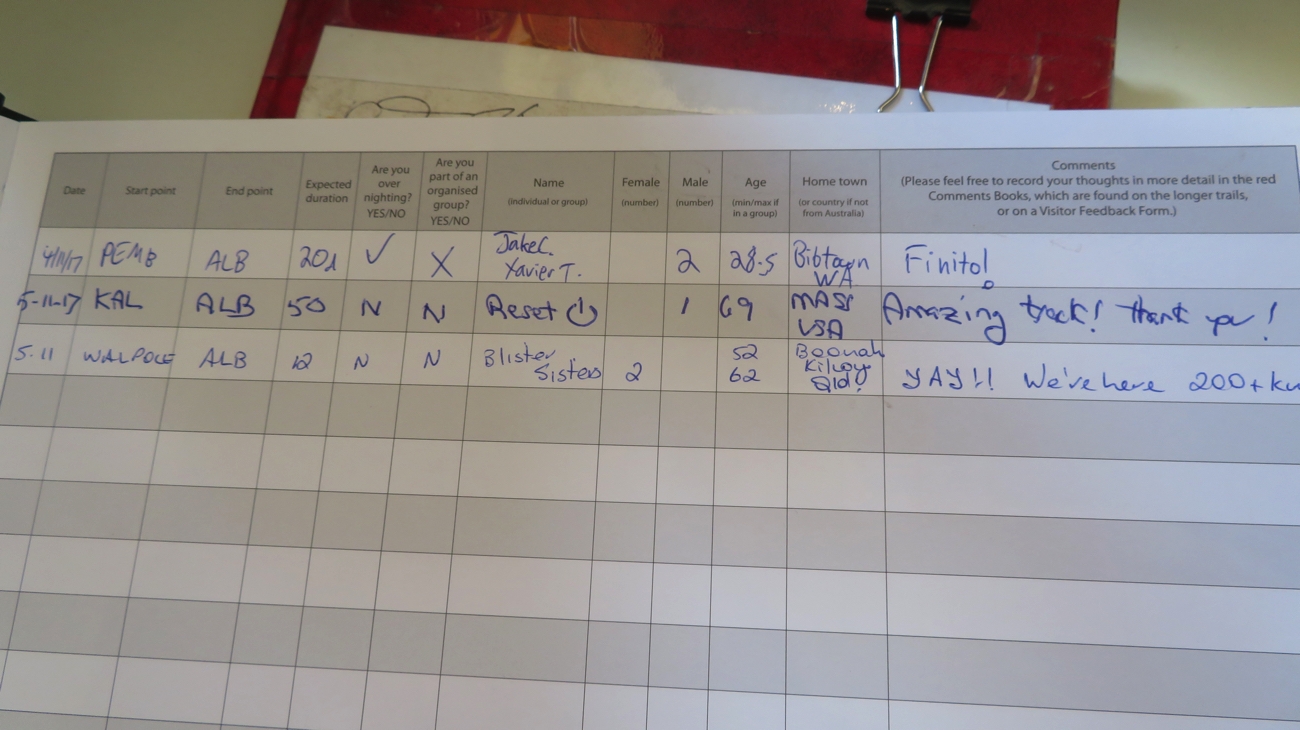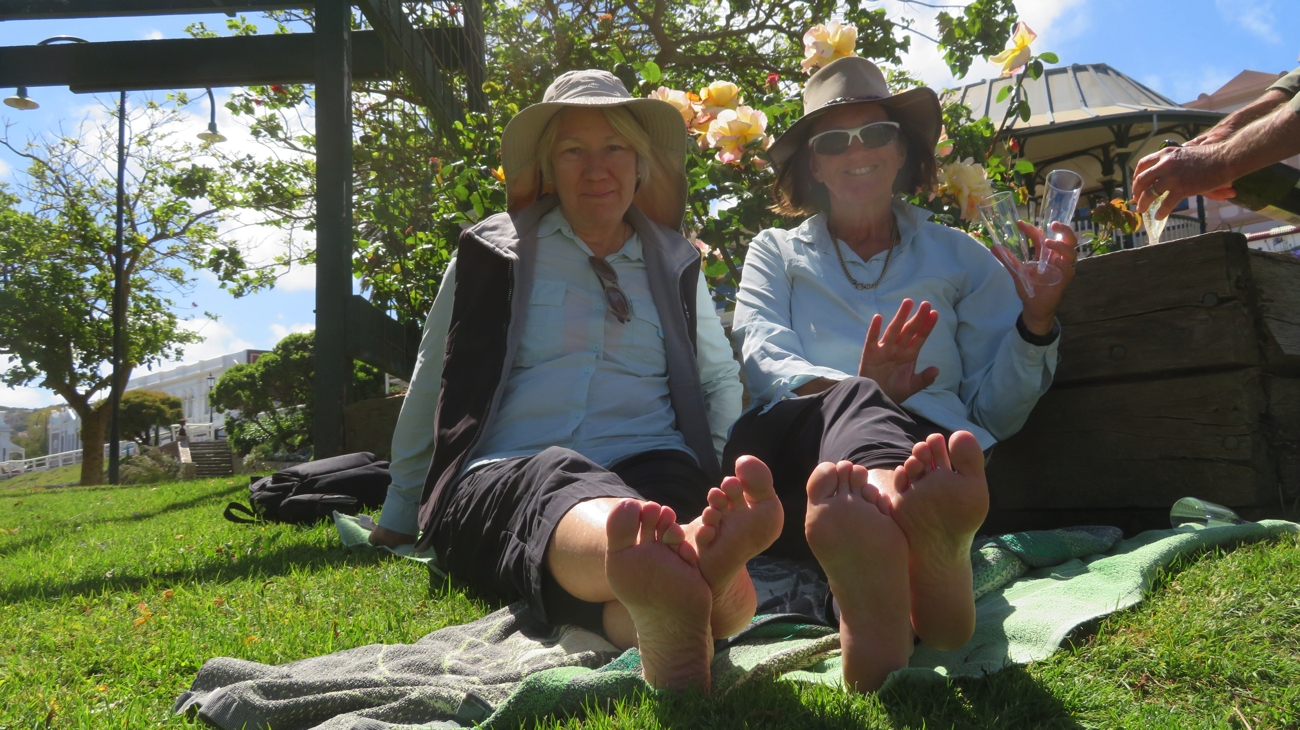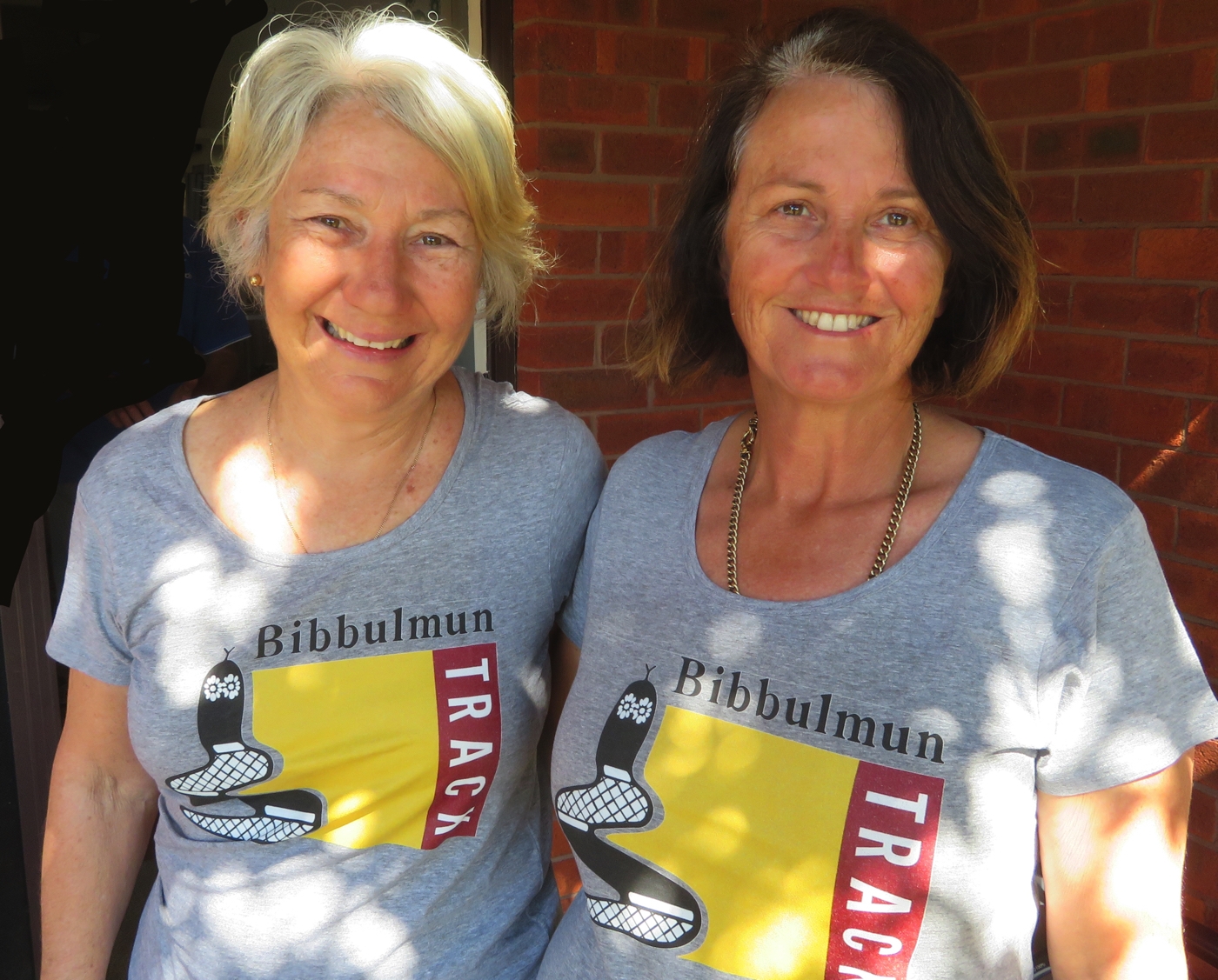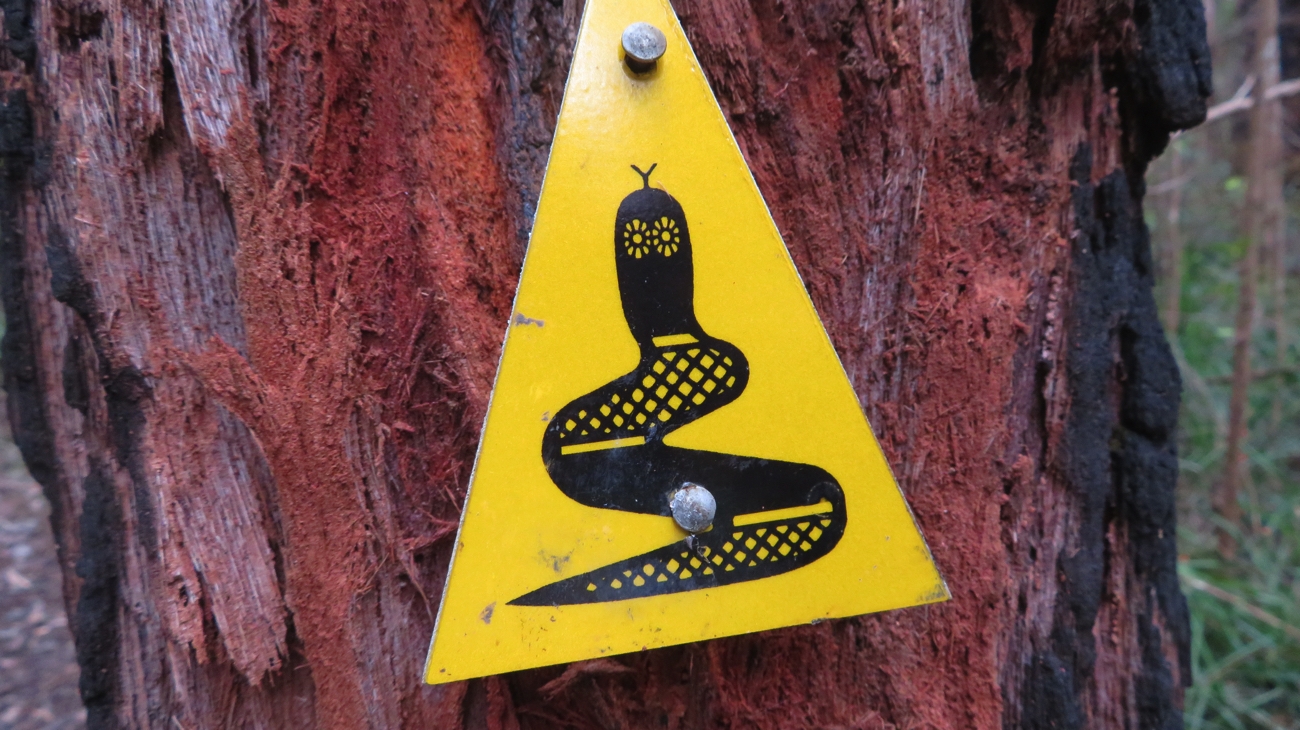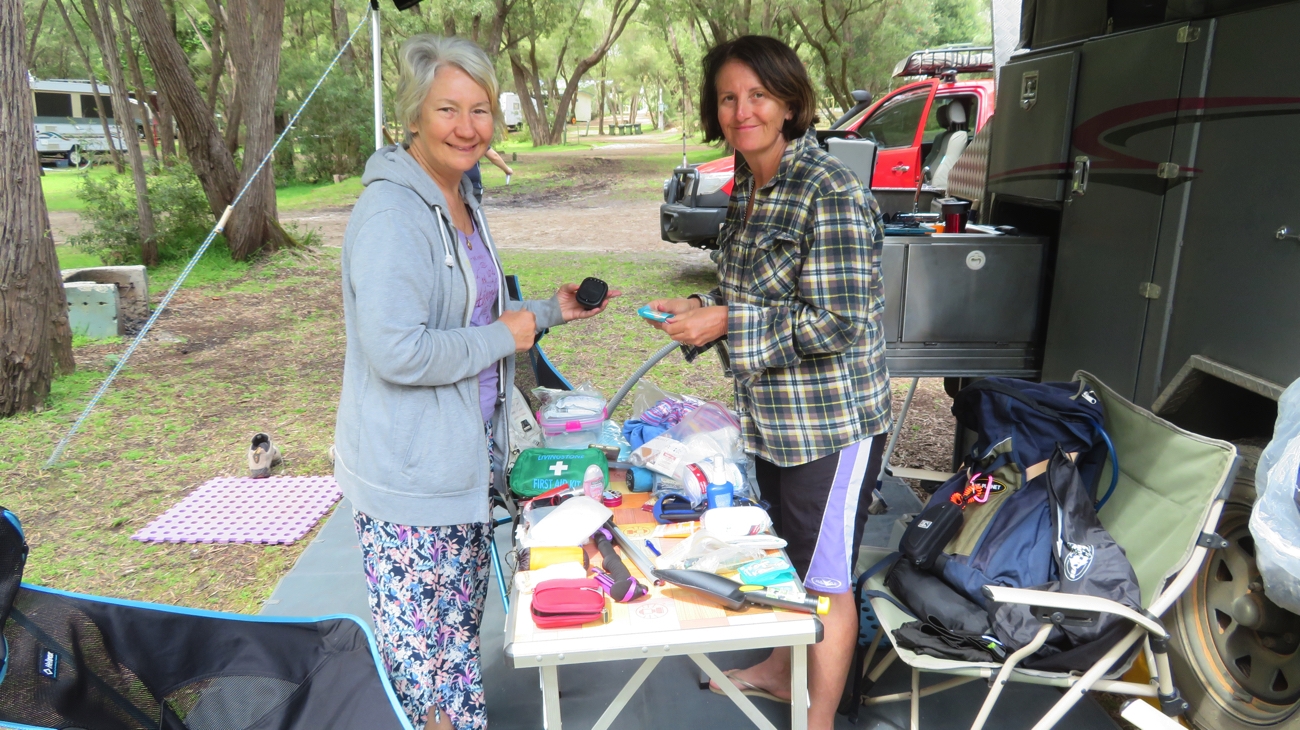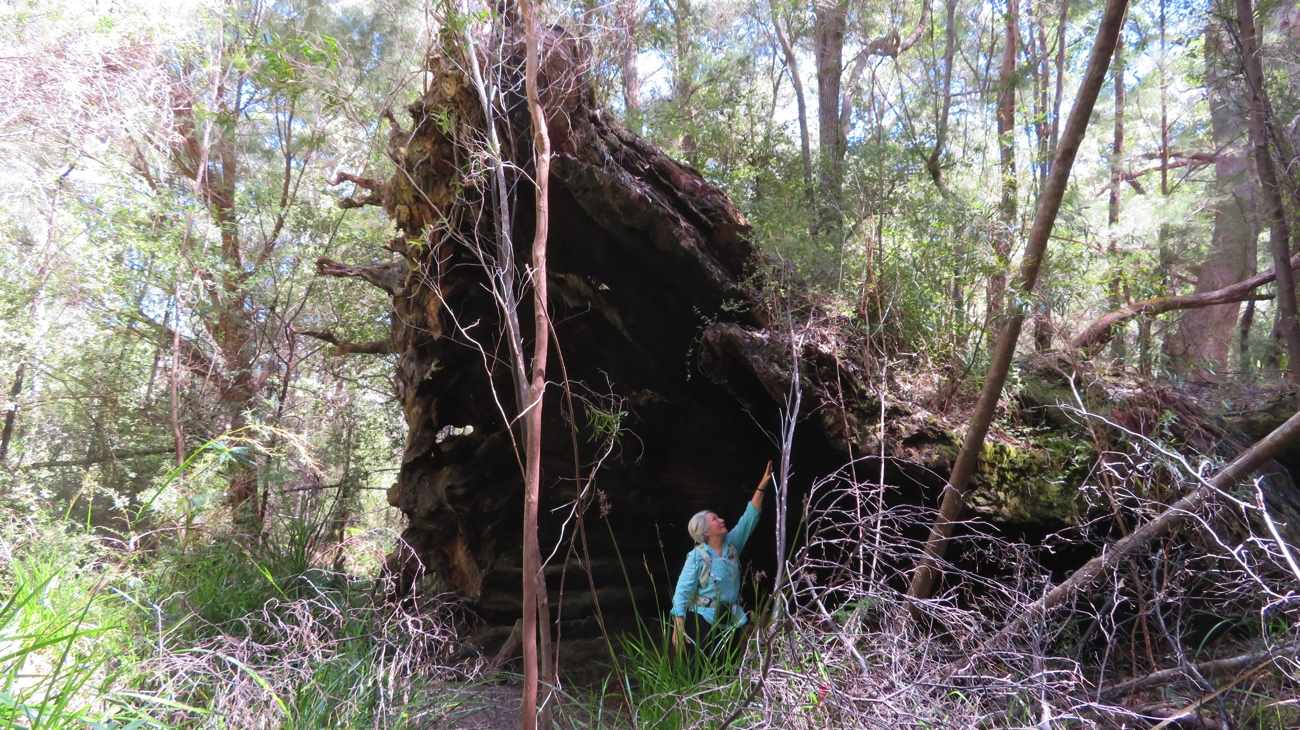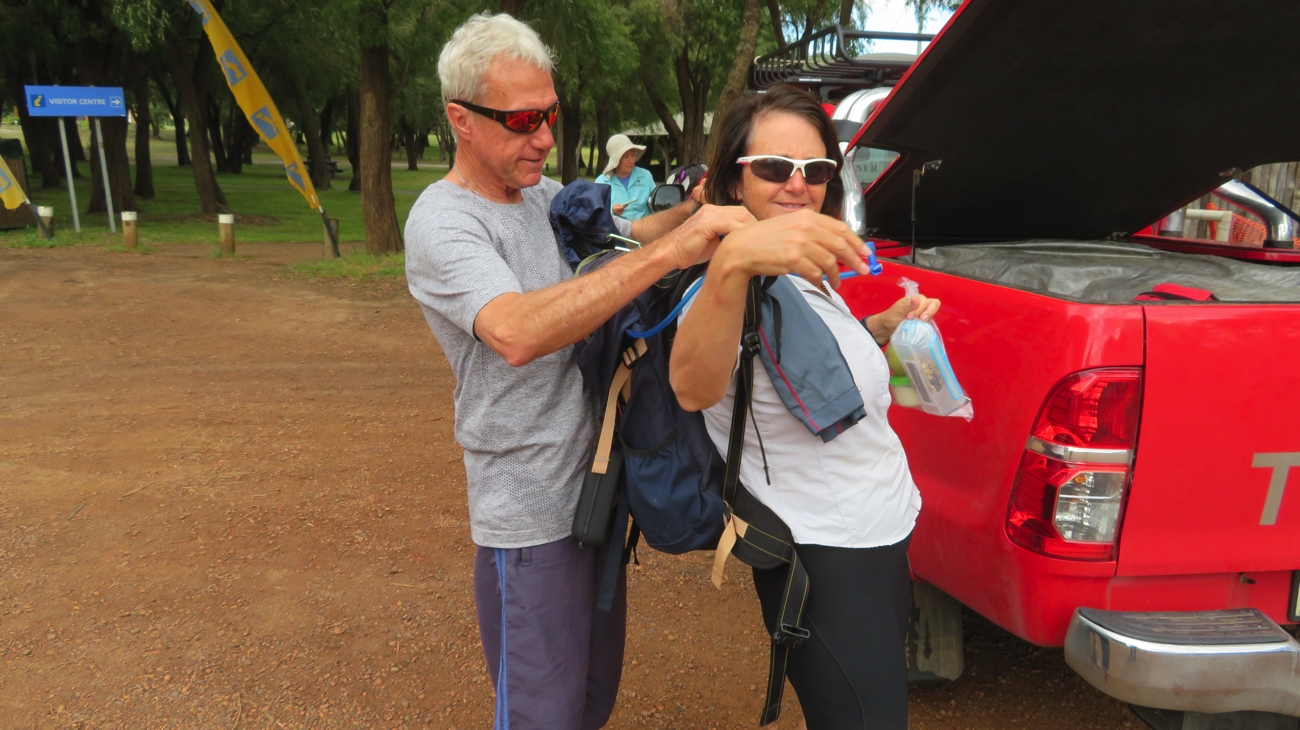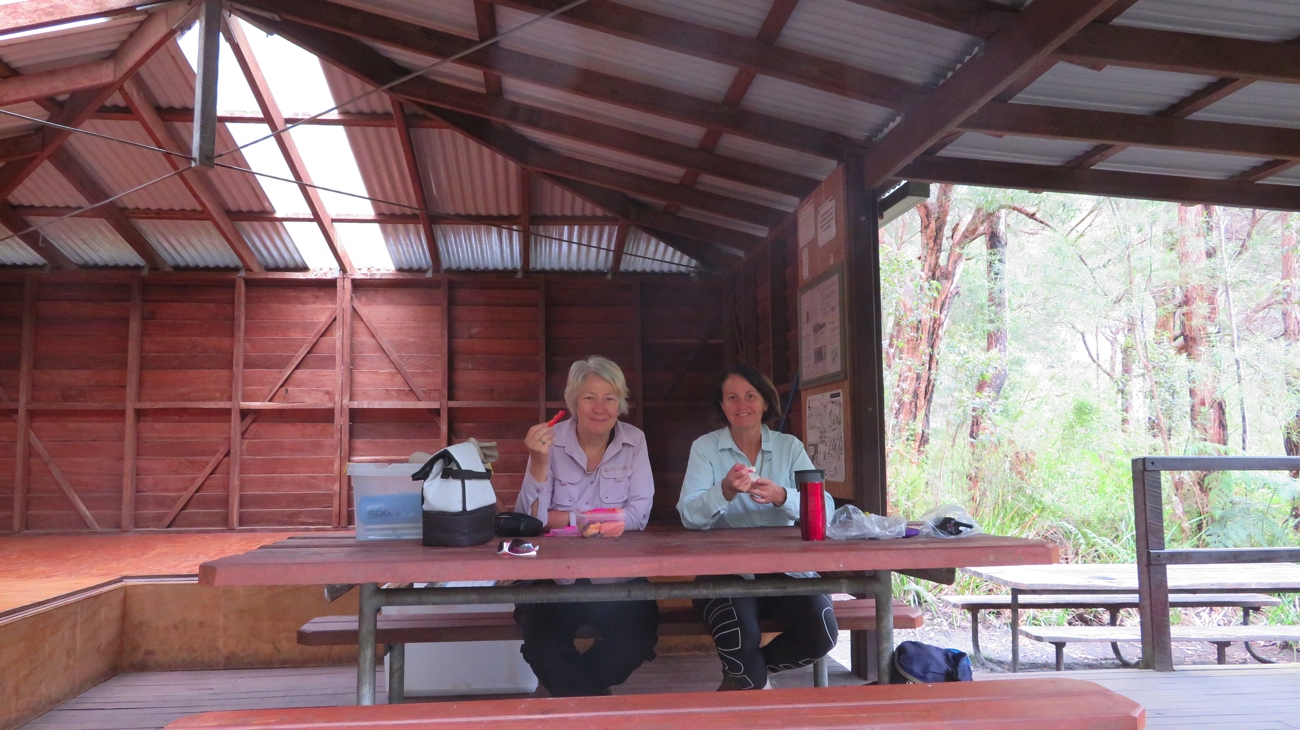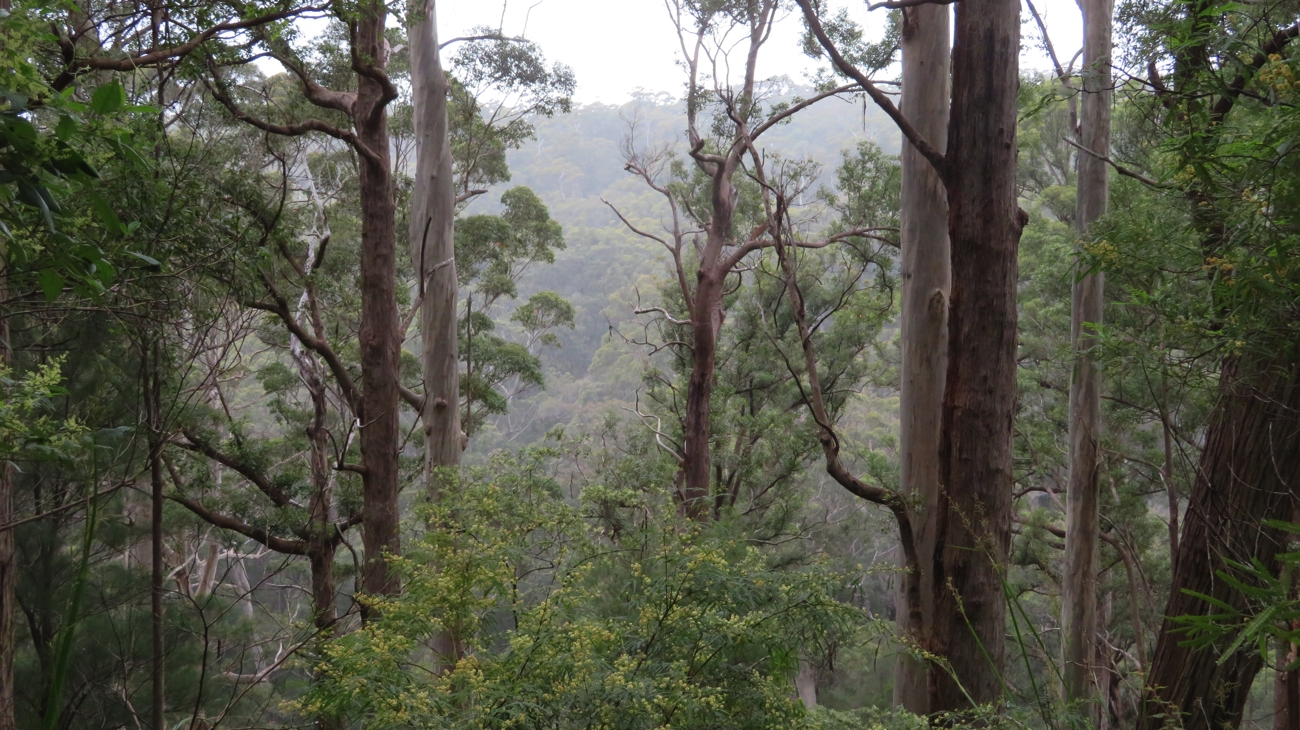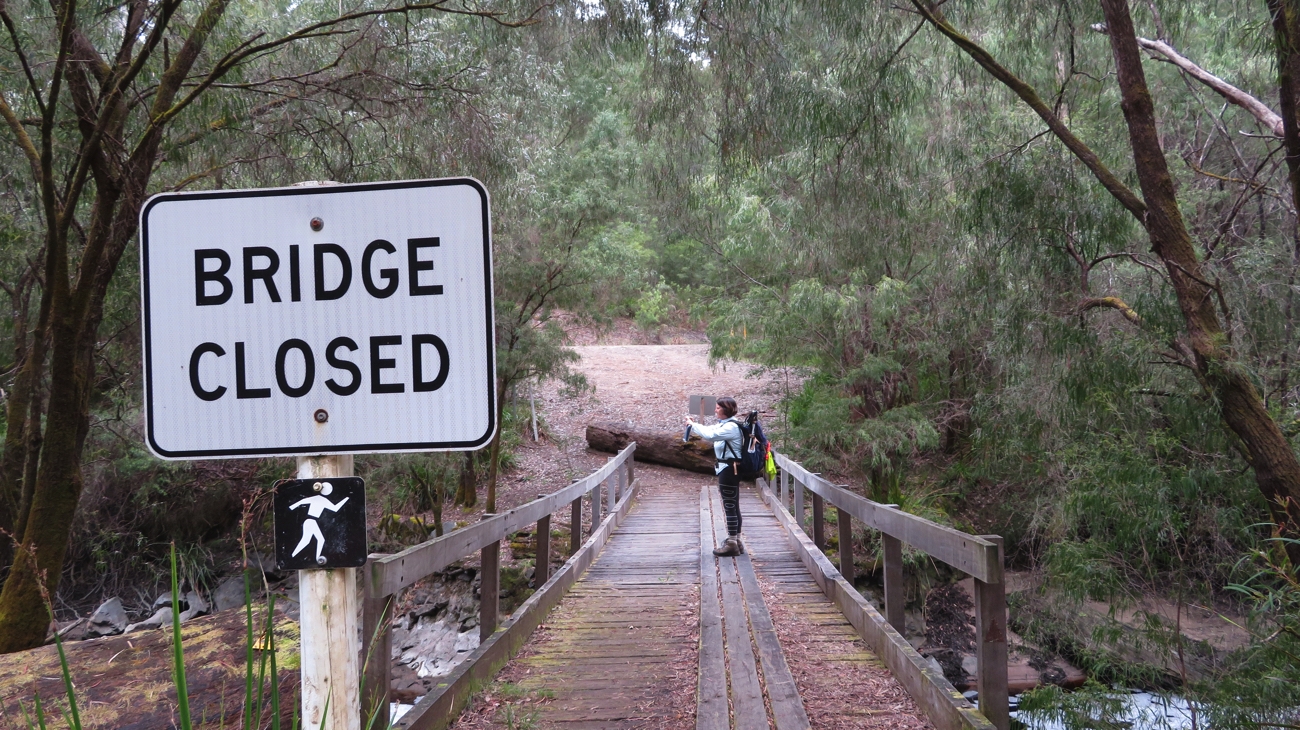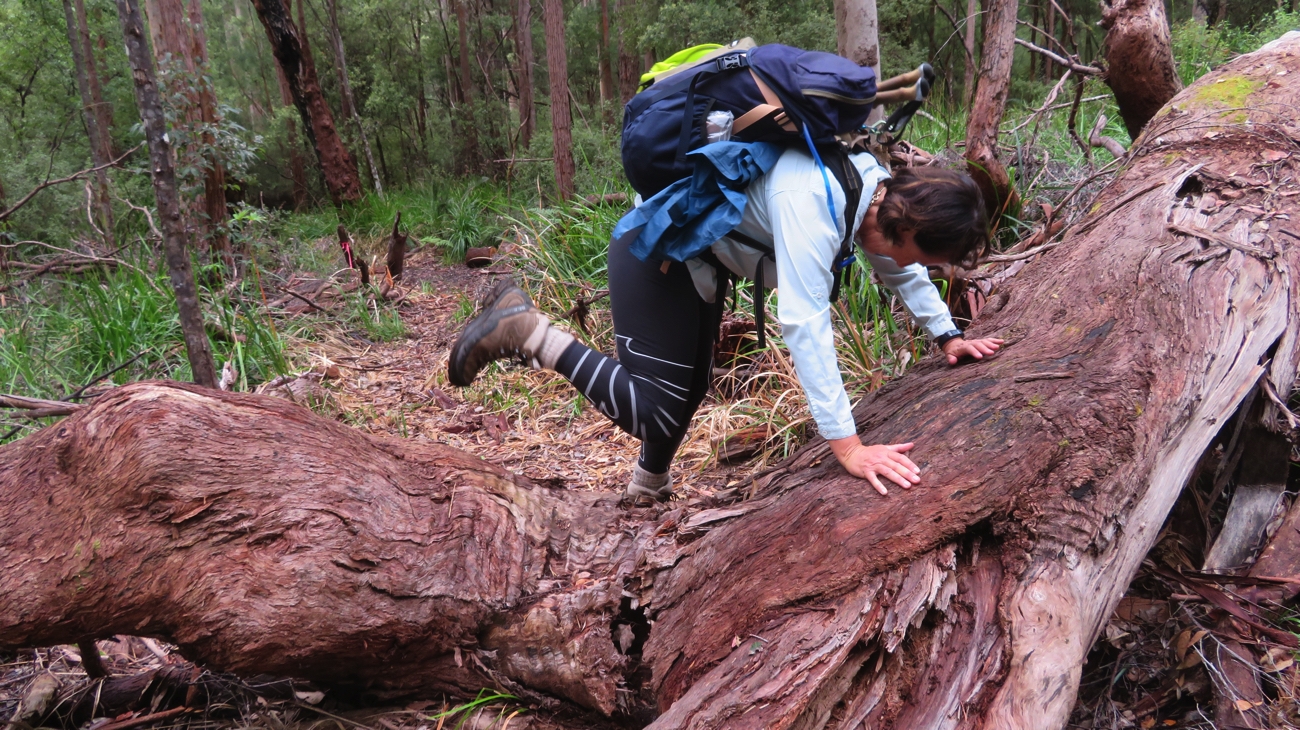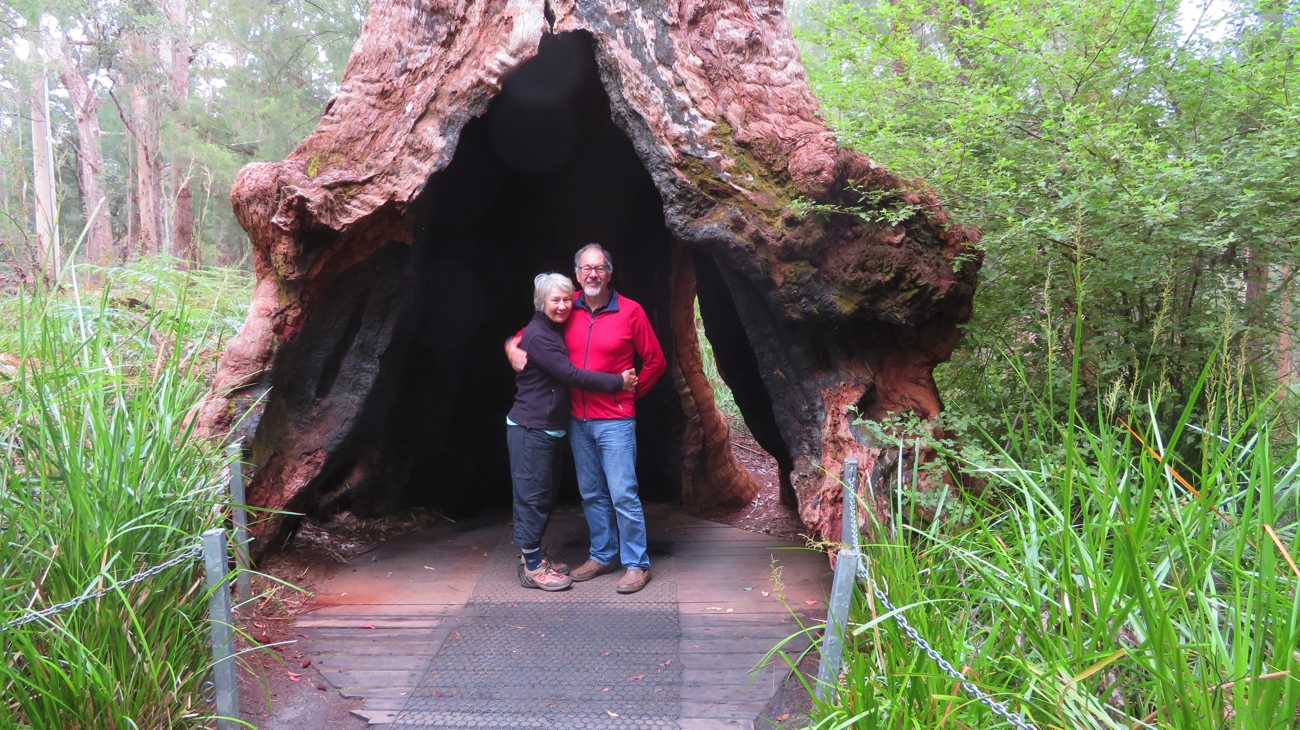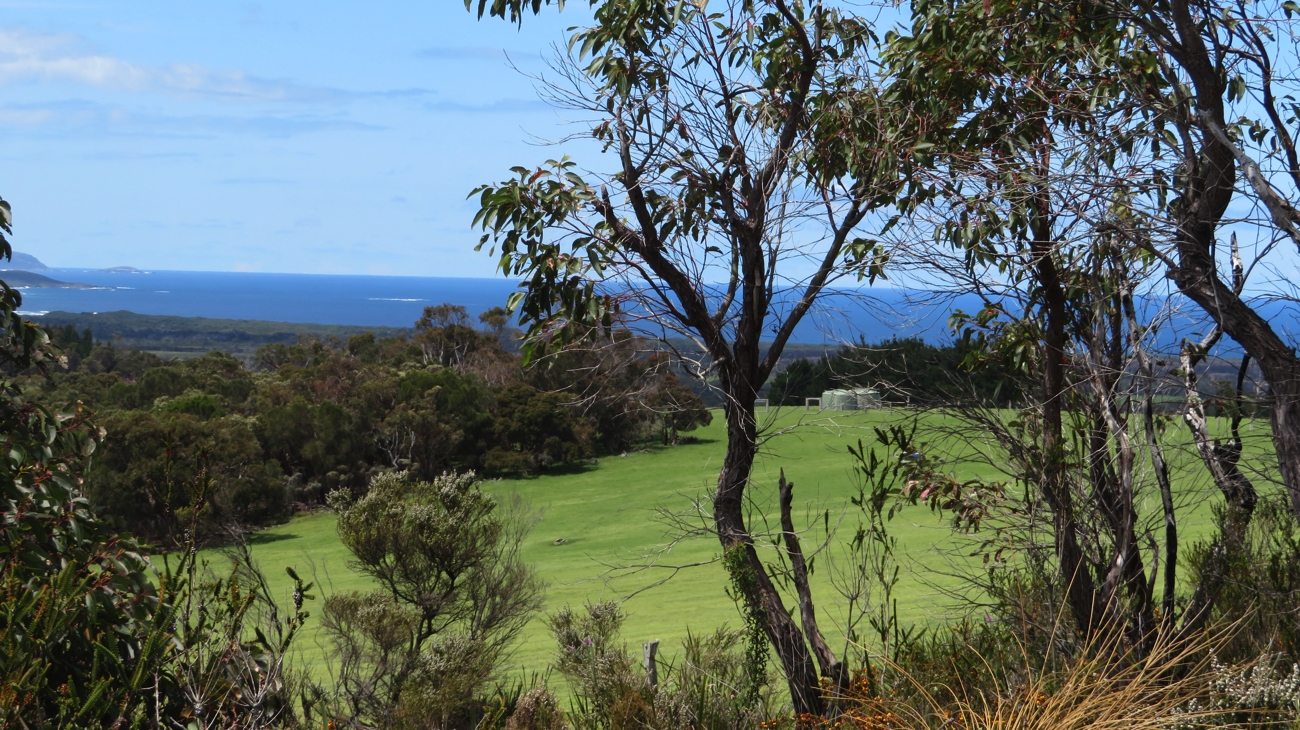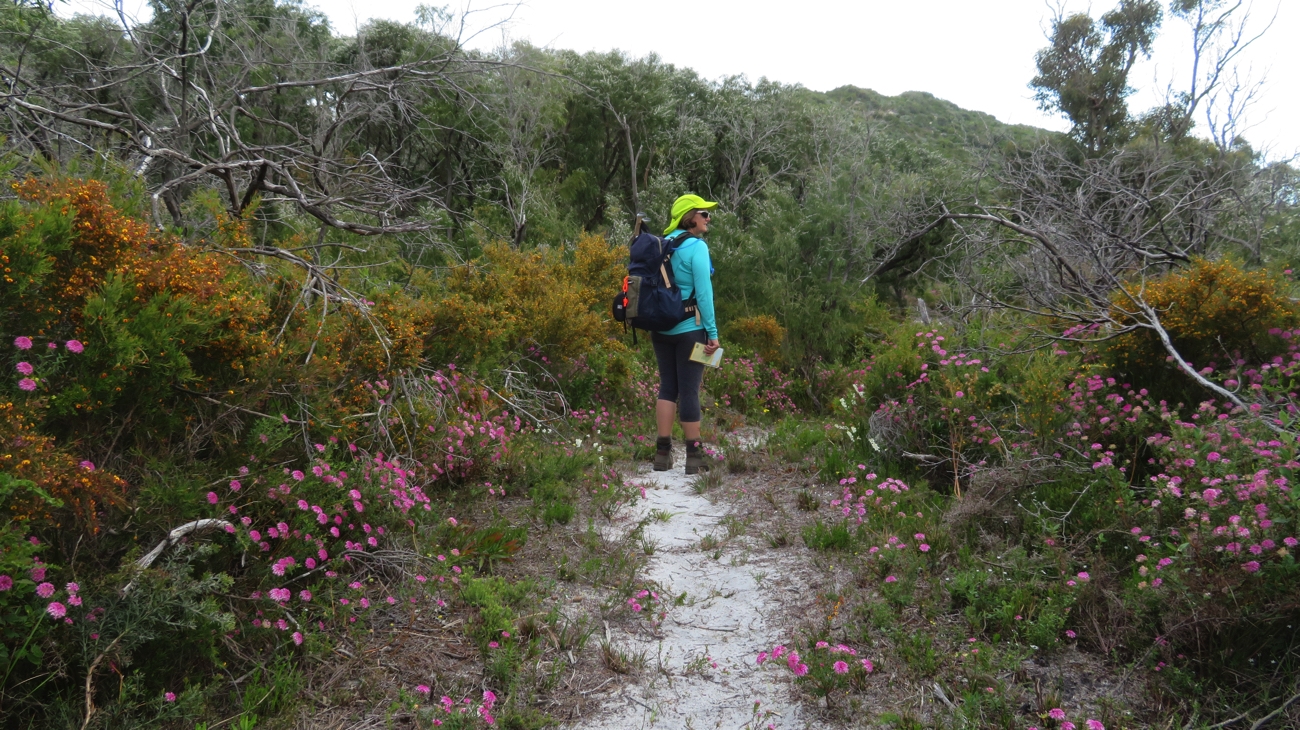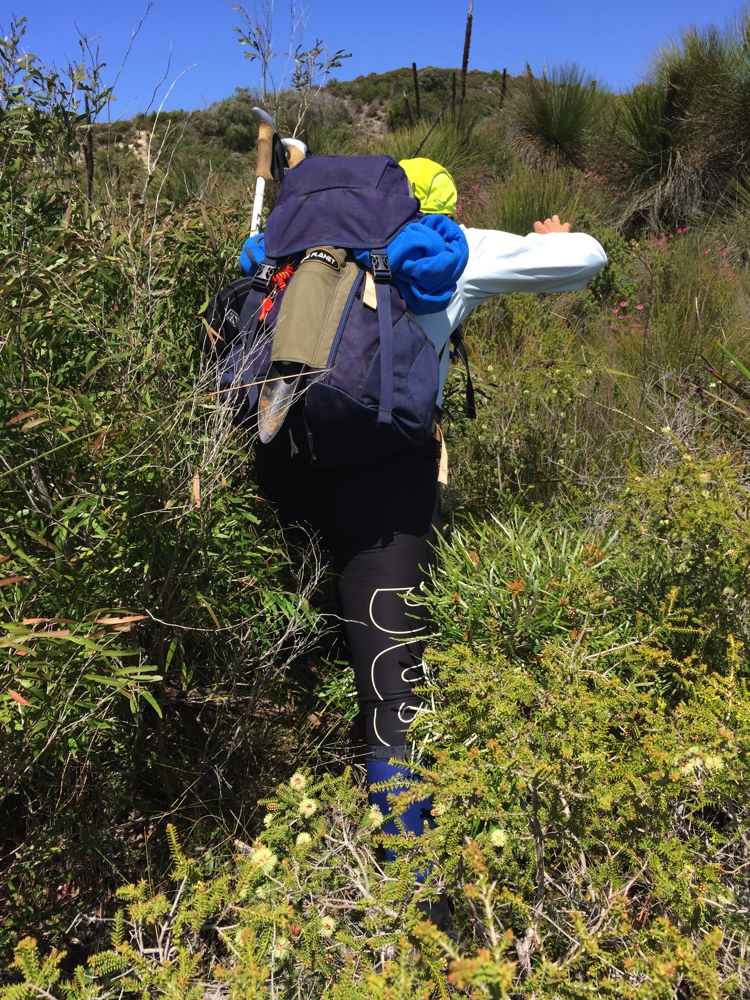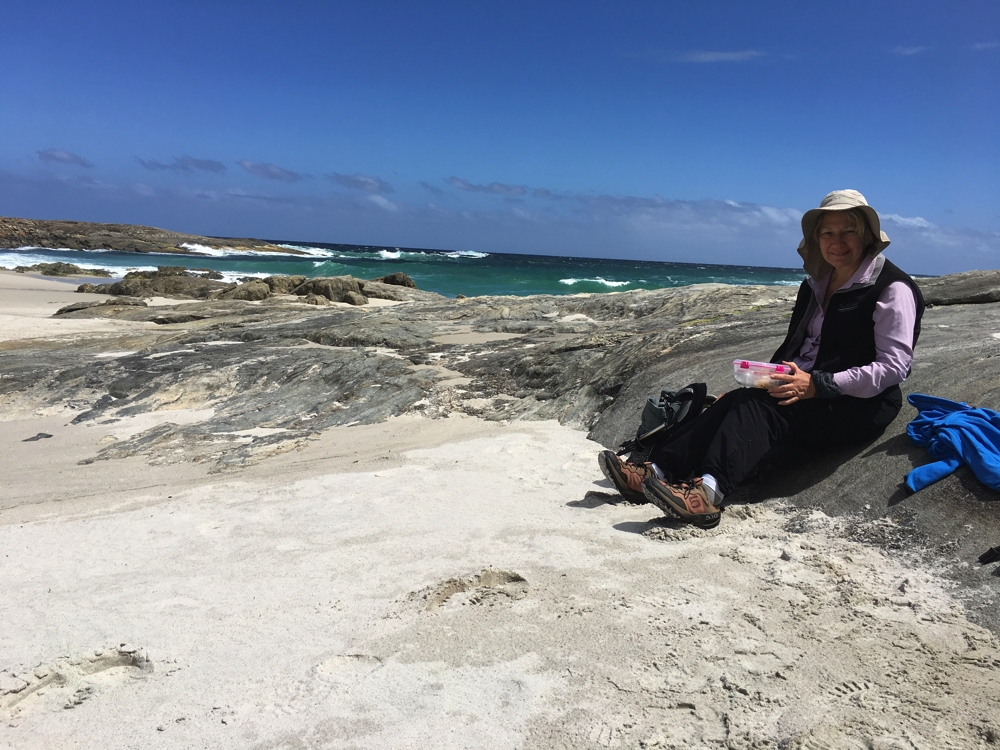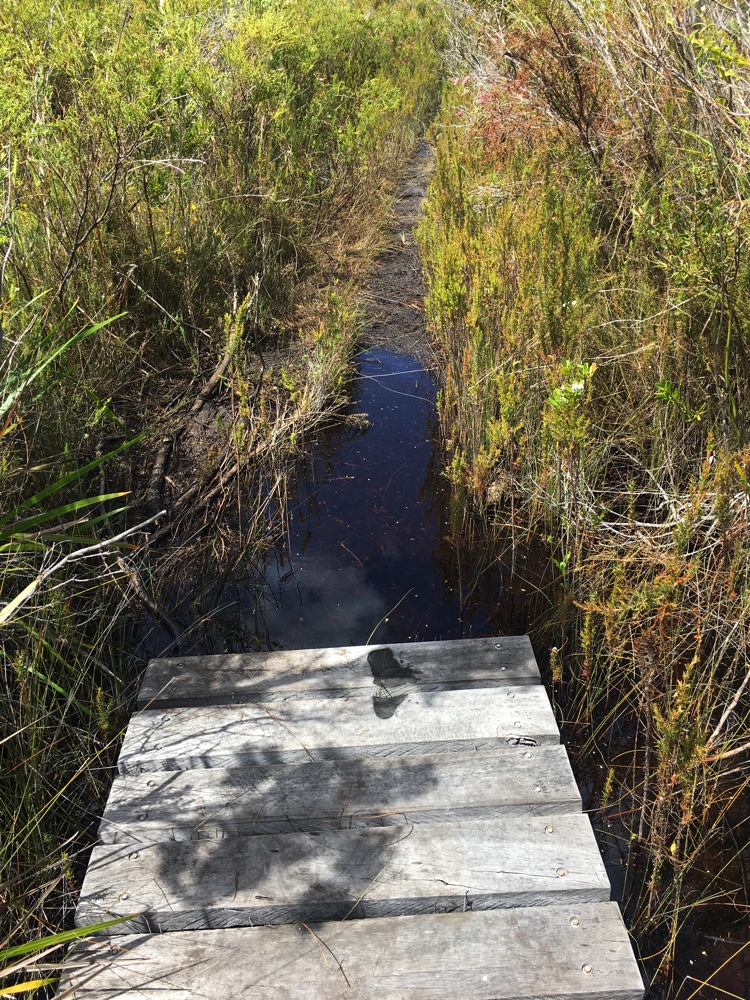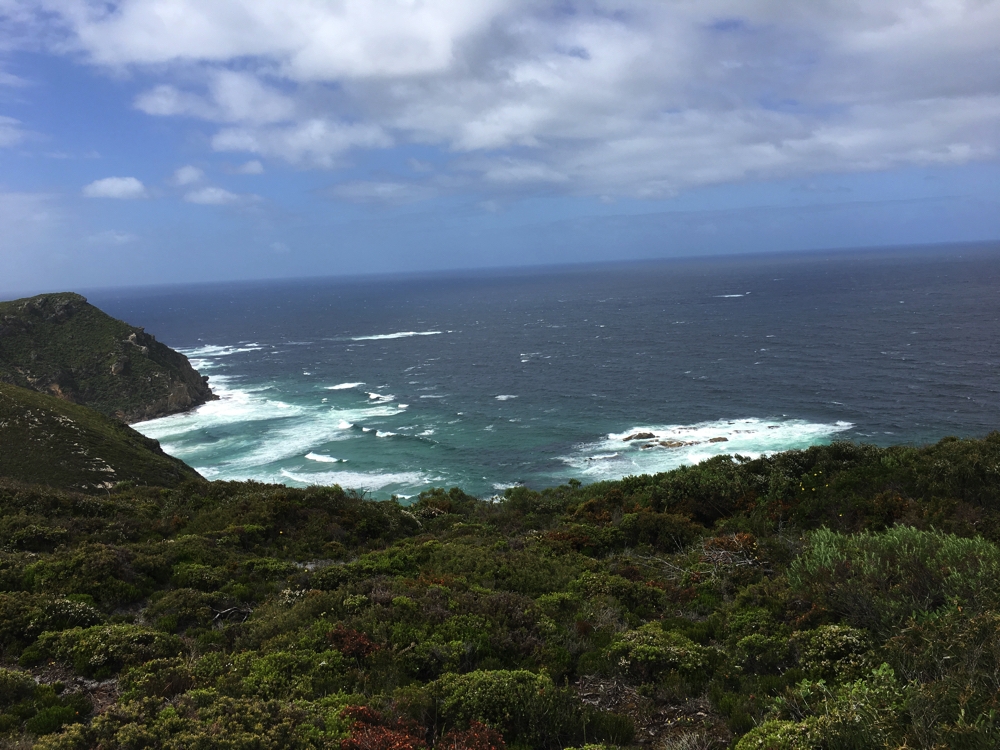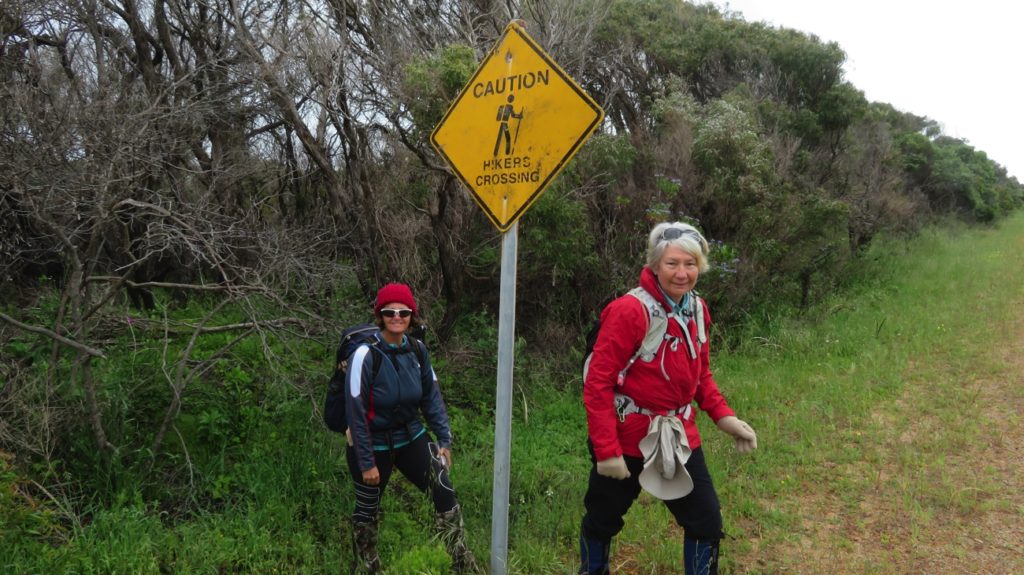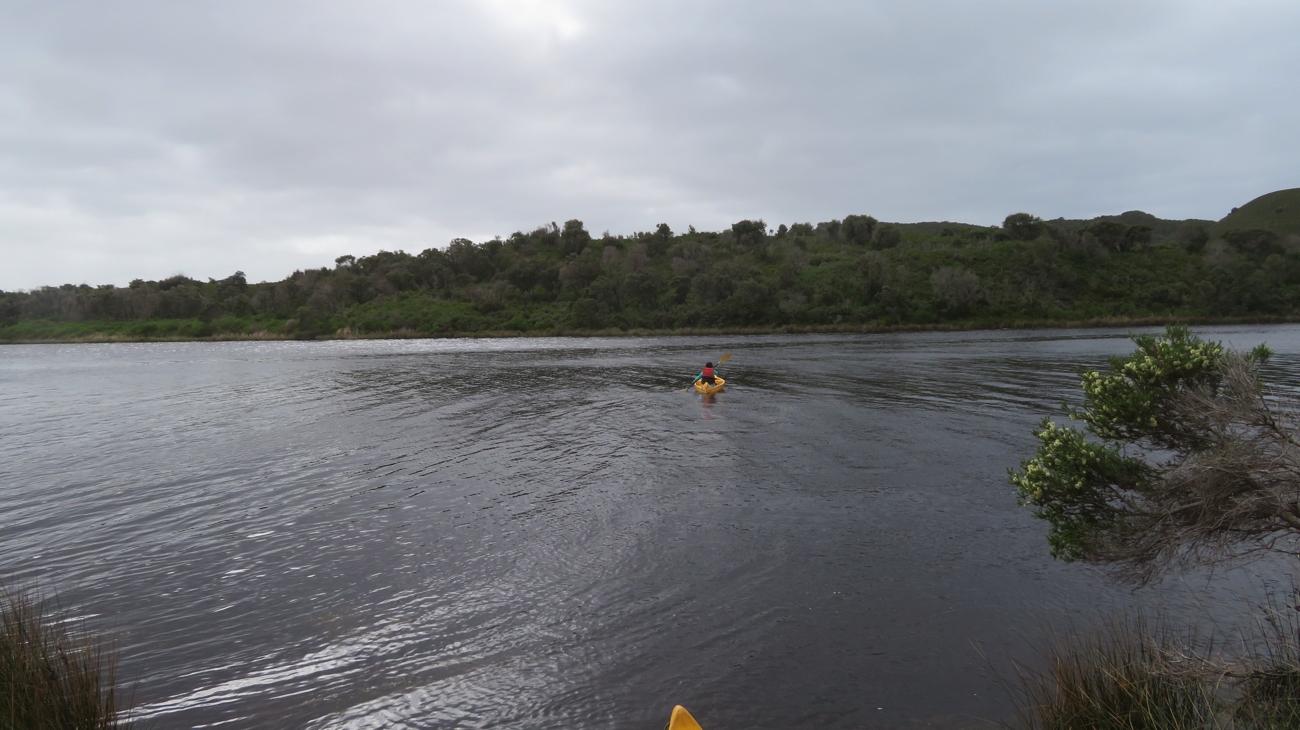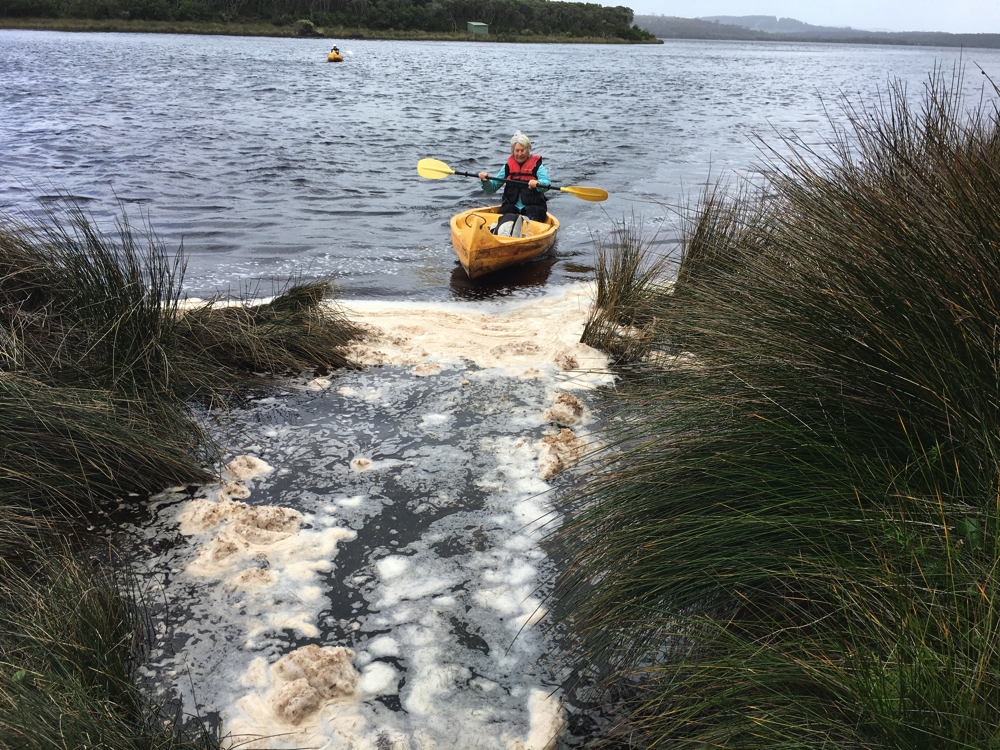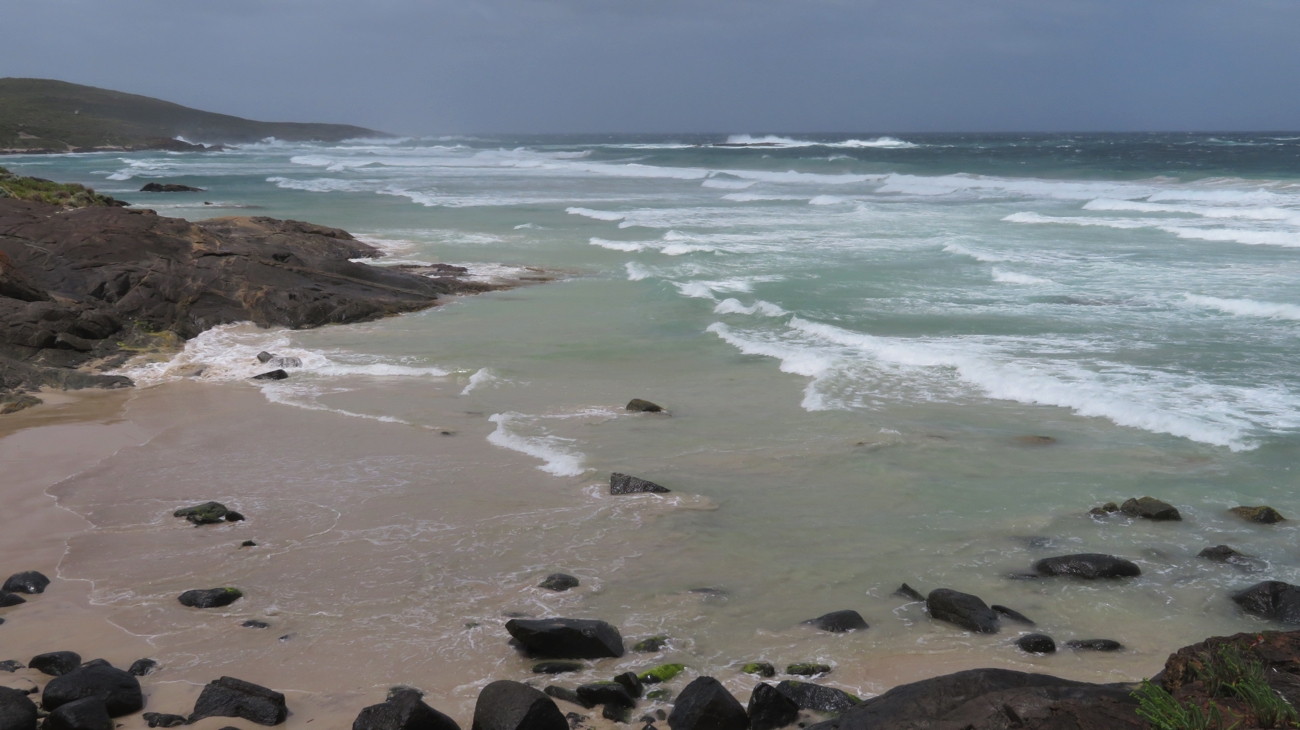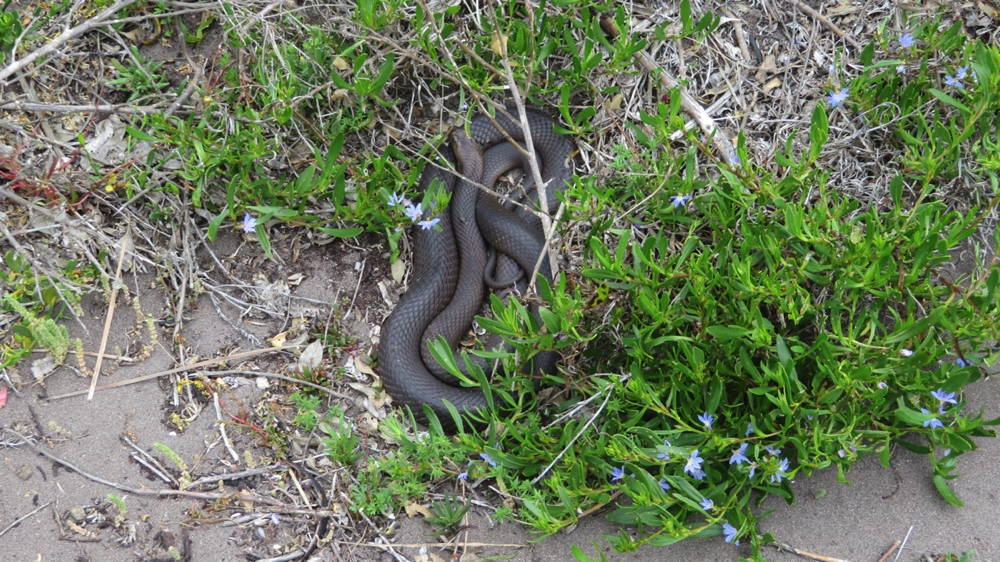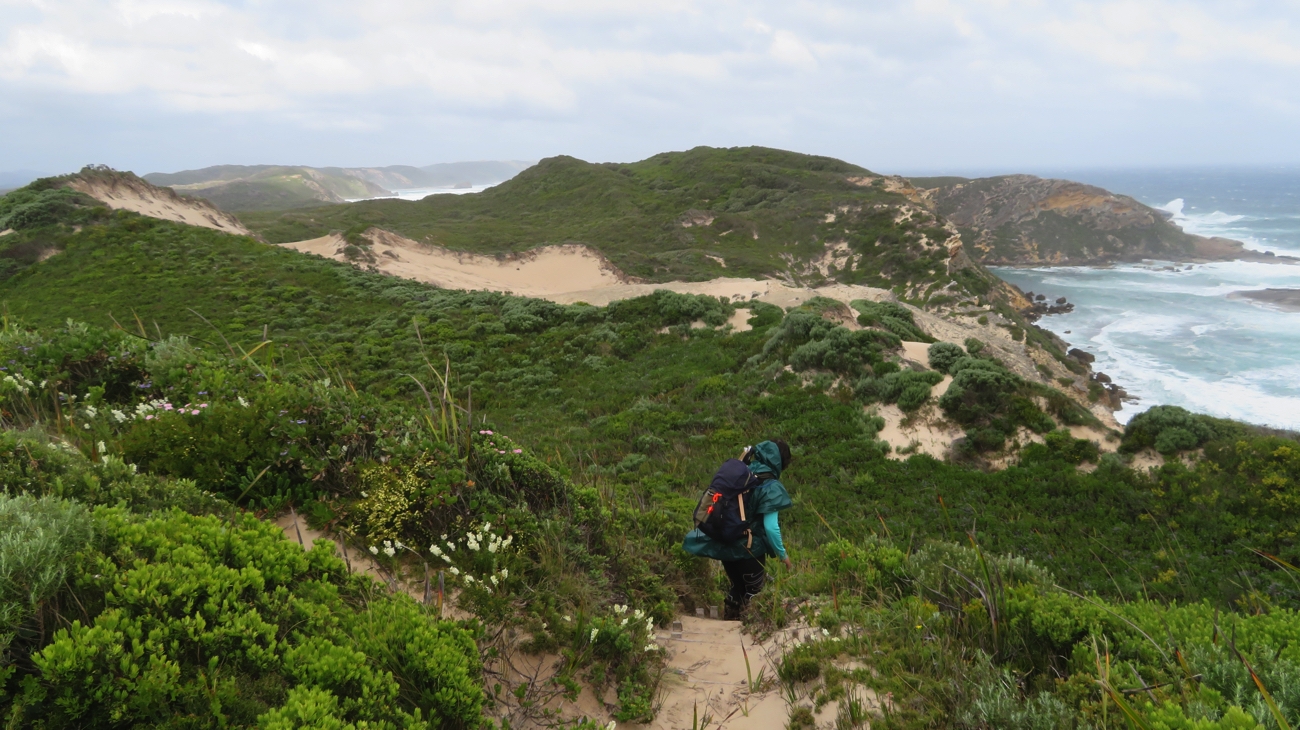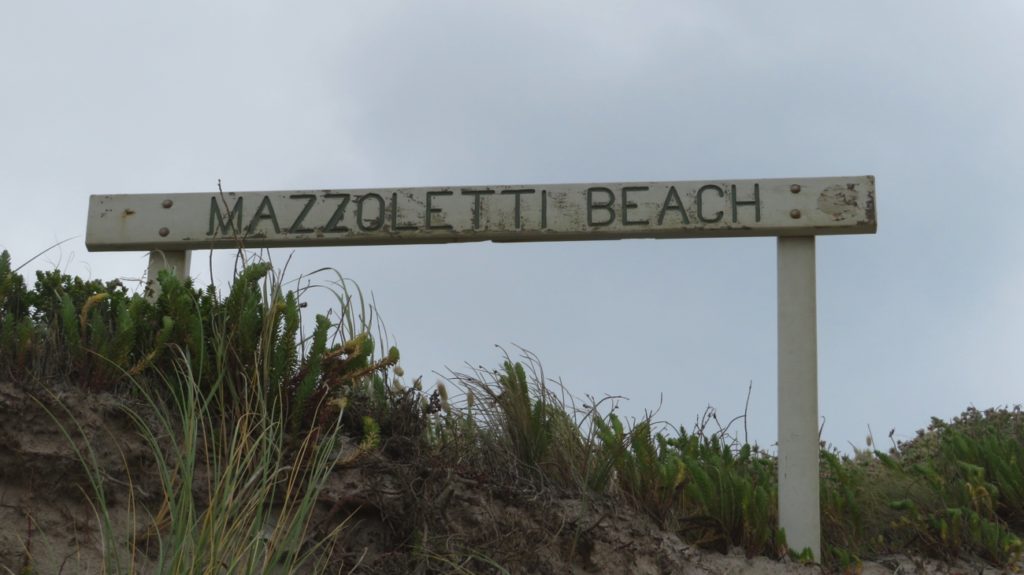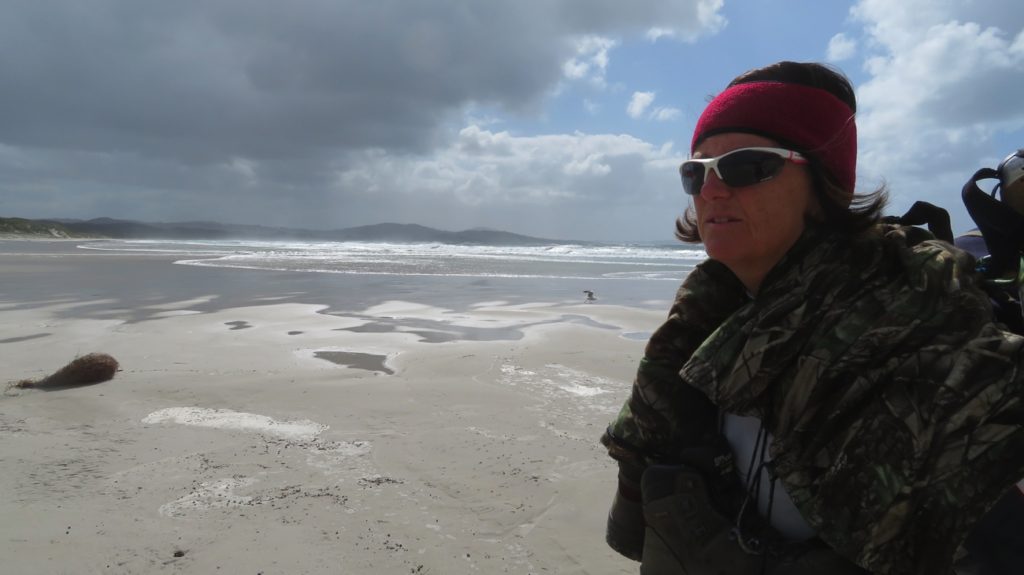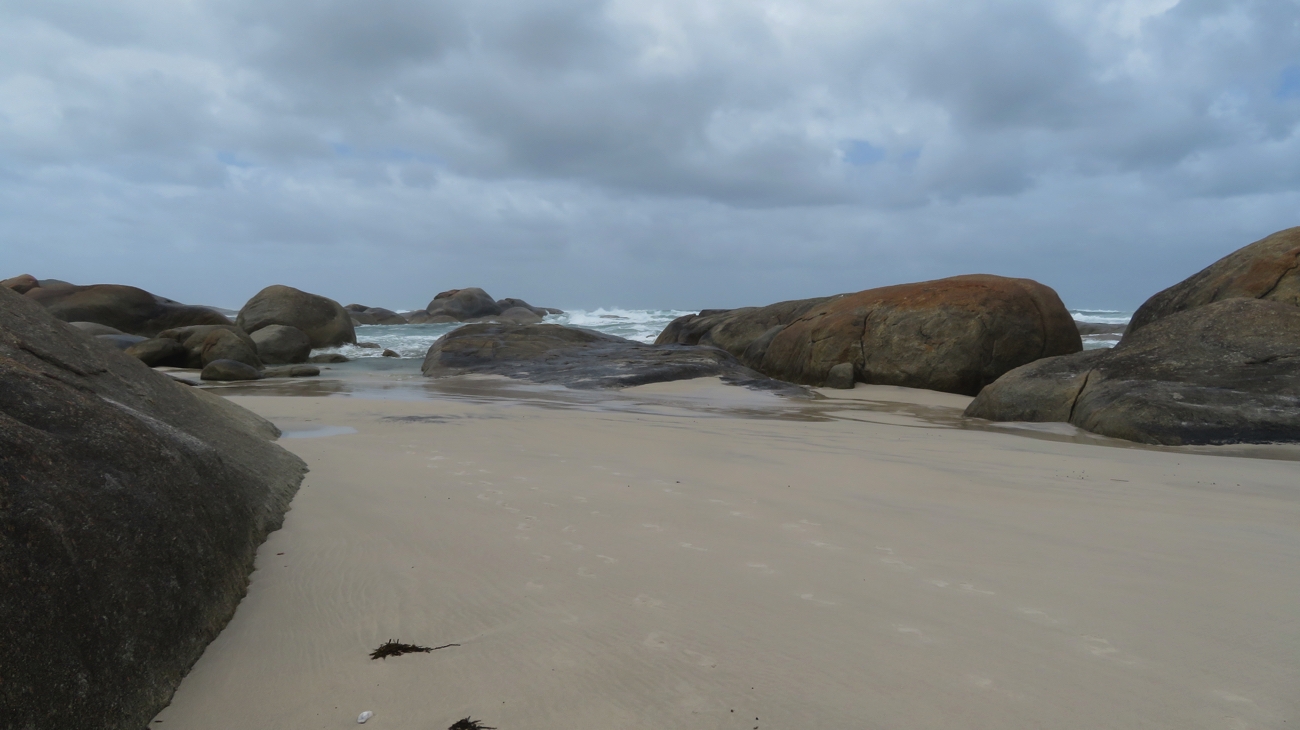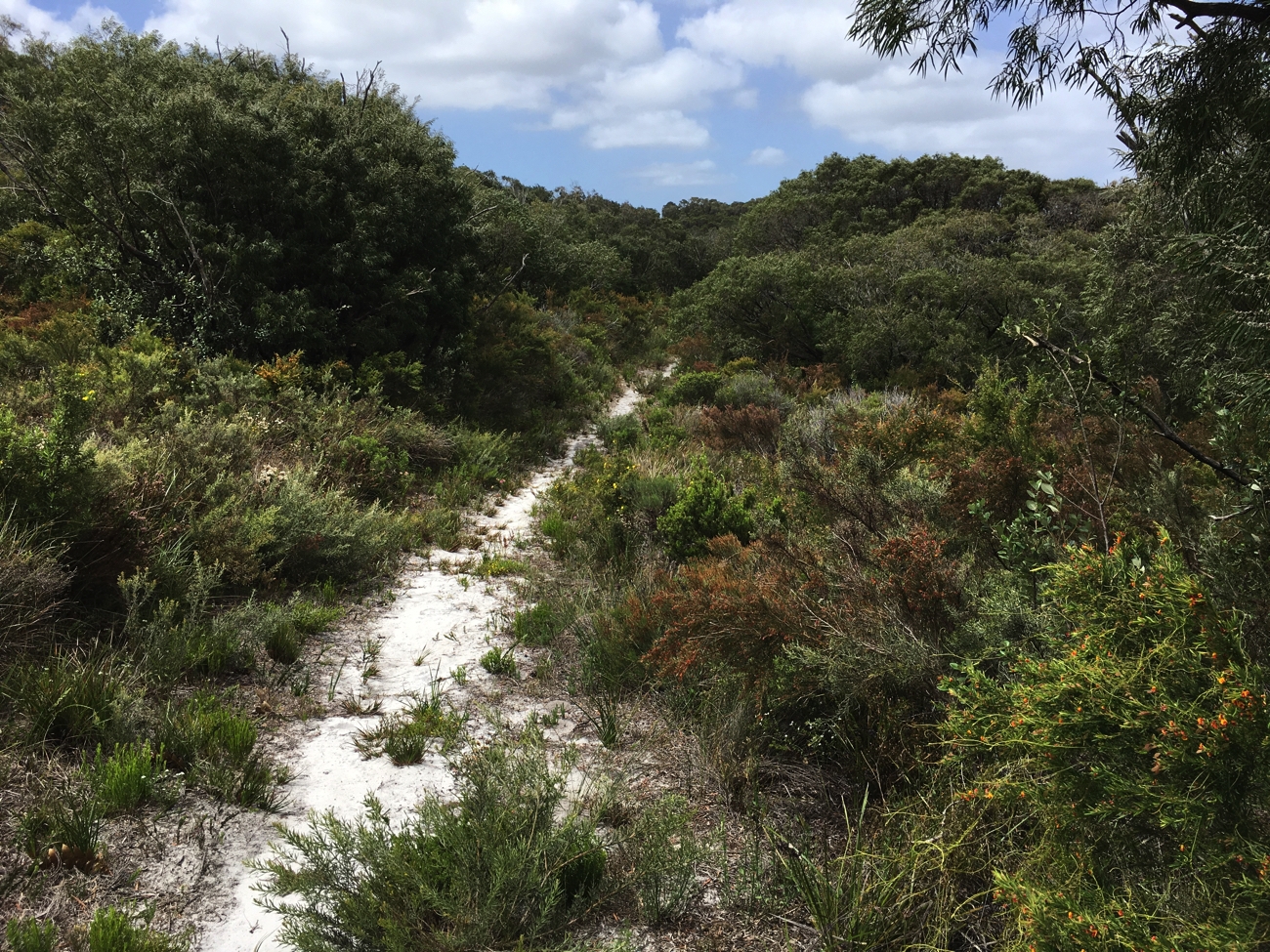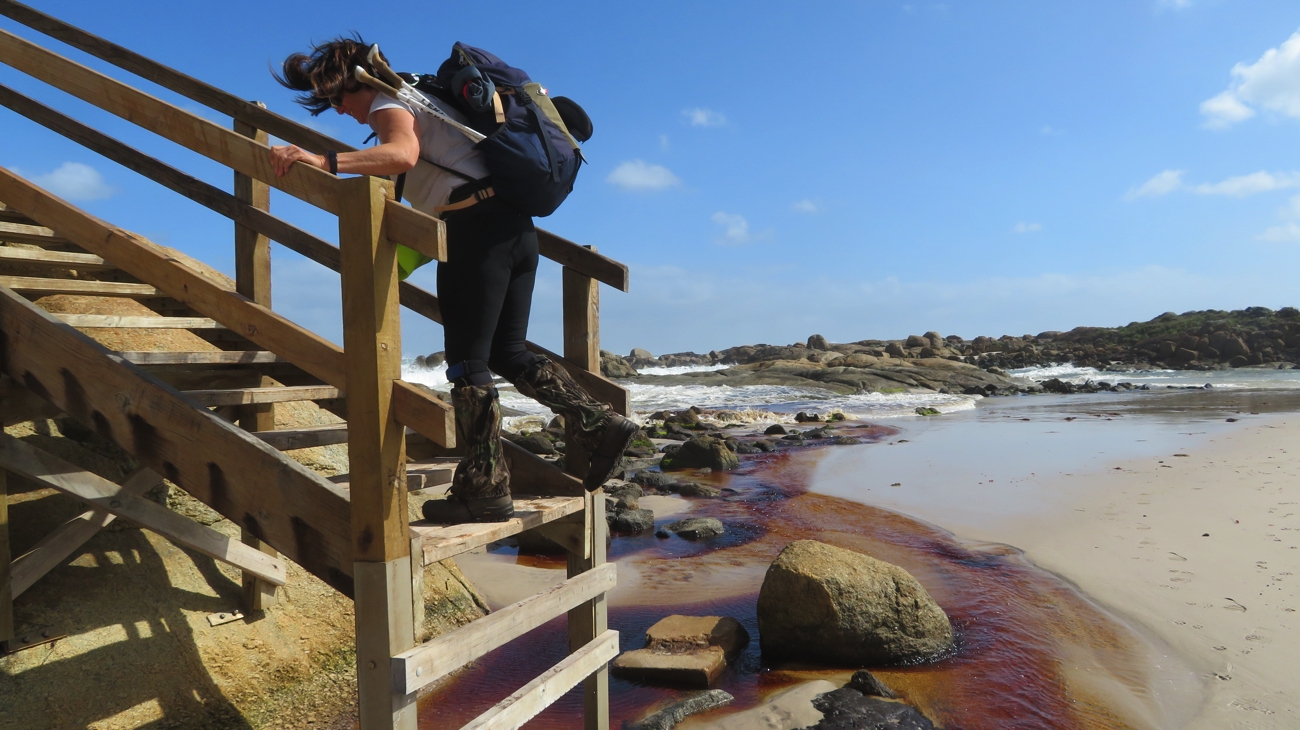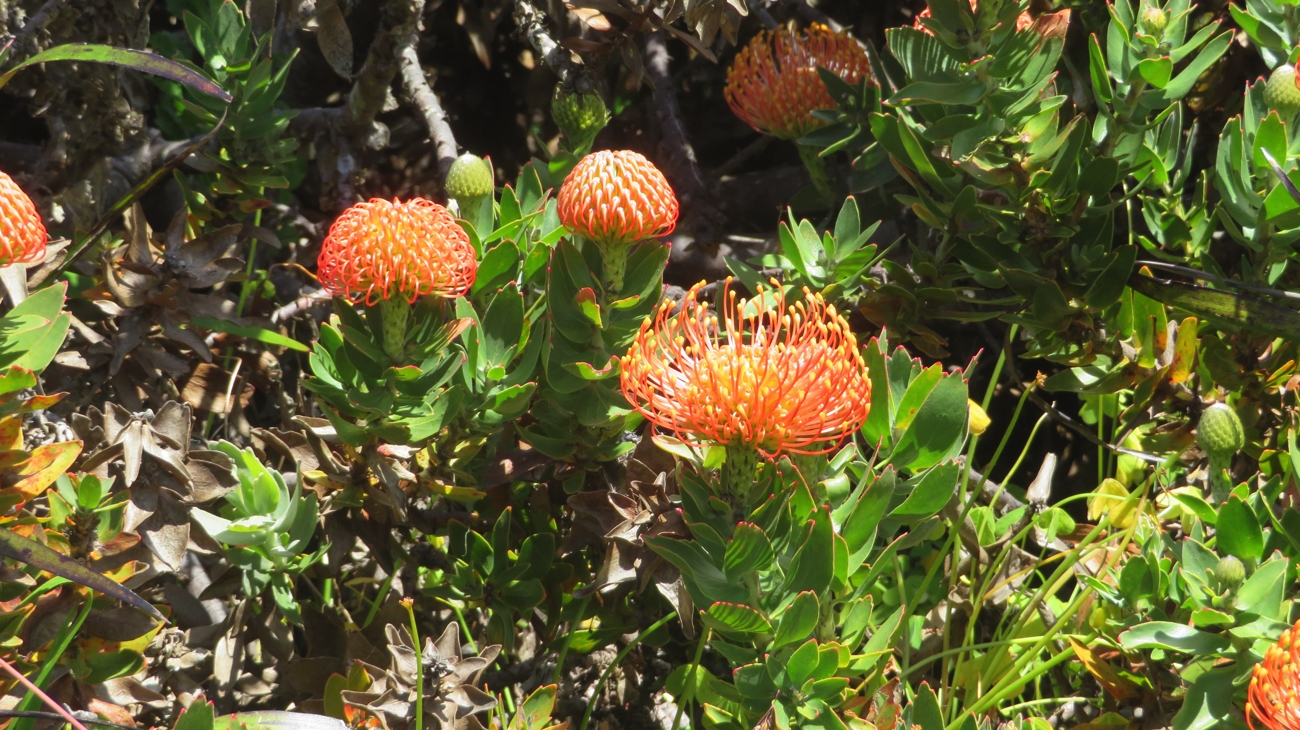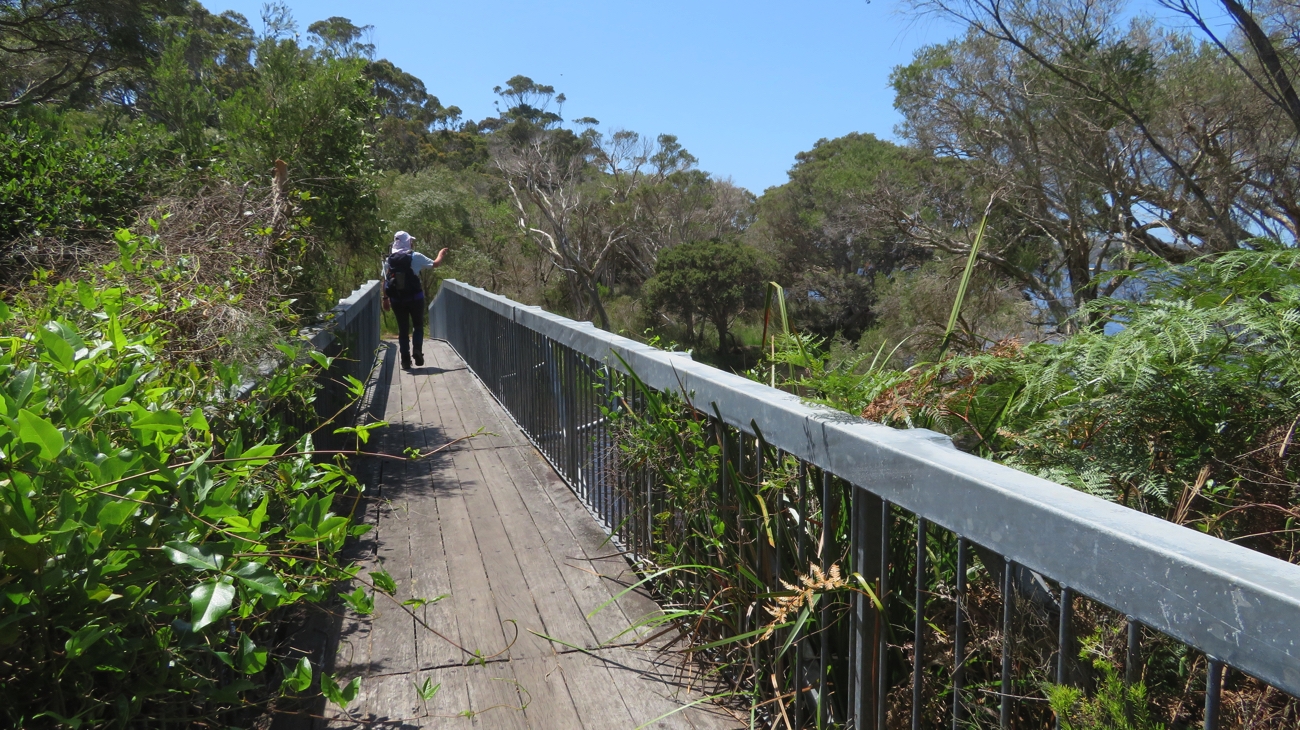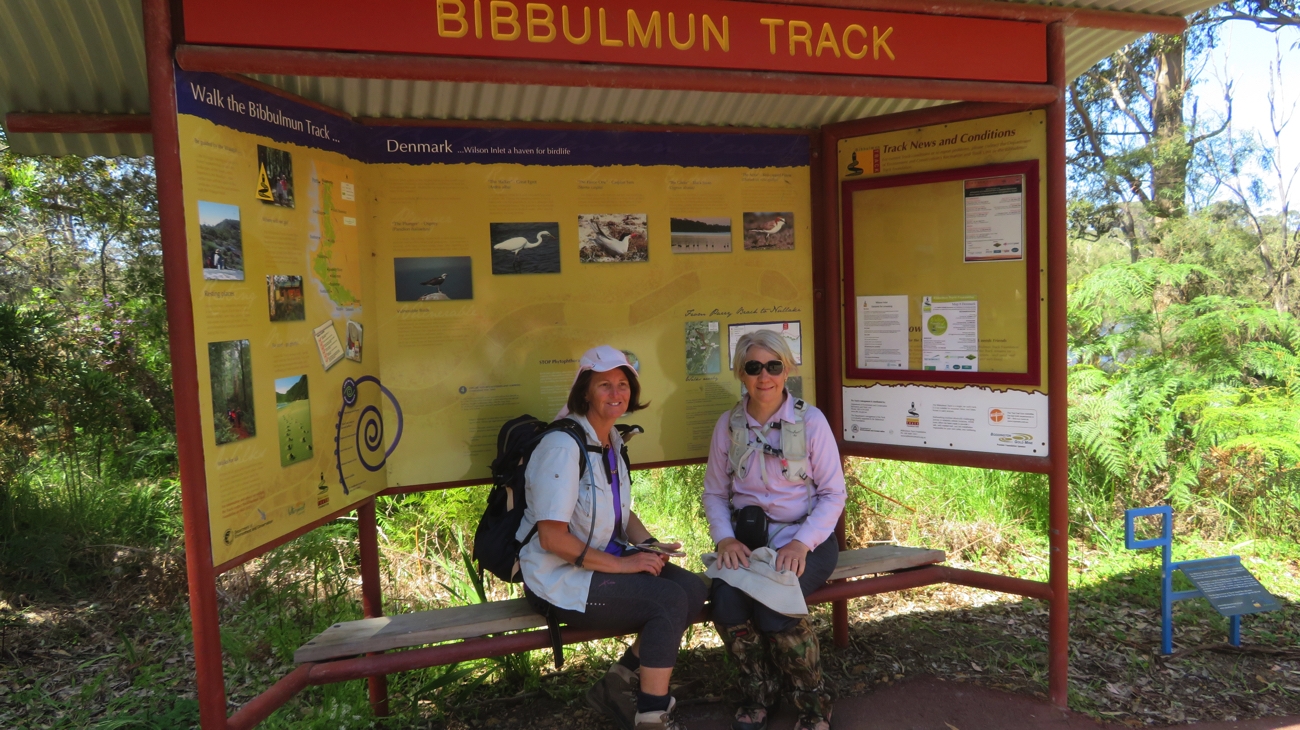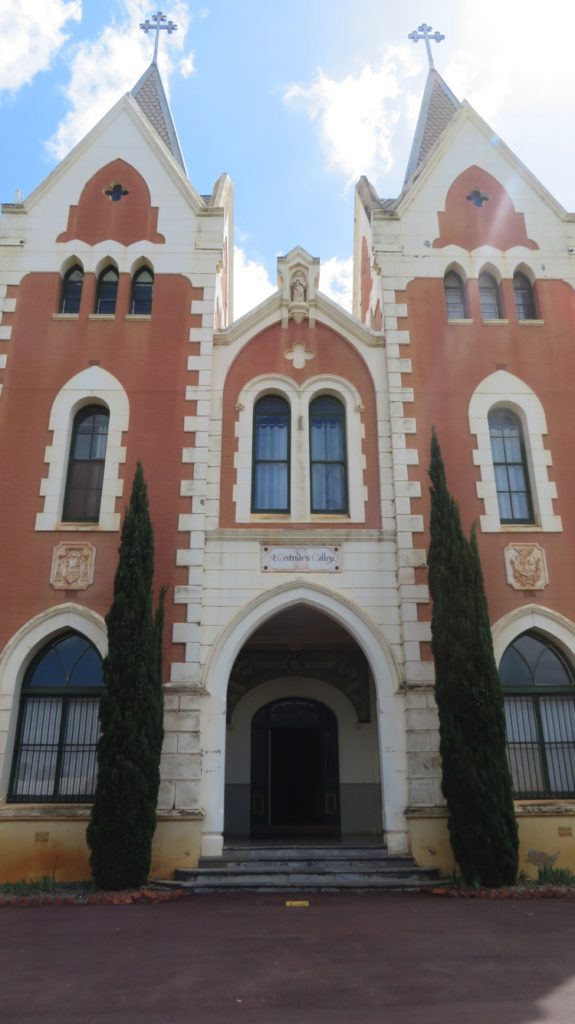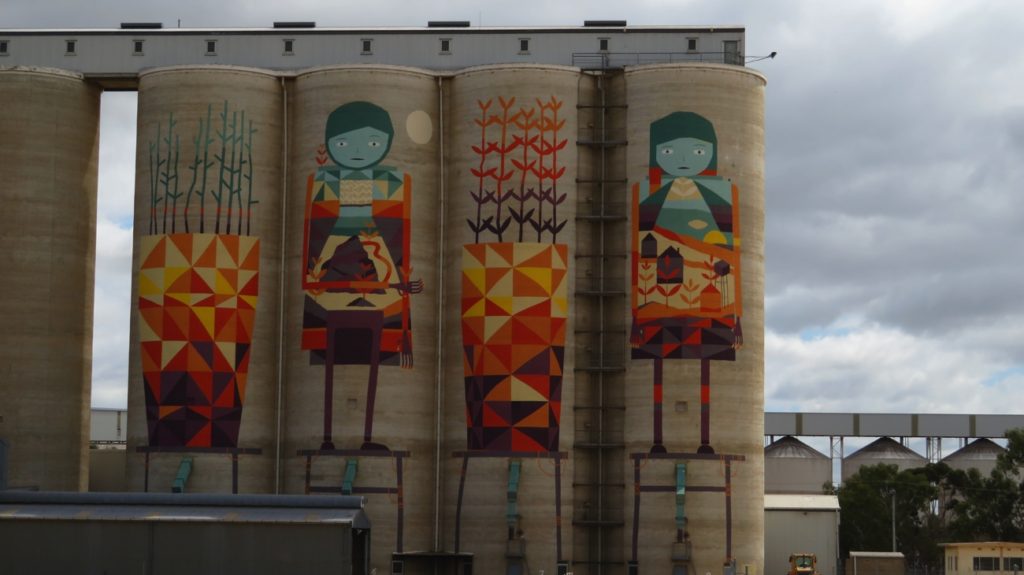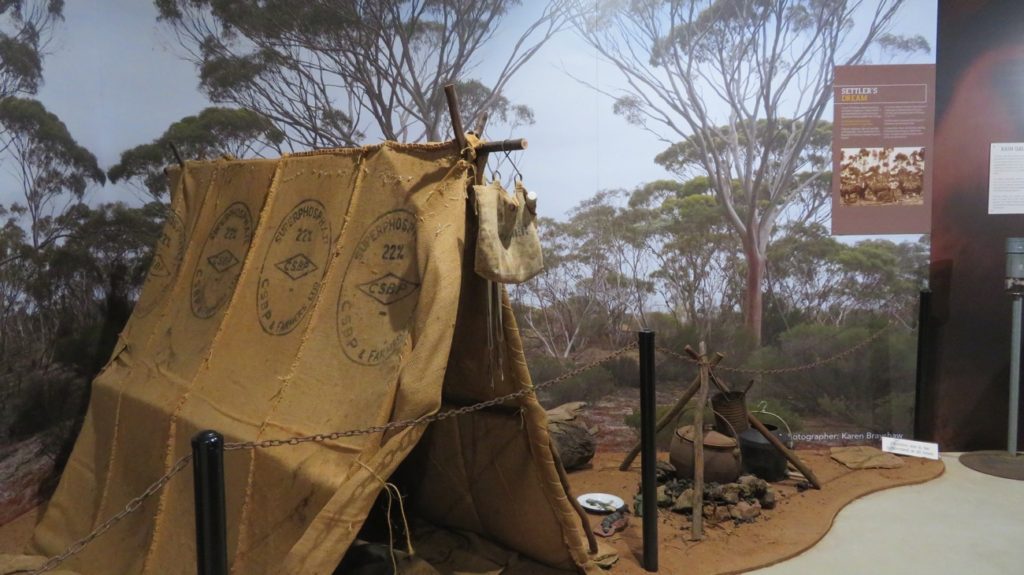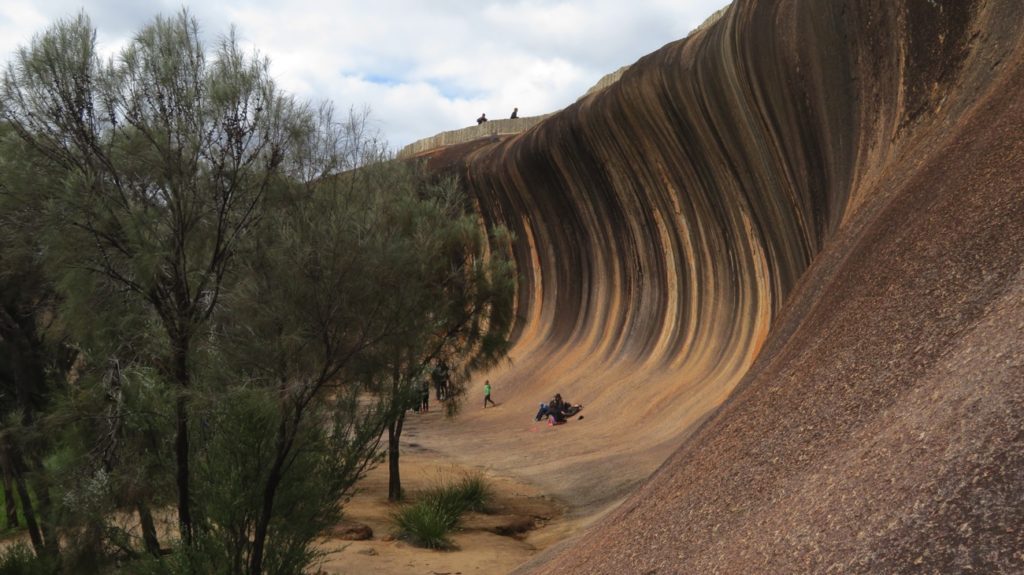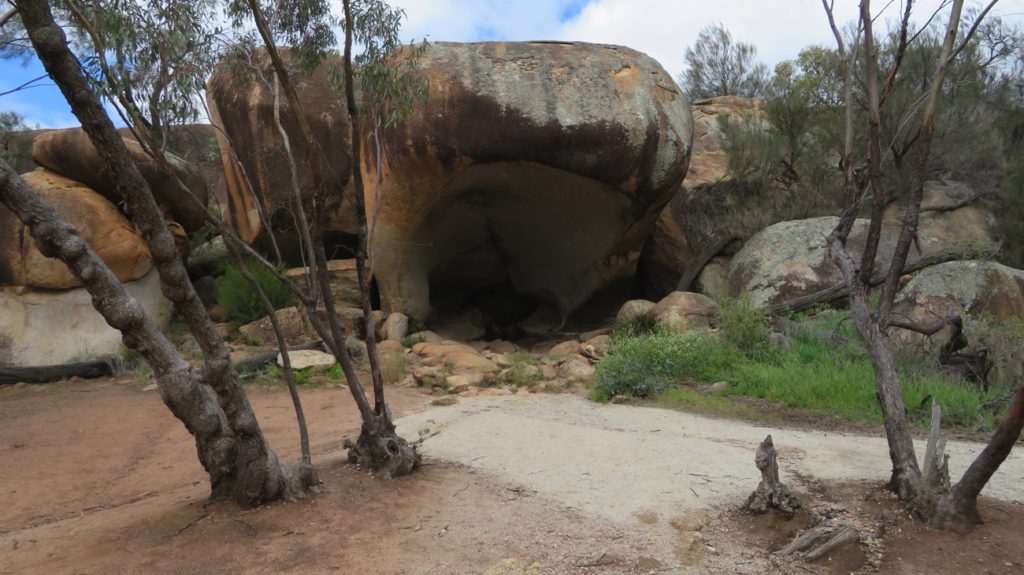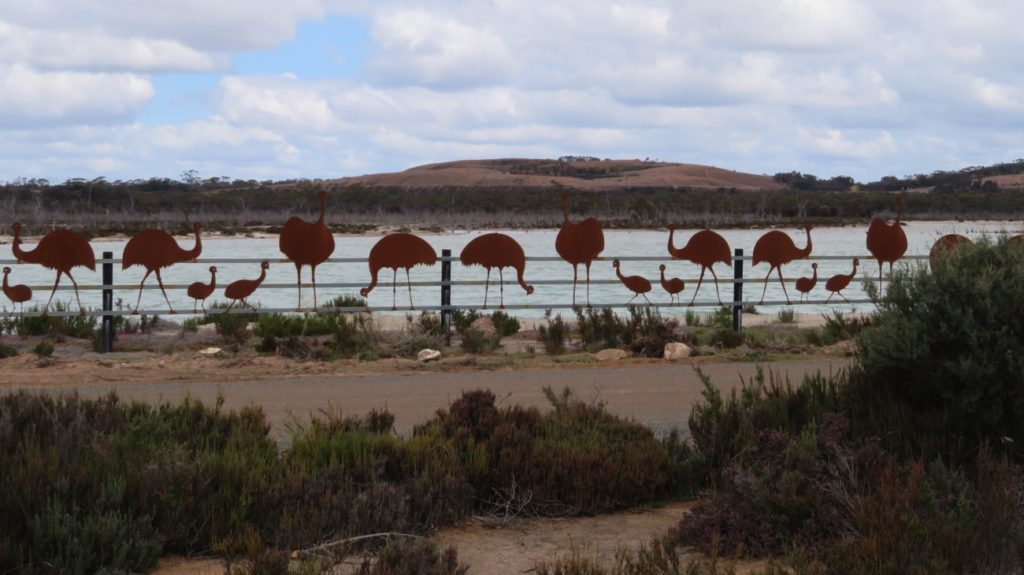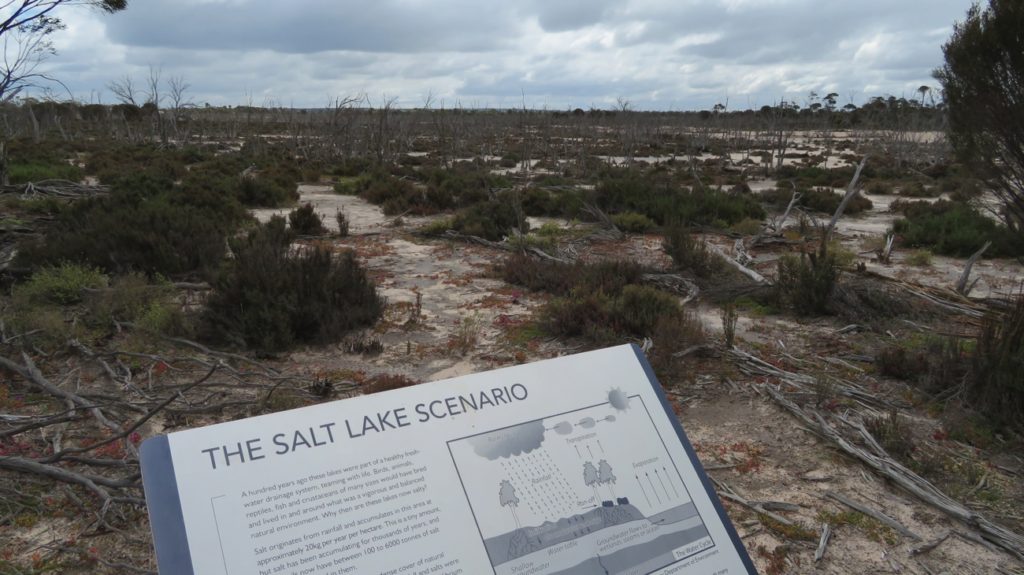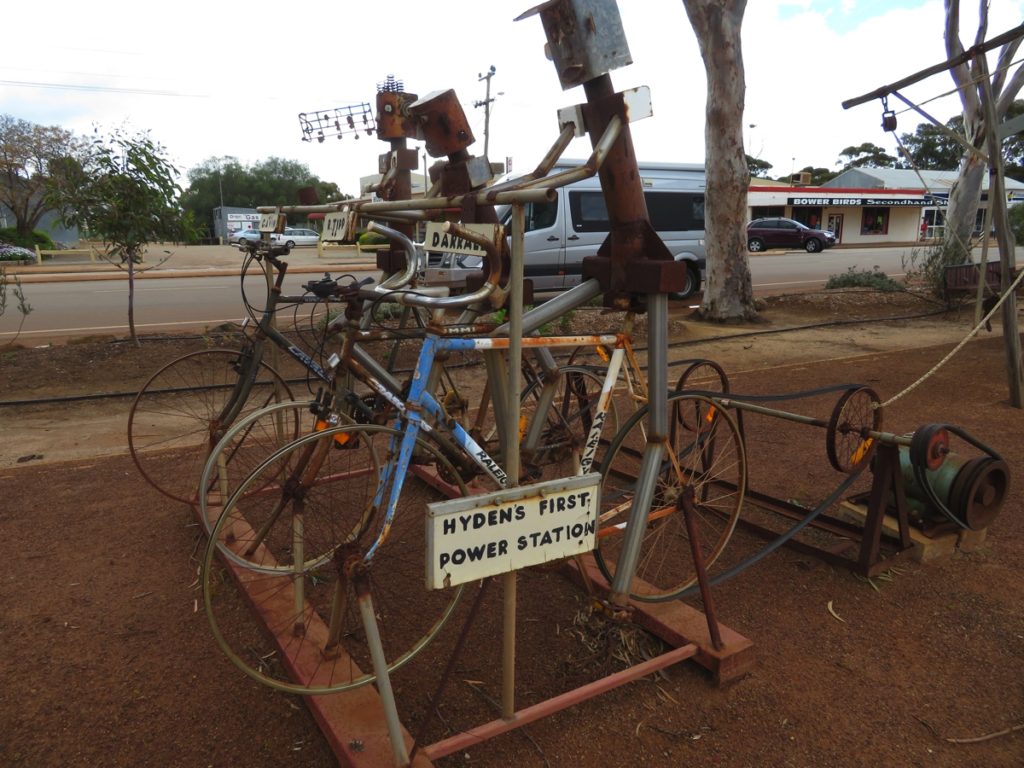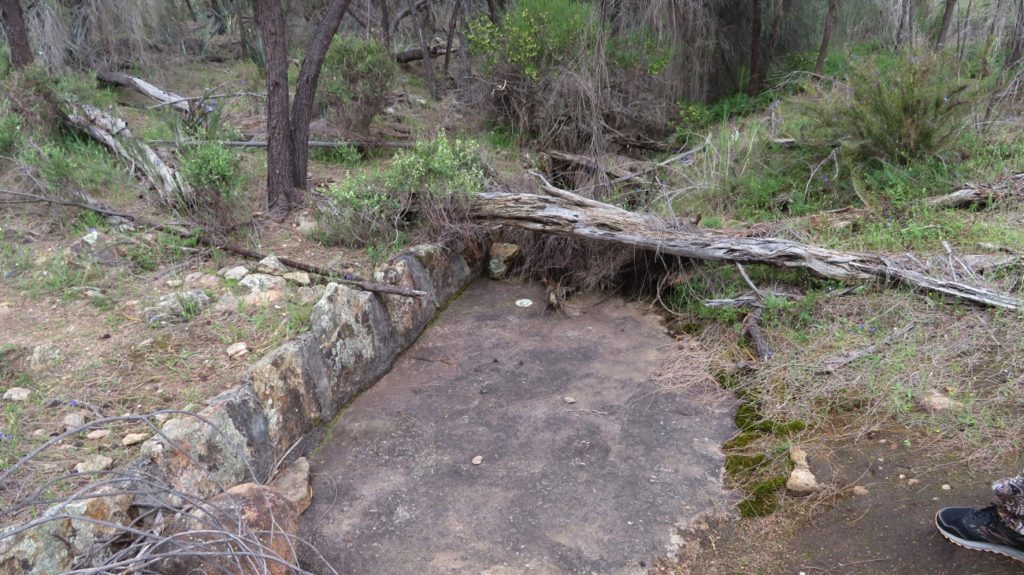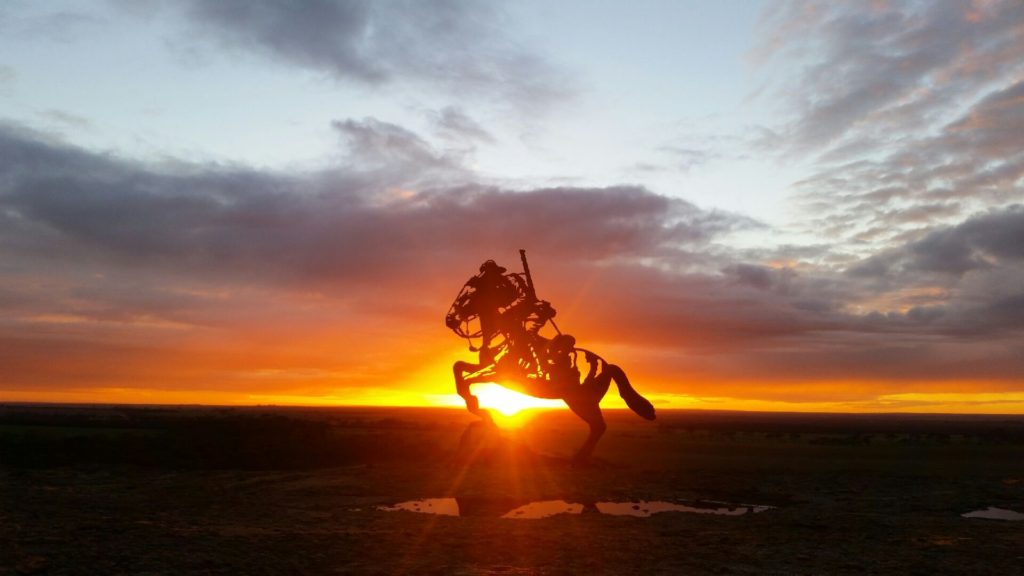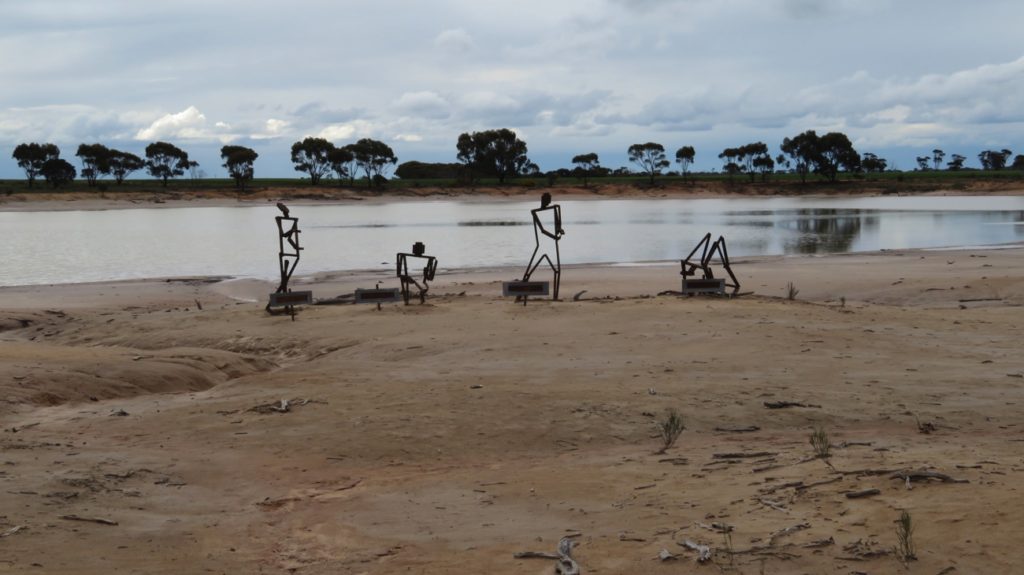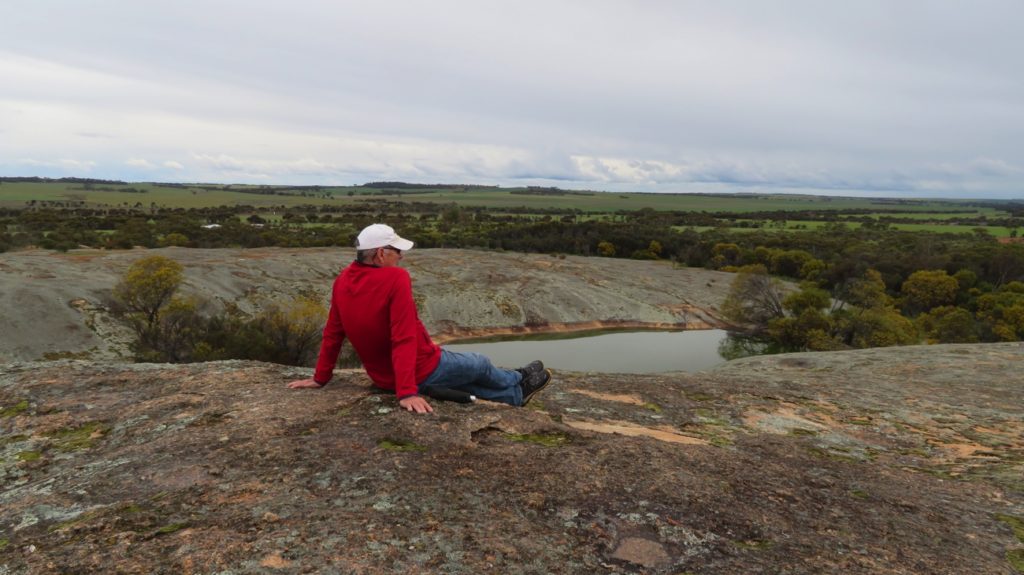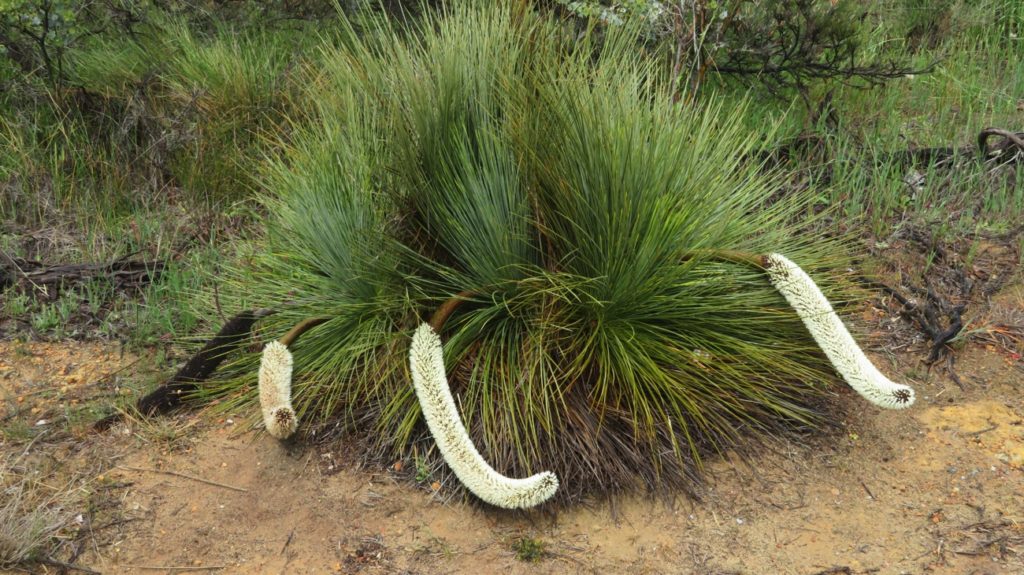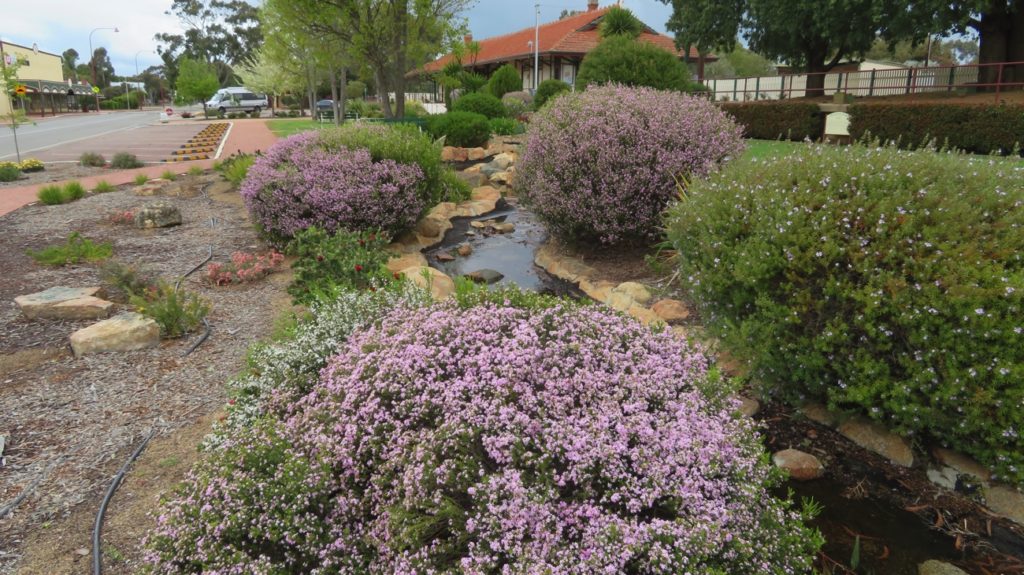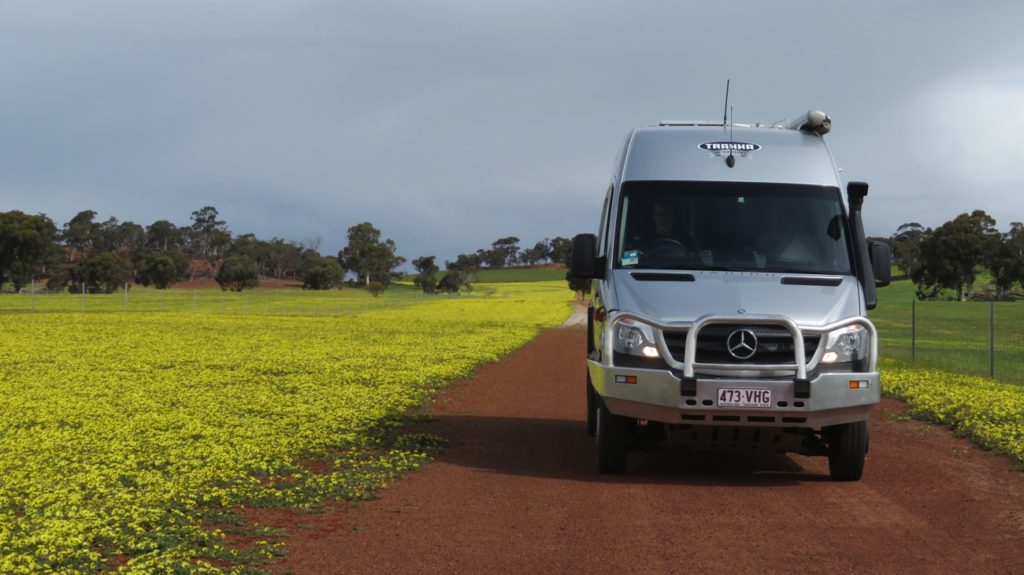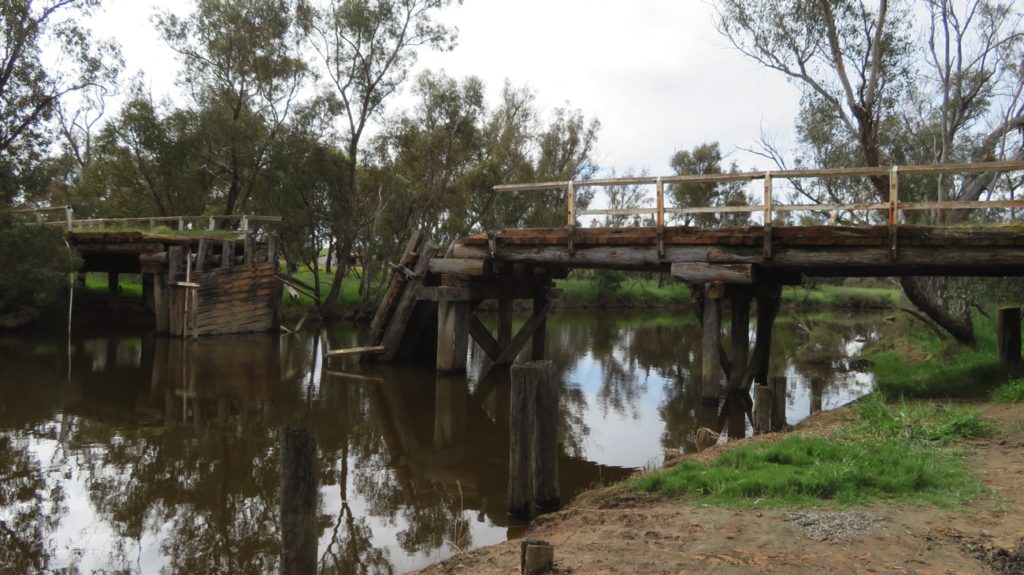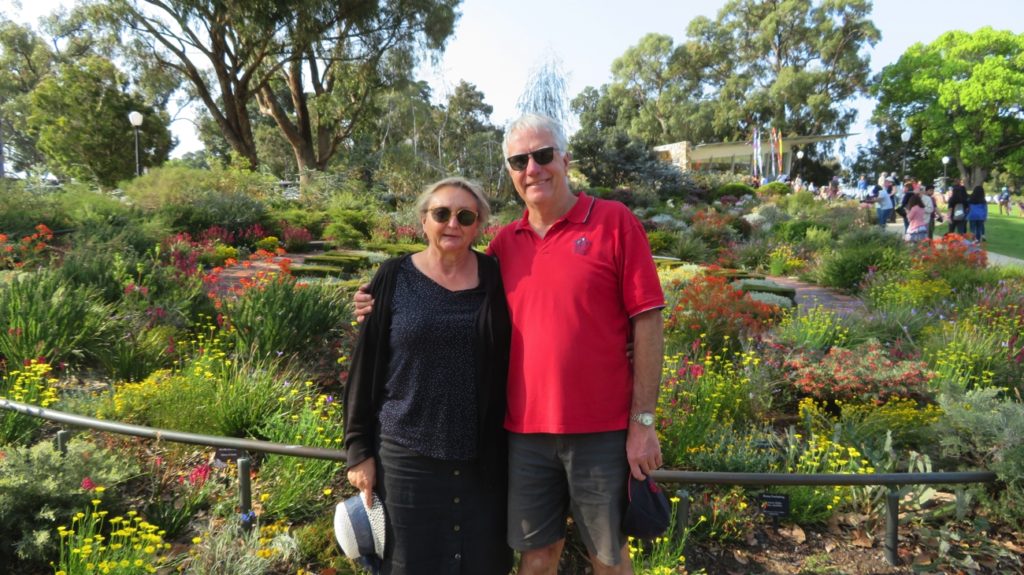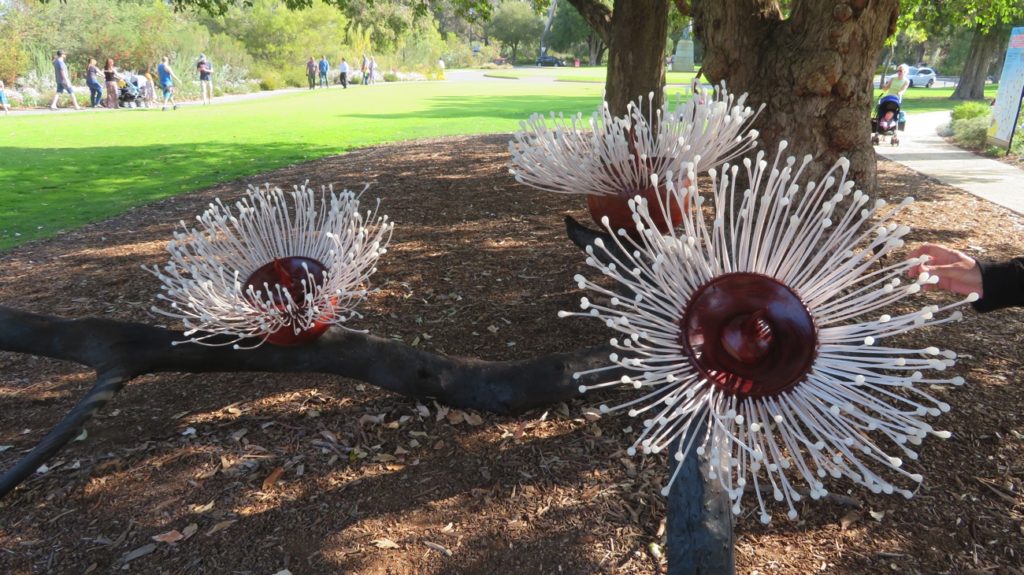8th – 21st October 2017
Sunday 8th
With still no date for when we can get the vehicle repairs done we decided we may as well keep travelling and exploring until called back to Perth. We’ve planned a trip through the forests of the south-west. Western Australia is famous for its beautiful timbers, karri and jarrah being the principle though tingle and tuart trees are also significant.
We left Yallingup about lunchtime heading south down the Caves Rd past all the wineries, breweries, deer farm, maze, caves and other tourist enticements. Well, we didn’t quite make it past ALL the wineries/breweries – we brunched at Cheeky Monkey Brewery and Vineyard.
Boranup Road, an unsealed road off Caves Rd, provides a scenic drive of about 20km through the new-growth karri forest. These magnificent trees with their straight trunks towering up to 60metres into the sky are about a hundred years old now – logging in the early 20th century having cleared their forebears. A very pretty drive with a short detour to Boranup Lookout which overlooks the forest as it merges in the distance with the ocean. A couple of picnic tables and a toilet are provided here.

Driving through the Karri Forest, Boranup.
Tonight we’re camping amongst the trees at the National Parks Boranup campsite ($12/n), a small campsite alongside the scenic drive – very peaceful, only one other motorhome arrived late afternoon. We went for a 5km walk nearly to the beach.
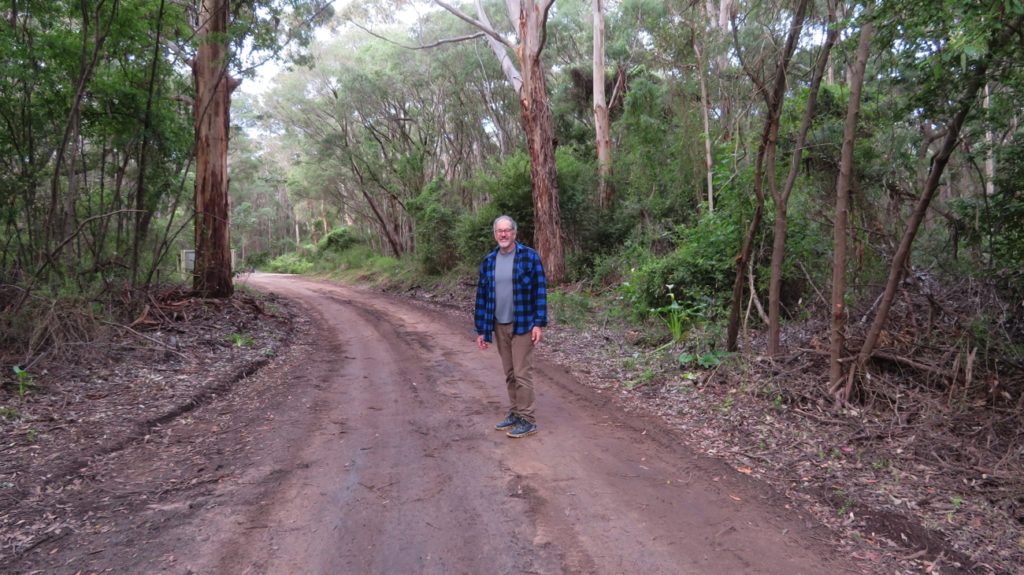
Exploring Boranup Drive on foot.
Monday 9th
It was hard to leave this restful camp amongst the big trees with their understory of a carpet of beautiful arum lilies. Hamelin Bay is a little way to the south – a pretty Bay with lots of parking for cars with boat trailers; must be a fishing haven, though none out today. The old jetty is just a few timber piles sticking up now, however back in the early 1900s it was a busy port for the ships taking local karri to overseas destinations. None of the western Australian coastline is boating-friendly – this small bay has 11 shipwrecks in it. The changing preference to jarrah spelt the decline of the karri industry here.

All that remains of the jetty at Hamelin Bay, and a snapshot of its history.
Brunch this morning at Cosy Corner, a secluded bay with a small car park on the headland.

Cosy Corner – definitely a lovely cosy little bay.
On to the lovely seaside town of Augusta built at the mouth of the Blackwood River. We parked here then walked 4km along the river – excellent walking trails. Thanks Augusta.
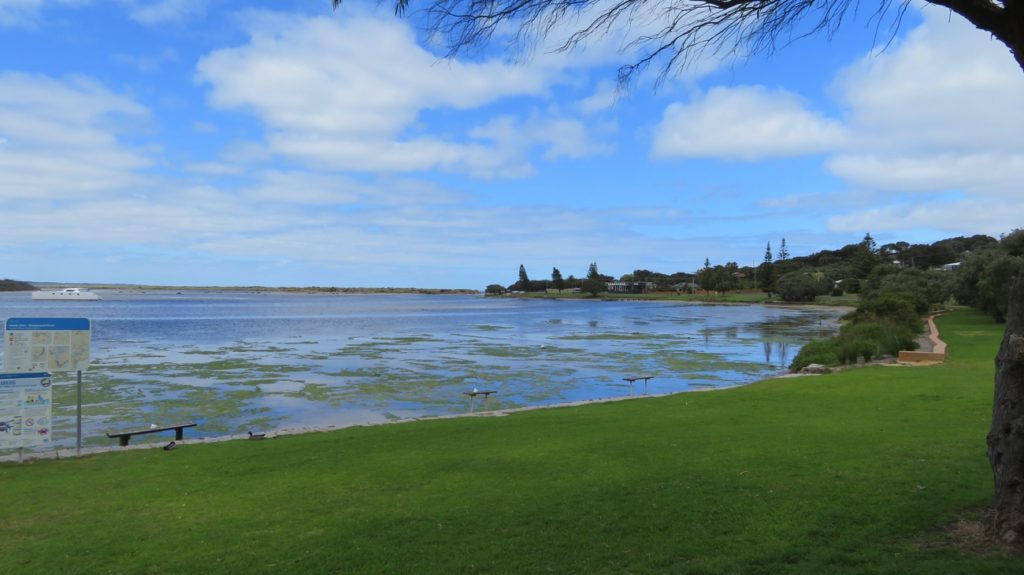
Augusta, at the mouth of the Blackwood River.
Not far outside Augusta is their new marina – a much-appreciated safe harbour for the recreational and commercial mariners who boat around this coastline. Augusta’s $36 million Royalties for Regions money was well spent here producing a top class facility with lots of trailer parking, floating pontoons beside the boat ramps, aesthetically pleasing picnic areas and a sea wall that looks impregnable. There were boats unloading abalone when we were there.
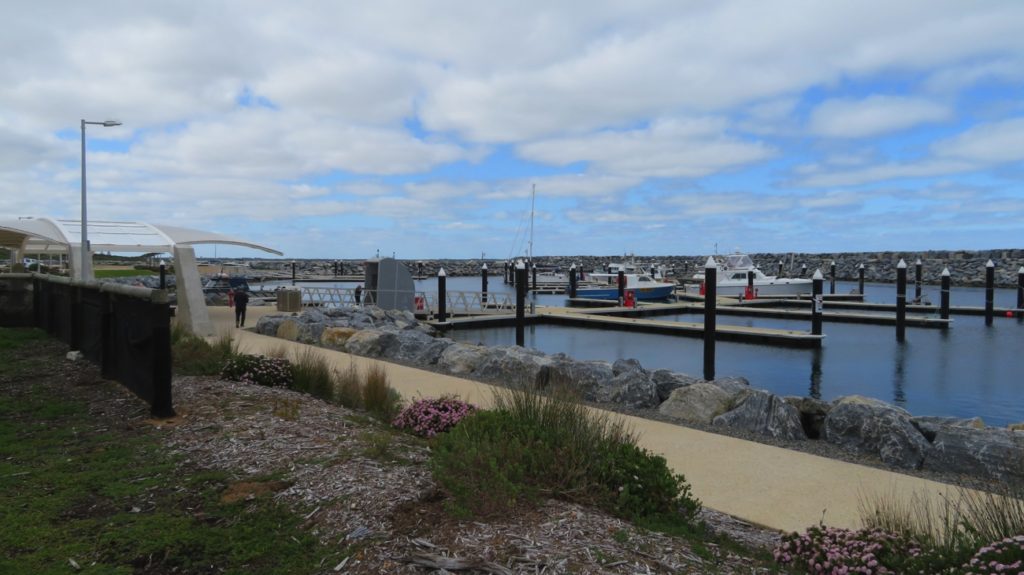
The beautiful marina at Augusta.
On to Cape Leeuwin Lighthouse, on the most southwesterly point of Australia and the place at which the Southern Ocean and the Indian Ocean meet. Matthew Flinders, who began the mapping of the south coast of Australia from this point in 1801, named the cape after the Dutch galleon, the Leeuwin, which accidentally discovered this area of land in 1622.
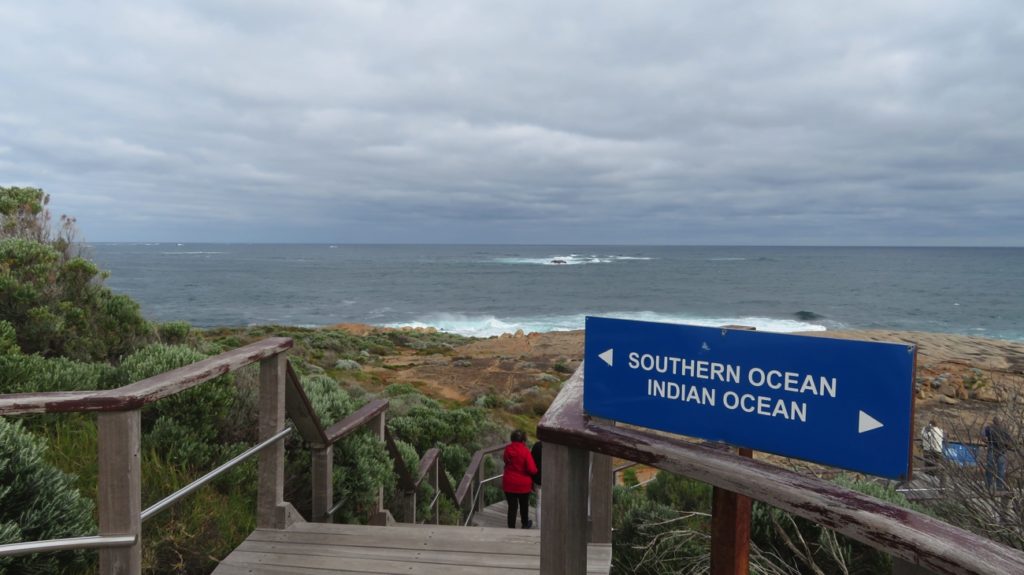
Where two oceans meet.
We wandered around the buildings and working lighthouse, now automated, the last of the three lighthouse keepers leaving in 1998. Well tended lawns and information boards making it all the more interesting. Usually $8 pp entry, but as the lighthouse was undergoing some maintenance it was just a gold coin donation today.
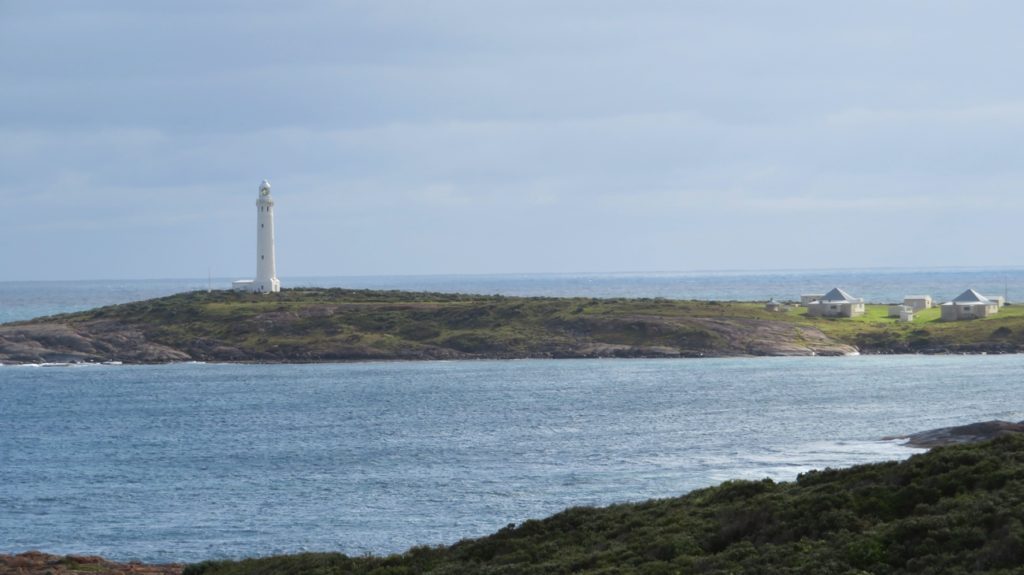
Cape Leeuwin lighthouse. Two of the lighthouse keepers houses are in the photo as well as some of the maintenance huts.
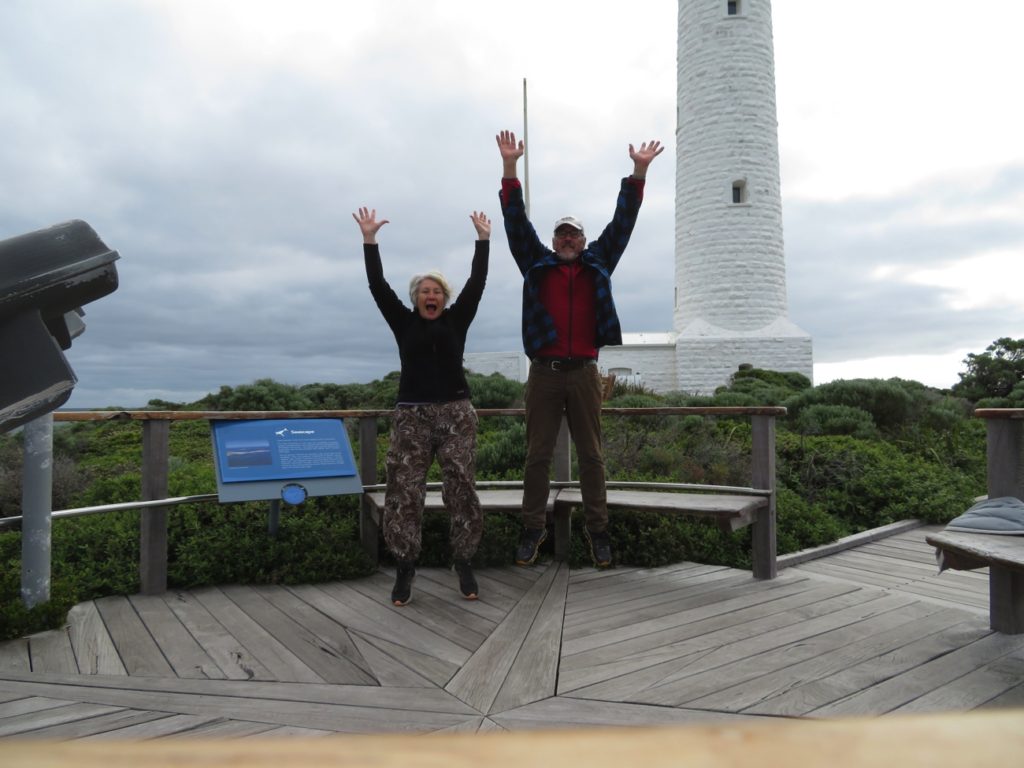
Cape Leeuwin – the most south-westerly point of Australia
Leaving the Cape and Augusta we headed back inland towards the big trees. Today’s drives have been very pleasant, from the karri forest through coastal heathlands and wildflowers then inland through lush green sheep country to our free campsite in the bush via a dirt road and through an enormous puddle.
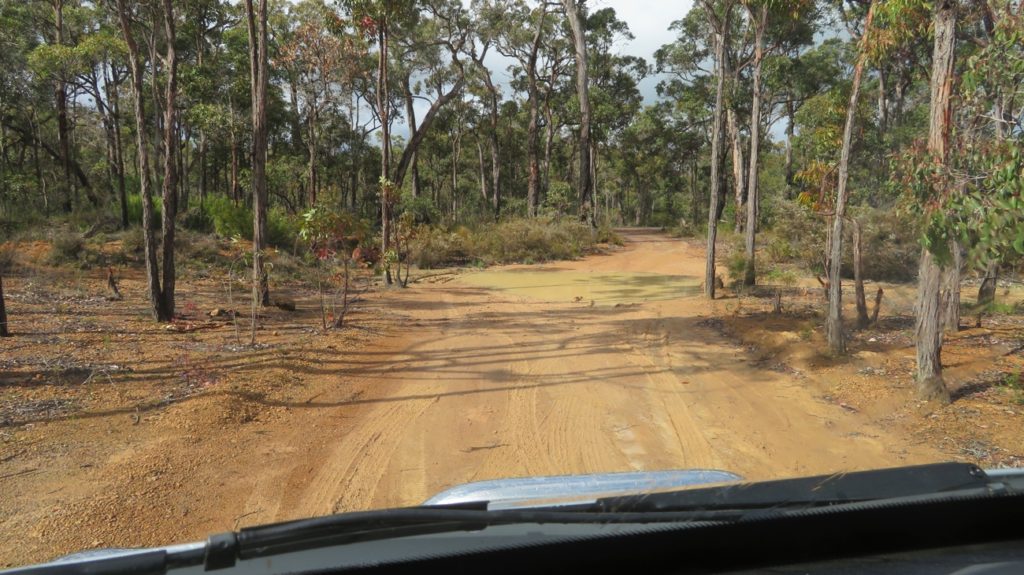
Our campsite off the highway and through that puddle. Quiet night! I think the puddle scared everyone else off.
Tuesday 10th
After a quiet night all alone we awoke to rain – 4WD has its uses (remember the puddle!).
Nannup provided a relaxing locale for our brunch beside their Arboretum – tall trees from other States planted nearly 100 years ago. We took a walk along the Blackwood River Trail and wandered the streets of this lovely timber town, past art galleries, music venues, locally crafted timber furniture stores to stop for a coffee at one of the several cafes.
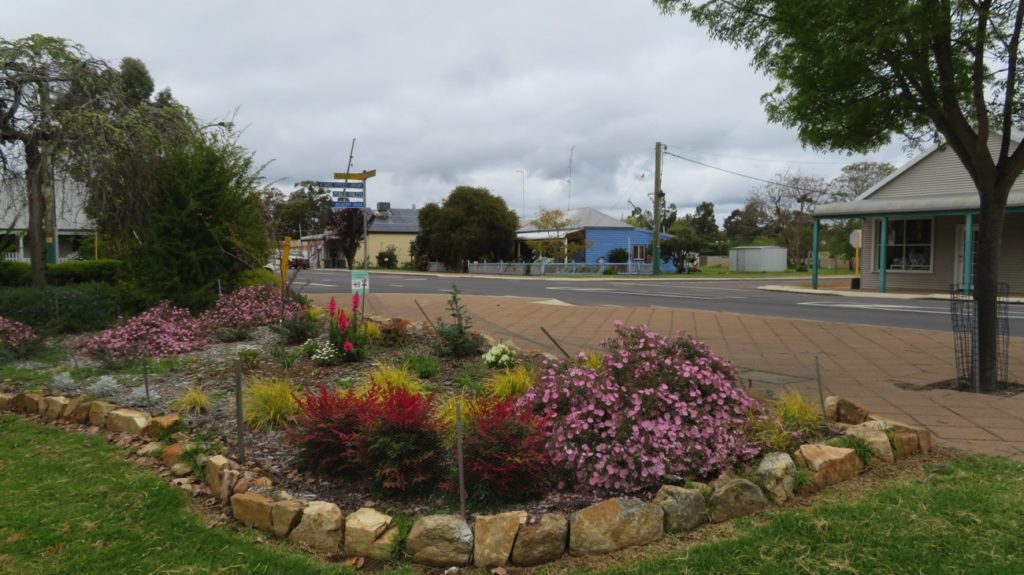
One of the lovely public gardens in Nannup
Nannup is noted for its gardens – well-deserved praise seeing the many public and private gardens ablaze with flowers and beautiful plants.

The totems at Nannup
This evening we’re camped beside Workers Pool, a National Park’s campsite. We’re planning to walk some of the Old Timberline Trail tomorrow which passes through this campsite. There’re only about 6 or 8 sites here and it’s nearly full.
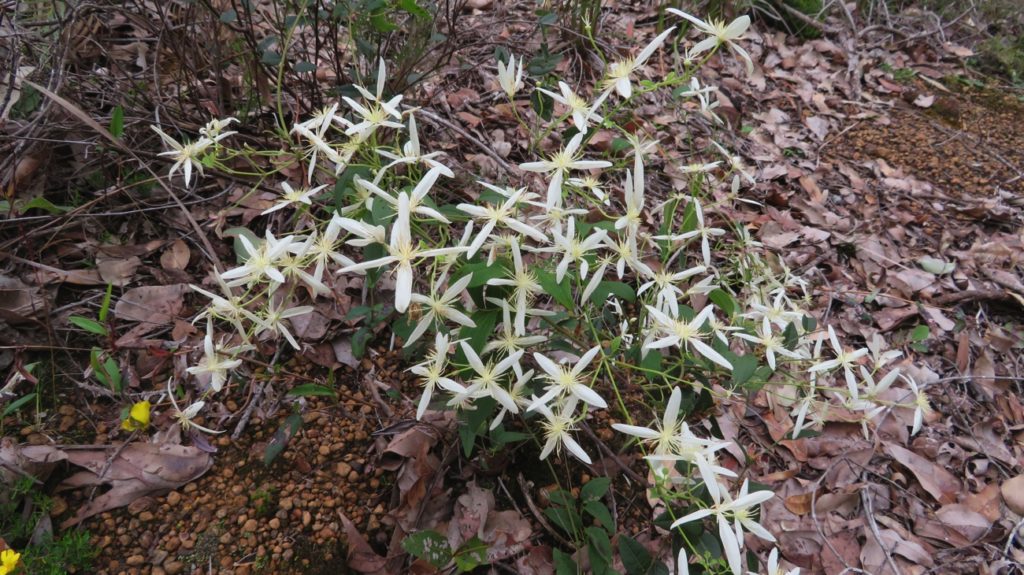
Clematis, Grandads Beard
Wednesday 11th
The Old Timberline Trail follows, in part, the route of the old rail line that was constructed to transport the timber out of the forest, diverging several times to St Johns Brook for the walker to enjoy this lovely fast flowing stream with its many large pools.
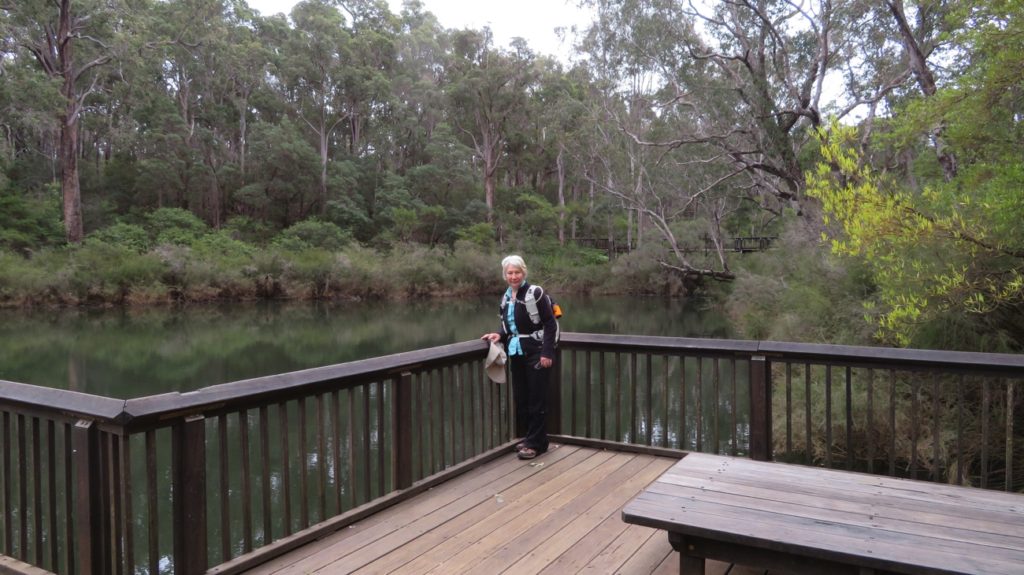
At Barrabup Pool, on the Old Timberline Trail
Logging ceased here in 1922 and other than a few ancient timber sleepers,the broken timber bridge over St Johns Brook and some very large old stumps there’s little to see of the railway line or the milling activities, or small township that grew up around the mill.
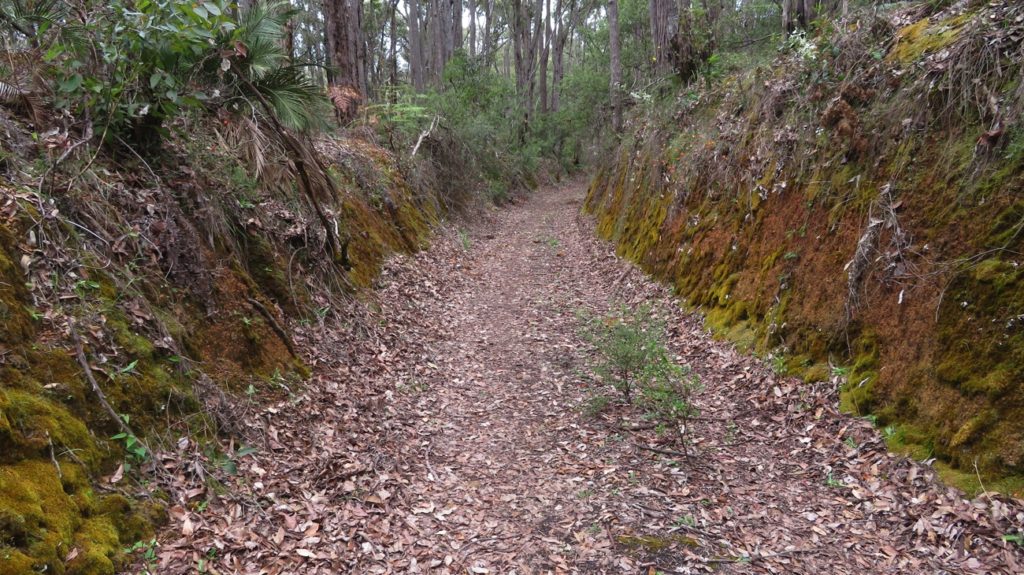
These cuttings were dug by hand back in the day – what a job! Old Timberline Trail
Today the forest, being in National Parks control, is a tangle of banksias, grass trees, other understory bushes and beautiful tall timbers, the walk lined with wildflowers, including the delicate native orchids.

Orchids
We walked from Workers Pool to Barabup Pool past Hewers Camp and up to Cambray Siding and return for a total of 22km. Altogether a very pleasant walk in pleasantly cool weather, if rather exhausting. It took about 5 hours of walking time with another hour rest for lunch.
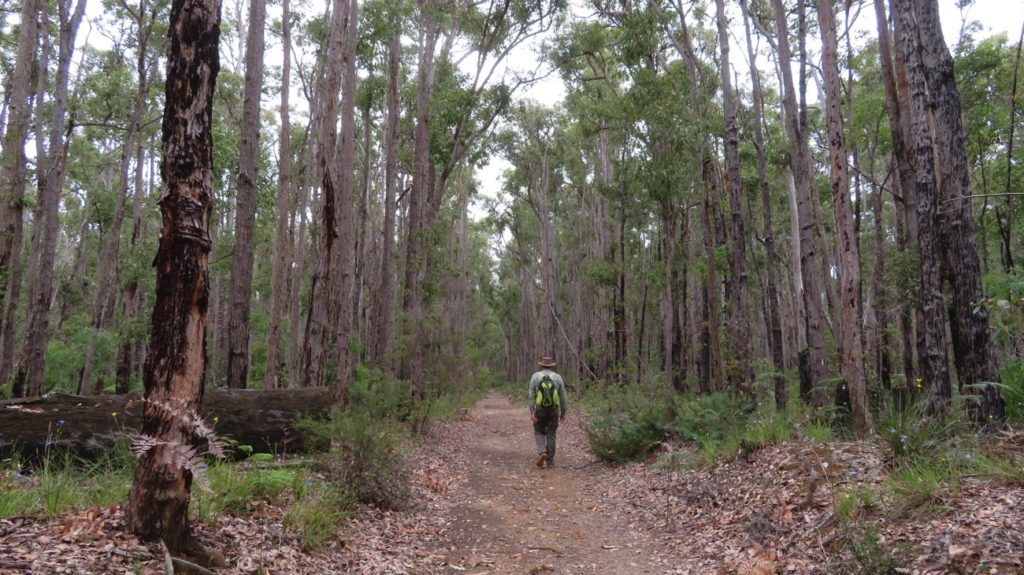
Walking the Old Timberline Trail
I must say I love these National Parks campsites. Invariably they’re in beautiful locations surrounded by native bush, most sites so far separated from your neighbour by bush that you can’t see them, a sturdy picnic table and fire pit, this one having a swing hot plate and timber provided. And they’re inexpensive – $12/n for us.

Our campsite at Workers Pool.
Thursday 12th
We continued our journey along the Blackwood River valley from Nannup to Balingup to Greenbushes. The Blackwood River by WA standards is very impressive – wide, deep and plenty of water. The river valley is lush, green with beautiful rolling hills. It was a varied drive from big tree forests, to very pretty sheep and cattle properties and very large areas of plantation eucalypts and pine. We saw lots of big logging trucks either full of harvested pine or heading back empty for another load.
Brunch was at a cafe in Balingup, mine not so good, Steve’s great! We then detoured a little to look at the heritage-listed Golden Valley Tree Park. This 60 hectare arboretum was started, privately, more than 100 years ago. It has two sections, the International trees and the Australian trees. We wandered through the Australian section trying to work out how to recognise which tree is what …unsuccessfully! Lovely parks, now in public hands and managed by volunteers.
Due to this detour we headed down to Greenbushes via the back roads, ie dirt roads. All good though, as are most WA dirt roads.
Greenbushes came about when tin was discovered here, the first miner laying his claim in 1888. The town quickly sprang up as more miners moved here. Tin, however, went through a decline, but fortuitously they also discovered tantalite and lithium minerals here which has taken over as the major industry. We drove to the lookout to view the open-cut lithium mine – yep, big hole in ground.
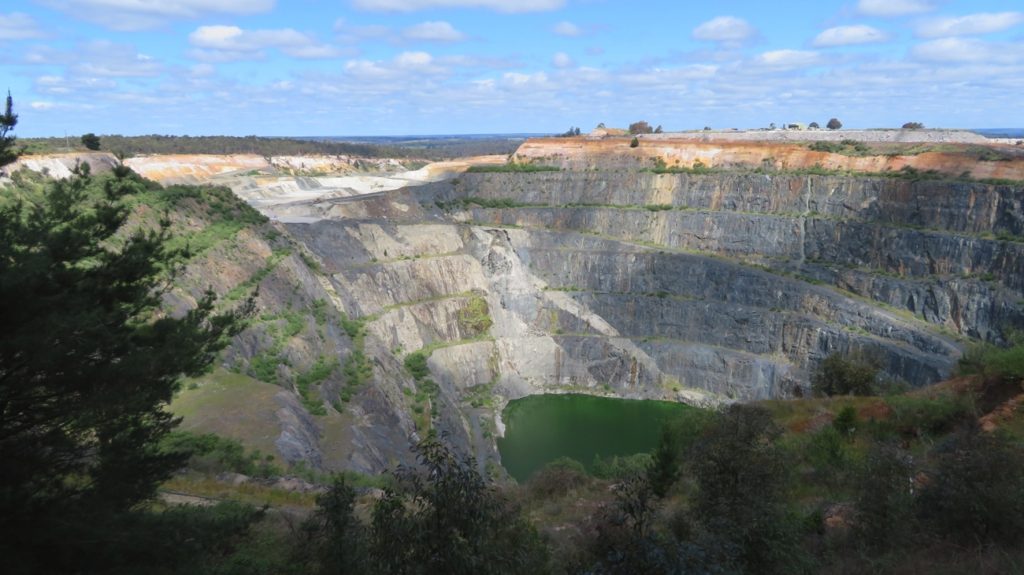
The lithium mine at Greenbushes
A couple of kilometres out of town we arrived at our camp beside Greenbushes Pool. There are several large pools (lakes/dams) here, formed by the early tin miners who needed water to sluice their diggings. This one is now purely for recreation, the local council having established swimming areas, play grounds, picnic areas, BBQ and (thank you Council) a free camp. We went for a walk around the pool, half of it on boardwalks. A top spot.
Friday 13th
Bushwalking today! We walked the 16km Greenbushes Loop which took us from our campsite, past two large dams, over a dam wall or two, along 5km of the Bibbulmun Track, past remnants of the tin-mining era including ore loading ramps constructed of huge logs, before emerging from the Jarrah forest to a much-appreciated seat overlooking paddocks of wildflowers and grass trees, then waded knee-deep through the chilly waters of a creek crossing, onwards to Dumpling Valley water supply dam (had to note that as I like the name so much), back through the town of Greenbushes and finally back to our home at Greenbushes Pool. A pleasant walk, well-maintained, lots of variety and, once more, lined with wildflowers. Today I was in my ‘yellow mood’ – took lots of photos of yellow flowers.

The whole walk was very pretty – here’s just one example.
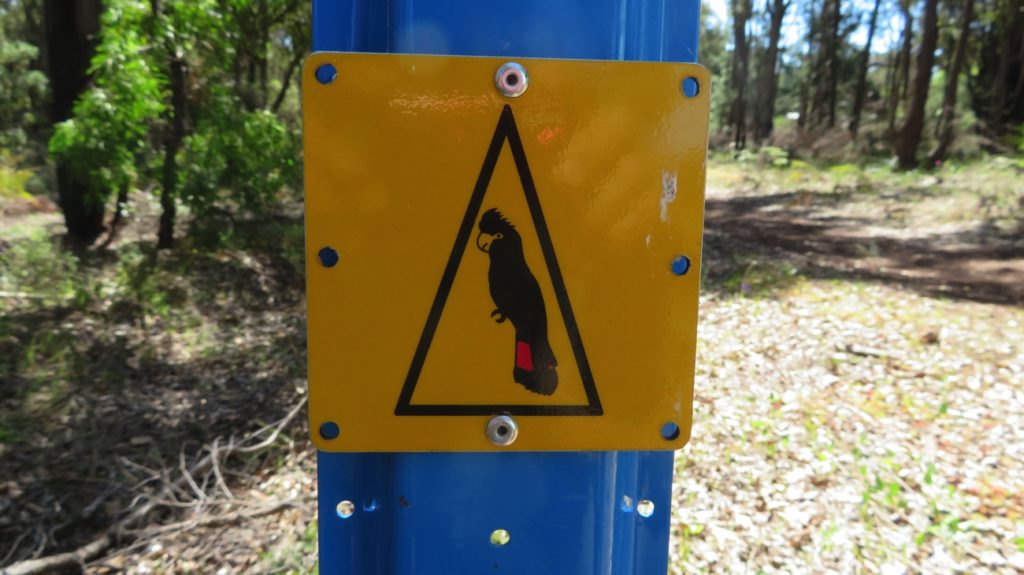
This is the symbol for our walk trail. This is the Forest red-tailed black cockatoo. We’ve been seeing them and their cousins the white-tailed black cockatoo frequently in the forests as we’ve been travelling.
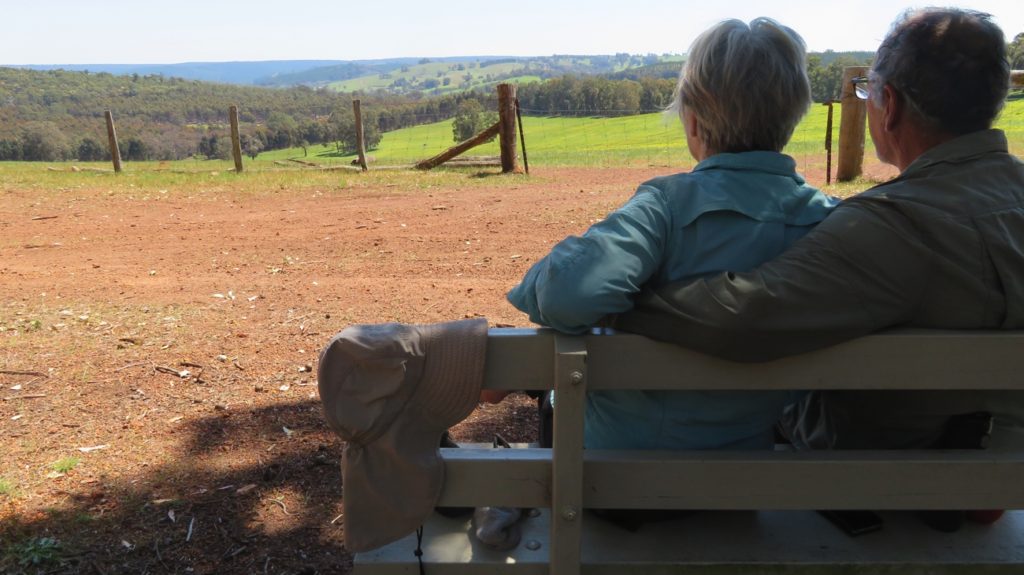
A well-deserved break on our Loop Walk at Greenbushes.
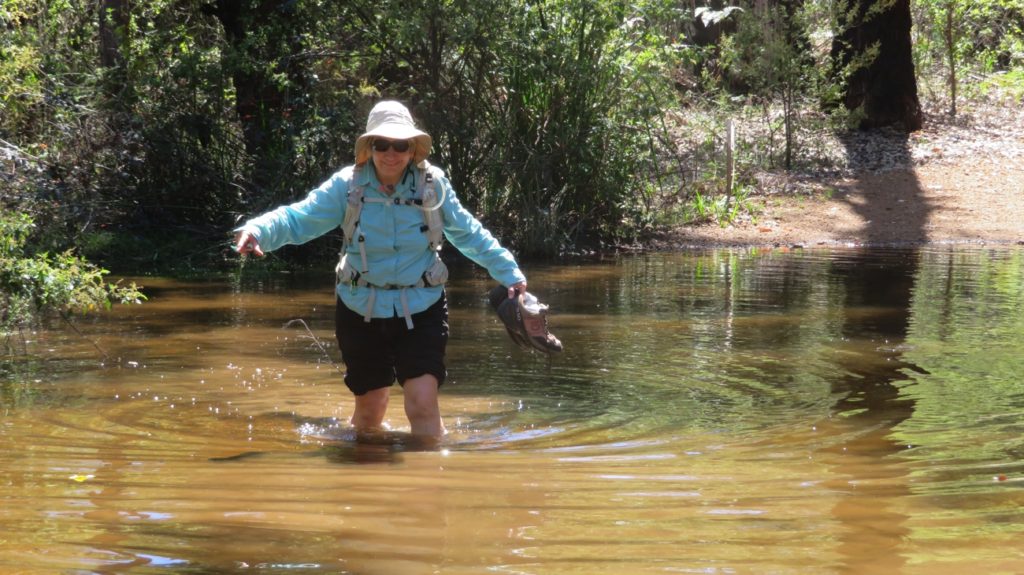
The track was got interesting in places! It got pretty deep!
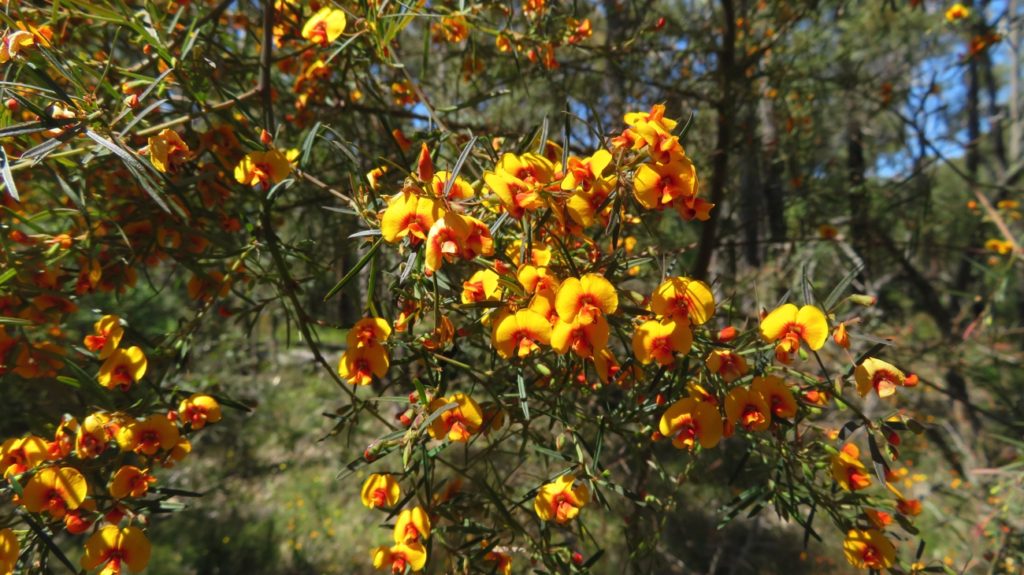
Needless to say we did little else this afternoon other than cook and eat a meal.
Saturday 14th
Leaving Greenbushes the drive continued through some of the prettiest scenery – the sleek black cattle so fat in their greenest of green pastures and the sheep just about disappearing in the knee-high grass. Bridgetown was our first stop. Delightful town with interesting shops to browse and trendy cafes serving excellent coffee. About 20km out of town is Jarrah Park where we walked 6km of their trails admiring the Jarrah, Karri, Marri and Yarri (or WA blackbutt).
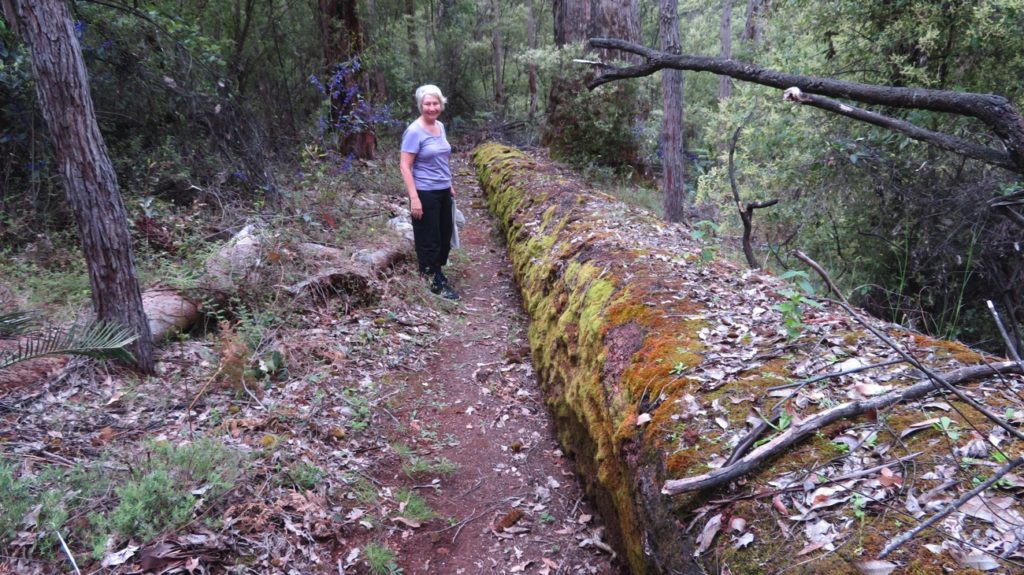
Mossy log. Just look how big these trees are when fallen.
Apparently this is as far north as Karri is found and this particular park is unique in having superb specimens of all four trees – and no we still can’t tell them apart!
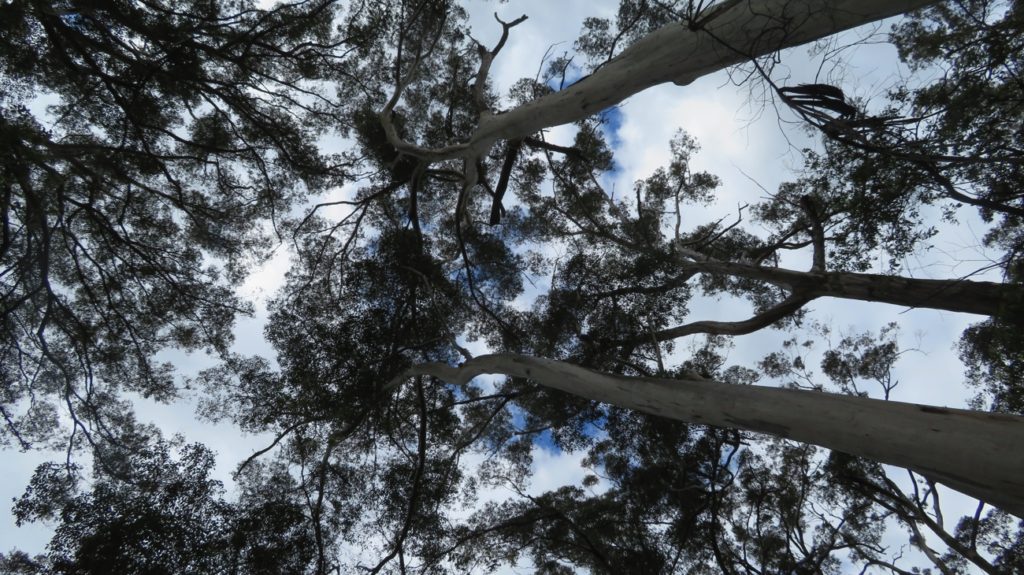
Looking up. Karri trees.
Leaving here we continued directly south through forests and farming land where we’re now seeing beautiful vineyards, stone fruit, apple and avocado orchards, wound our way through the valleys on dirt roads, retraced our tracks (lost, no! confused, maybe) until we found one of the very best National Parks camps we’ve ever stayed in – Greens Island. The Green family began planting Karri trees here mid last century. The huge camping area with 21 campsites is underneath these magnificent trees and bounded by a babbling, shallow Brook of crystal clear water.
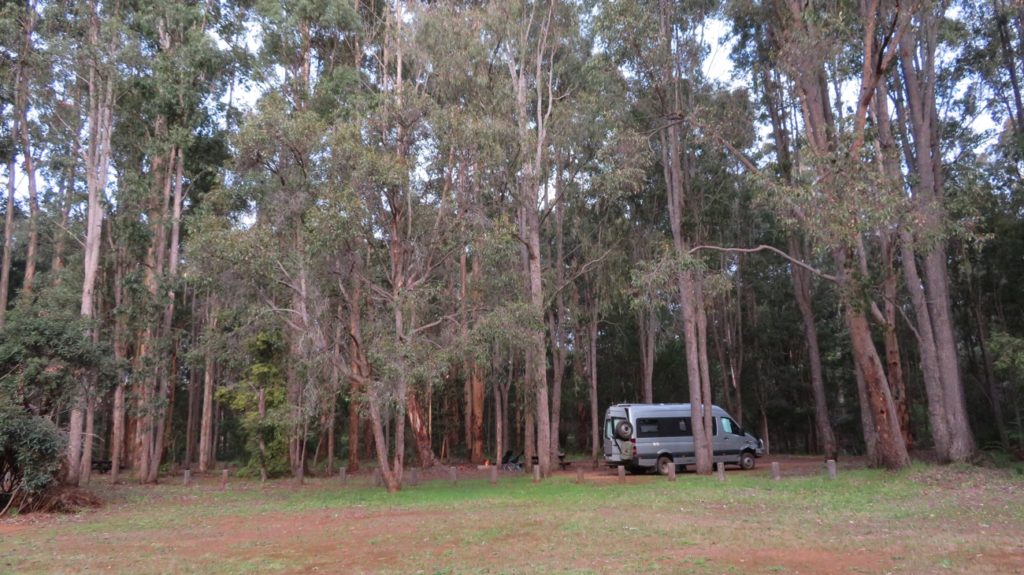
Our campsite at Greens Island.
Timber is provided for the fire pits provided to each site, so BBQ steak was on the menu. There was just us and two other campers we couldn’t even see from our site, let alone hear! Such a tranquil spot!

Getting ready to cook dinner. Greens Island
Sunday 15th
Leaving Greens Island, without getting lost, we headed to Manjimup for shopping at their Woolies. There’s not really much to commend Manjimup, sadly, other than that Pink Lady and the new ‘black’ Bravo apples were developed here. Outside Manjimup we stopped to view the Diamond Tree. This is one of 5 very tall Karri trees that were established in the early part of last century as fire lookouts. Three of these trees, Diamond, Gloucester and the Dave Evans Bicentennial Tree can be climbed by tourists. On to Pemberton, an average town nestled in a valley surrounded by Karri forests, vineyards and lush, green pastures. The Gloucester Tree is just outside Pemberton, but climbing it today, as tempting as it is, isn’t on our itinerary. Instead, surprise surprise, we’re going for an 8km bushwalk through the old-growth Karri forest – doing the Gloucester Route. These old-growth, magnificent trees are definitely the most outstanding we’ve seen so far, and that’s saying a lot. And thankfully, there were lots of them – not sure why last century’s loggers didn’t get to them. Once more wildflowers were everywhere – loved the clematis and every time we walk we see wildflowers we’ve not seen before. Lucky it was such a rewarding walk because it was very steep in places and one of the most exhausting we’ve done – my iPhone tells me I climbed the equivalent of 61 flights of stairs today – the Gloucester Tree would have been a doddle compared to that!
Back to the motorhome and we began the Karri Forest Explorer, an 86km drive through 4 National Parks, past vineyards, cideries and breweries! We’re not going far on it today – just to Big Brook Arboretum campsite where the very genial camp hosts already had the fire going and the sundowners on the go! Just us, another motorhoming couple and the camp hosts here tonight.
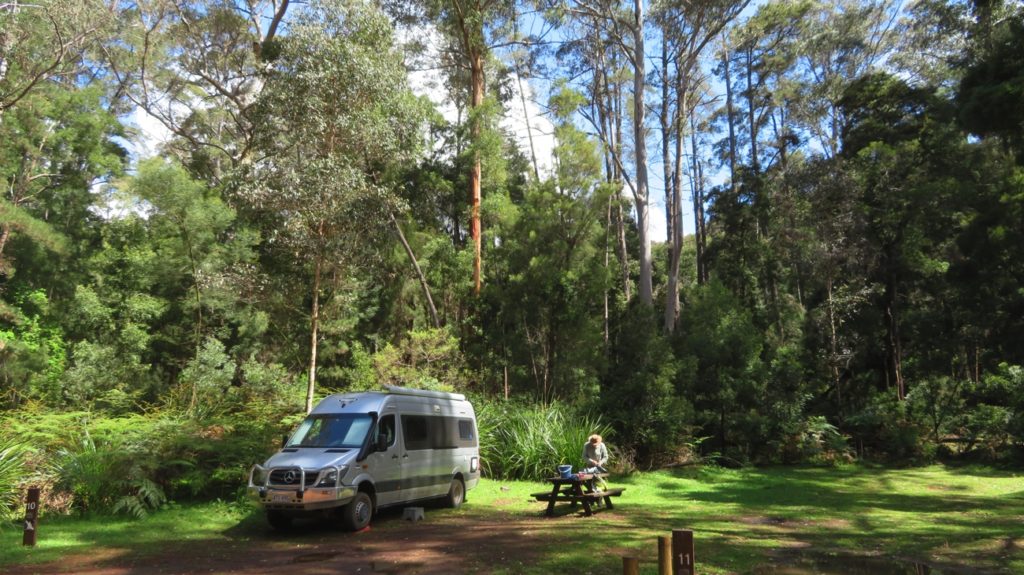
Our campsite at Big Brook Dam.
Monday 16th
We awoke to drizzling rain – sad, as the last three days have been lovely warm, sunny days. I cooked a butter chicken for dinner tonight while we waited to see if it would fine up. Just before lunch we headed off towards Big Brook Dam, walking the 6km return initially on the Bibbulmun Track, which passes through our campsite.
The forest around here is relatively young having been heavily logged in the 1920s, then a massive fire ravaged the area in the 1930s, this though caused the remaining Karri trees to drop their seeds which then germinated. Taking nothing away from today’s forest, while not having many of the huge old giants, it’s nevertheless a lovely place through which to walk.
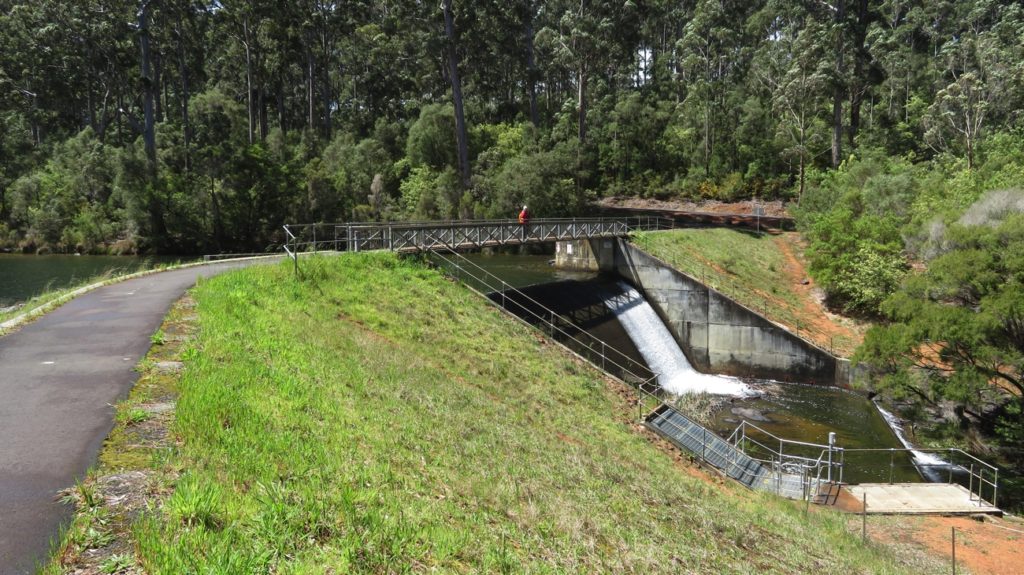
The bridge over the spillway at Big Brook Dam. This area is lacking in water at the moment.
At Big Brook Dam the Council has established a bitumen path that circumnavigates it, passing several little timber jetties, bird hides and shelter sheds on the way, with an excellent picnic area, gas BBQs, a lawn sweeping down to a sandy beach and ideal swimming area. The waterway was dammed to provide a larger water supply for Pemberton and also to support a fledgling trout hatchery. Trout fishing, marroning and canoeing are other popular activities at this Dam.

One of the many lookouts over the dam accessed from the sealed pathway around it.
The weather remained doubtful and, in typical WA weather style, periods of sunshine were interspersed with rain. Walking through the forest during light rain has to be one of the joys of life – there’s a stillness as the birds and animals seek shelter, then a gentle rumble heard in the distance, growing louder as the rain approaches. The sound of rain on leaves and wind blowing the tree tops is gentle. The subdued lighting, misty atmosphere and humus-y smells are a sensory delight. Fortunately during the only heavy shower we’d stopped at a covered shelter to admire the dam – ‘cold and wet’ wouldn’t have improved the ambience.
Back to Priscilla and we headed off along the Karri Forest Explorer once again. A brief stop at a short boardwalk led us to a stand of Warren River Cedars. Next stop at the Big Karri, yes it’s impressive!

The Big Karri Tree.
Then onwards through some grazing countryside and alongside enormous plantings of avocados. We stopped at a ‘farm gate’ and bought a couple of avocados before further up the road being enticed to taste the wares at an organic vineyard and cidery. Two bottles of wine and cider later we continued on into Beedelup National Park. Here, at what is now a picnic area called Giblett, was the scene of a very protracted, though civilised, anti-logging protest in 1997. The protesters were determined to prevent more logging of old-growth forests and so set up a camp in the forest; platforms high in the trees where some protestors lived for the 6 months of the protest drew a lot of media attention. They were successful and today we have these magnificent forests and trees protected for eternity.
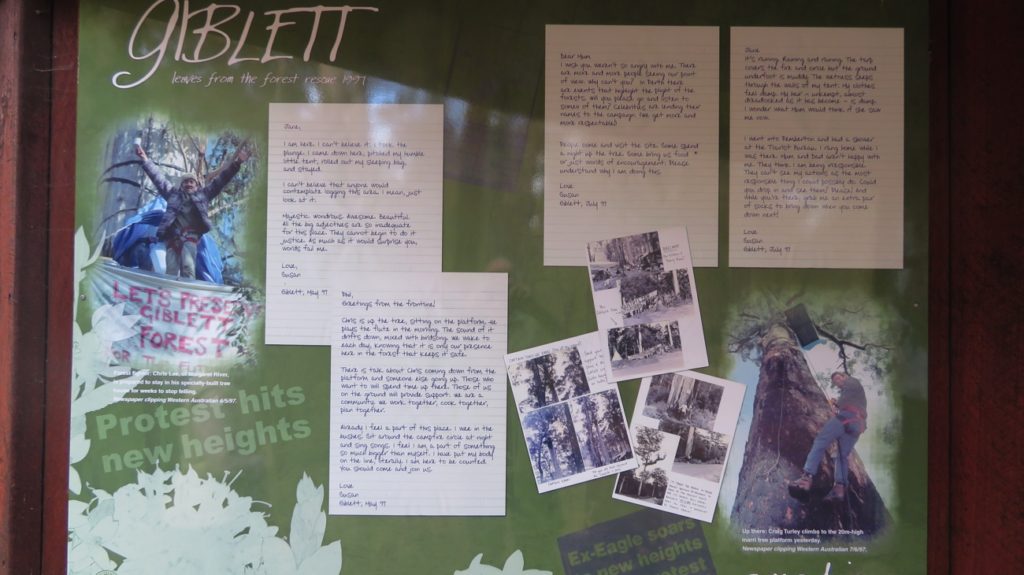
The site of people power! An interesting look at the protest, and where it occurred.
We’d intended to camp tonight at Snottygobble – how could you not stay at a camp named that! However, with very strong wind warnings for tonight and Snottygobble sites being closely surrounded by big trees with potentially loose limbs, we backtracked a little to Grass Tree Hollow where we found a site with trees that looked like they could be trusted. Both are National Parks camps, predominantly set up for tent-campers, but we managed to tuck Priscilla in just enough. No one here but us – bliss.
Tuesday 17th
The wind overnight was mild – I guess where we are is well-protected, however it did rain on and off quite a bit. In a wander around the camp site I found a sign pointing to ‘River Access’, followed it and found the most beautiful creek, Carey Brook, hidden deep in the forest its banks lined with huge old Karri trees and flowering understory plants. Half a dozen steps led down to a solid timber deck built right at water level. We got the chairs and a thermos and our cuppas and returned to sit and meditate over this lovely, fast flowing stream where fallen tree trunks created mini whirlpools for the fallen flowers to twirl around in.

A highlight of our camp at Grass Tree Hollow
We could have stayed here for hours but for a light patter of rain beginning.
Back on the Karri Forest Explorer route to Beedelup Falls. There was plenty of water rushing over the falls and rocks and on into a lake. A newly constructed bridge above the falls is a good viewing platform, but not as good as the suspension bridge at the other end of the falls, and not as much fun either! Popular spot here with good picnicking facilities.

The Lookout over Beedleup Falls
We walked on from the bridge to the ‘walk-through tree’ a round trip of about 4 kilometres – why do the walks I go on always start with steep climbs, the equivalent of 34 flights of stairs today! Anyway, once more, a lovely walk, plenty of wild flowers and the Tree was definitely worth it.
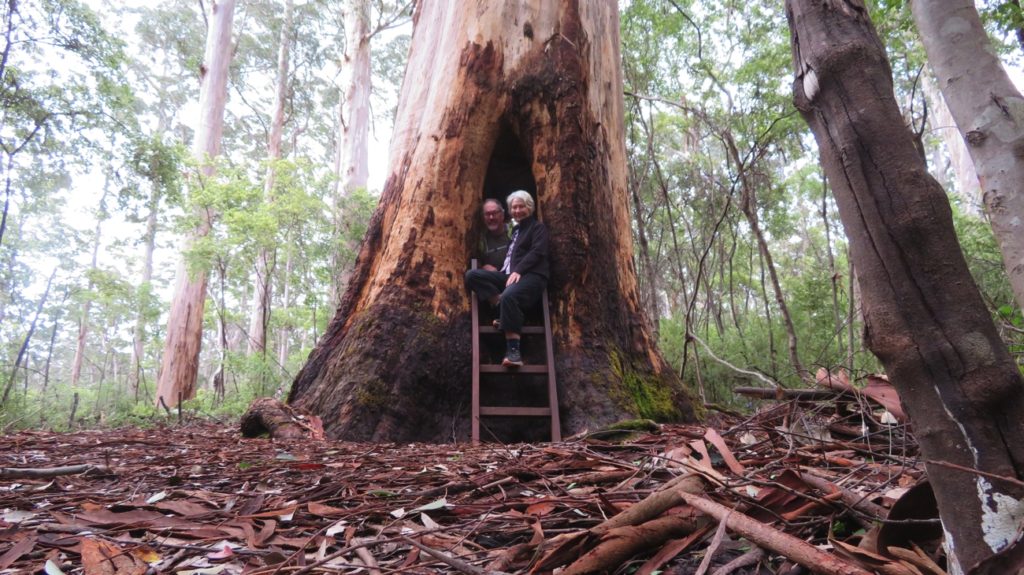
The ‘Walk Through’ tree even fits two people.
On the return loop we followed the beautiful lake and could see Karri Valley Resort across from us built right on the edge of the lake, its balconies overhanging the water – I could be tempted to stay there – very rarely, if ever, would I voluntarily leave our comfortable motorhome, so high praise indeed.

Karri Valley Resort – yep, I’d stay there without too much enticement.
Our destination today, still on the Karri Forest Explorer is Draftys campsite in Warren National Park. It’s along an unsealed road, then a turnoff onto the unsealed ‘Heartbreak Trail’ to a campsite National Parks website tells me is only suitable for tent camping or small campervans <6m – we’re 7metres. To cap it off when I asked about it at the Pemberton Visitor Info centre I was told our vehicle would be too wide for the one-way Trail. With that in mind and that it had rained all night we gamely headed on in – with no problems at all. 4WD helped on the steep, muddy, slippery ascents and descents, the road being pretty good and heaps wide enough, and most camp sites fine for us. Phew!
Once more we’re camped in the Karri forest surrounded by huge trees and thick understory bushes. Just us and one other (tent) camper on the far side.
Wednesday 18th
It rained on and off all night. Today we’re walking the Warren River Loop. We were keen to experience it as it’s been called one of the best in WA. The narrow, leaf-strewn track led from our campsite along the Warren River valley through old-growth Karri, sheoak and Warren River cedar to the next camping area before a steep climb out of the valley to the Dave Evans Bicentennial Tree.

The Bicentennial Tree
This lookout tree has been pegged (for climbing) to 65 metres. I made it up the first 20 metres or so until my thoughts began to wander to the 1.5 metre swing at the top on windy days, such as today, and how long it would take them to bring in a cherry-picker to get me down.
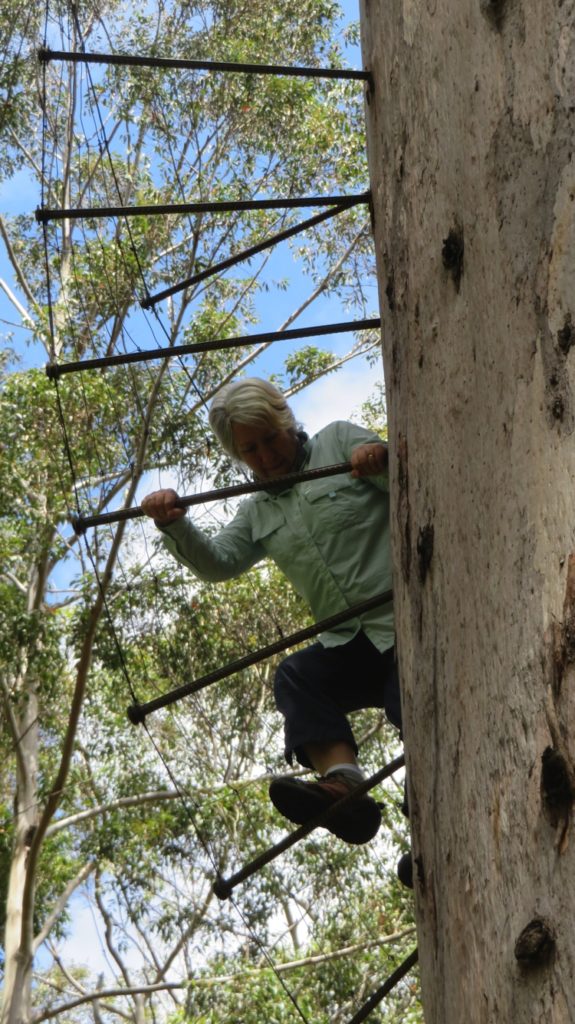
Climbing the Bicentennial Tree
The Trail continued through this pristine old-growth forest before winding its way back to the river where delicate maidenhair ferns lined the path as it took us past Maiden Bush, Heartbreak Crossing and finally, after 11.2 km, back to our camp. It rained once on our walk (while we were under cover in a picnic shelter having our lunch!) and was overcast and cool most of the day.

The maidenhair ferns and the mosses tell you how moist this area is, under the canopy of the big trees. Warren Loop Walk.
We took heaps of photos of huge old Karri trees in the forest – I’ve long known that pristine forest trees feed my soul. Well, my soul must be fit to burst! There were old fallen trees, huge trunks covered in mosses and fungi, slowly decaying, as well as recent falls of whole trees and big branches – the life cycle of the forest. Bird life, and song, is prolific, though wildflowers took a backseat to the beauty of the trees. Definitely a top walk.

Steve, the tree hugger.
National Parks is to be commended for building shelters and picnic areas at 7 points of interest along the trail. Along the river they’ve created several sturdy timber and stainless steel decks at bank level with steps leading down to water level and another deck. Here at our campsite there’s also a large 3-side-open camp kitchen with 3 gas BBQs, sinks and picnic tables all under cover. Thank you DPaW.
After our BBQ tea we sat on the river deck for awhile enjoying the reflections in this wide, gently flowing river. So beautiful.

Tall trees on our Warren River Loop Walk.
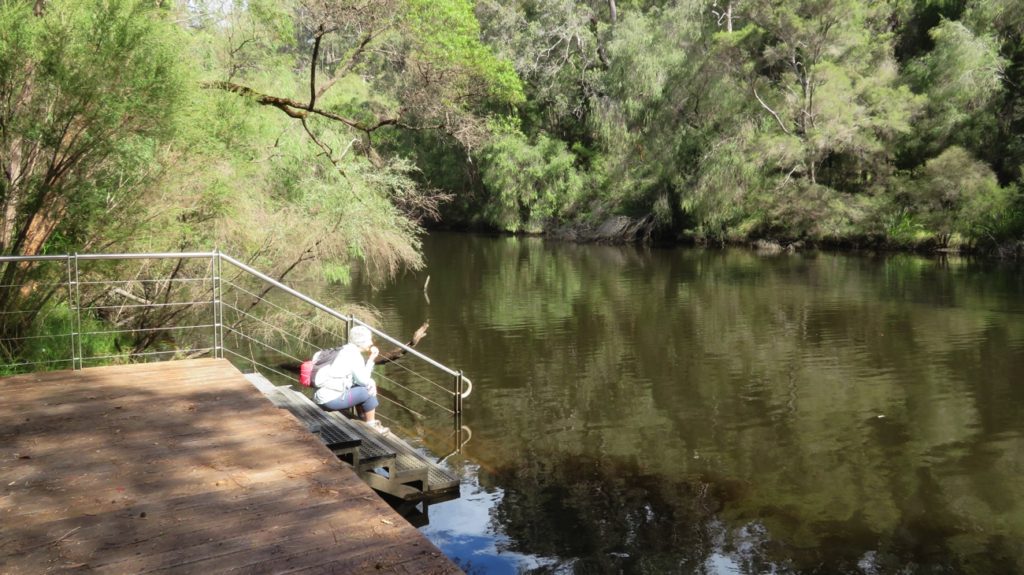
A moment of contemplation. On the Warren River Loop walk.
Thursday 19th
This morning we completed the Karri Forest Explorer, a drive I’d highly recommend. It was sad to farewell the big Karri trees, but we were mollified a little stopping to see the Cascades, the last ‘point of interest’ on the drive.
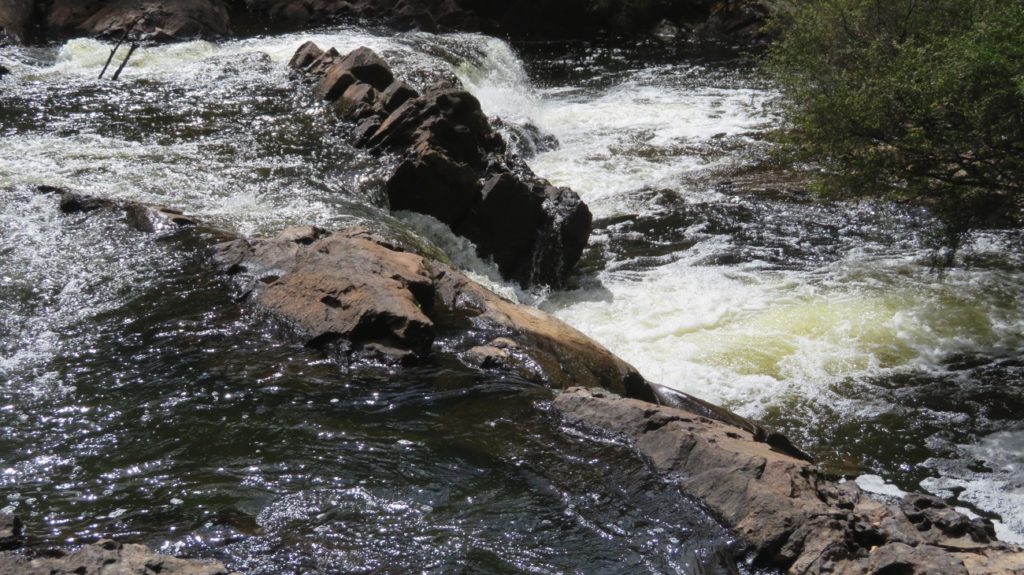
The Cascades
Heading south we stopped for brunch in the park at Northcliffe before doing the Understory Art Sculpture Walk, a walk of 1.2 km through a section of Karri Forest and heathland. The sculptures, by local, National and international artists, were installed throughout the walk in trees or hidden down on the ground. Such talented people!
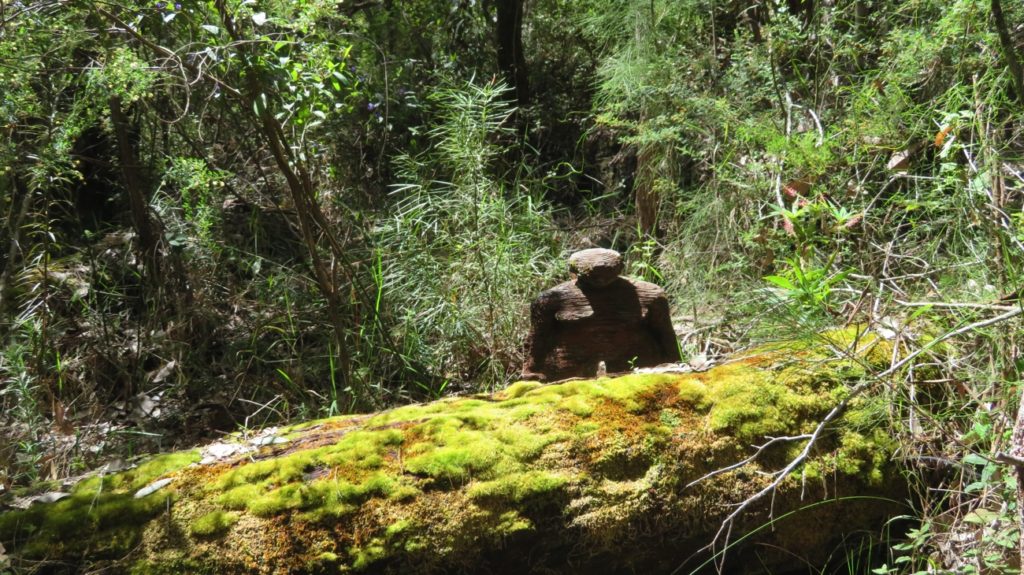
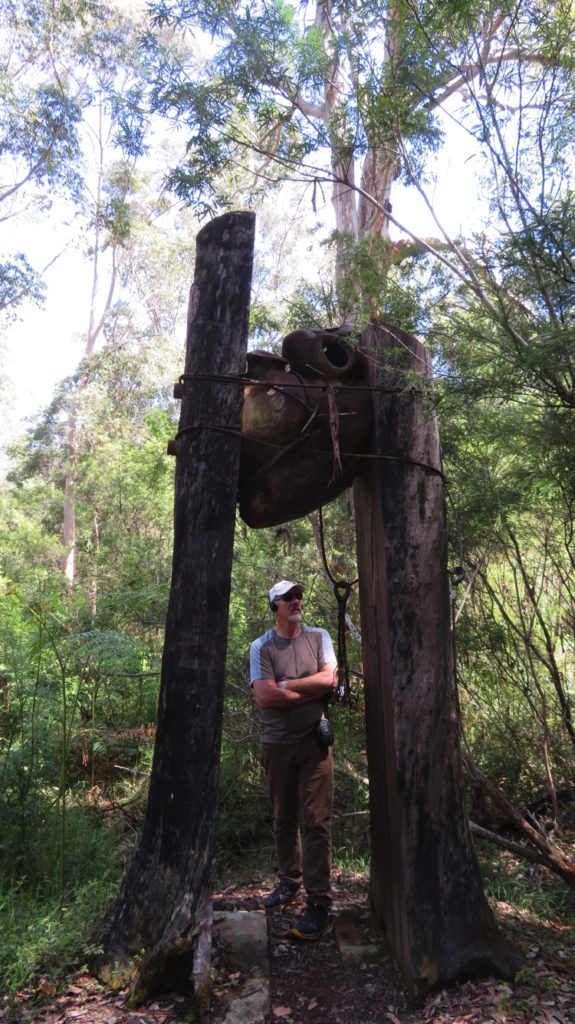

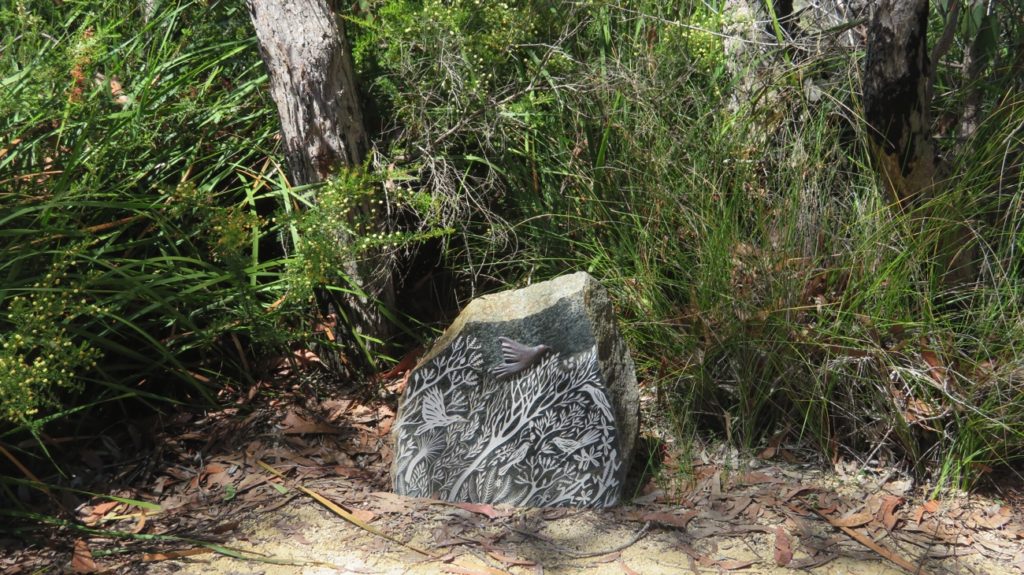
Our destination for tonight is Shannon National Park campsite. Another tourist drive took us through the forest on unsealed roads, in some areas just two tyre tracks through the bush with lovely tall trees touching overhead – my kind of road! There was some old-growth forest, but mainly regenerating forests and even some melaleuca.
The campsite is being redeveloped and will be huge when completed. For now though the camp host met us and directed us up among the trees where you can’t see your neighbours. Hot showers at this camp – not that we used them, got our own.
Friday 20th (Happy birthday to my soul mate, Steve)
We leave these beautiful forests today. We’ve had many highlights on this trip, but this last week or so amongst the big trees is up there with the best of them. We’re heading towards the southern coast now. We took a few unsealed back roads on the way to Swarbrick, just north of Walpole. In so doing we managed to see more beautiful forests and more lush green pasture lands.
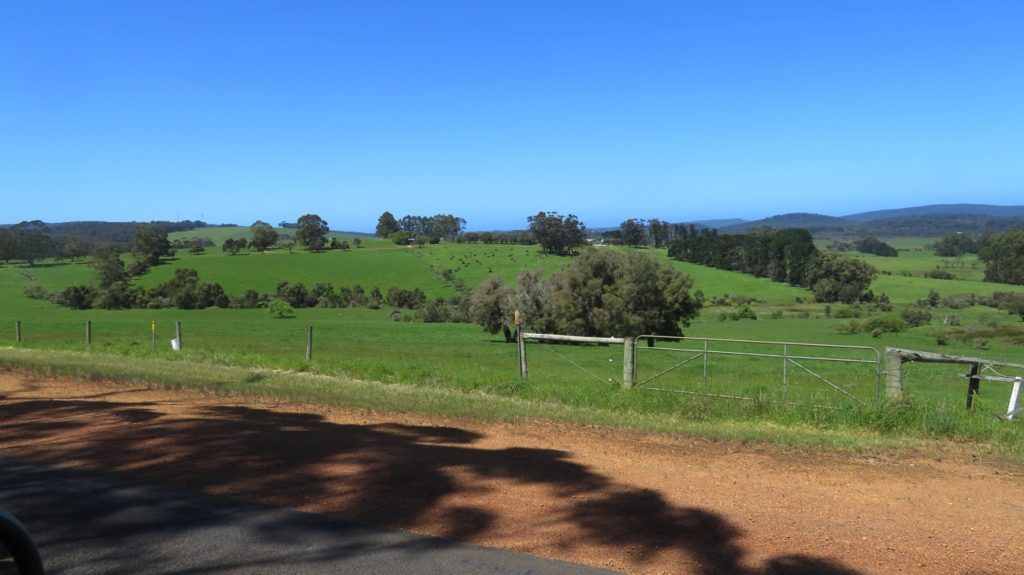
When it’s not National Parks big forests this is what the countryside looks like.
Swarbrick is an art walk a little different to Understory in that the same artists created it all and their theme is how the forests have been impacted by human habitation from the time humans first arrived until today and how humans were affected by the forests. It starts with a 50 metre x 4m high mirror wall, the Wall of Perceptions, reflecting the forest and you in it as you approach.
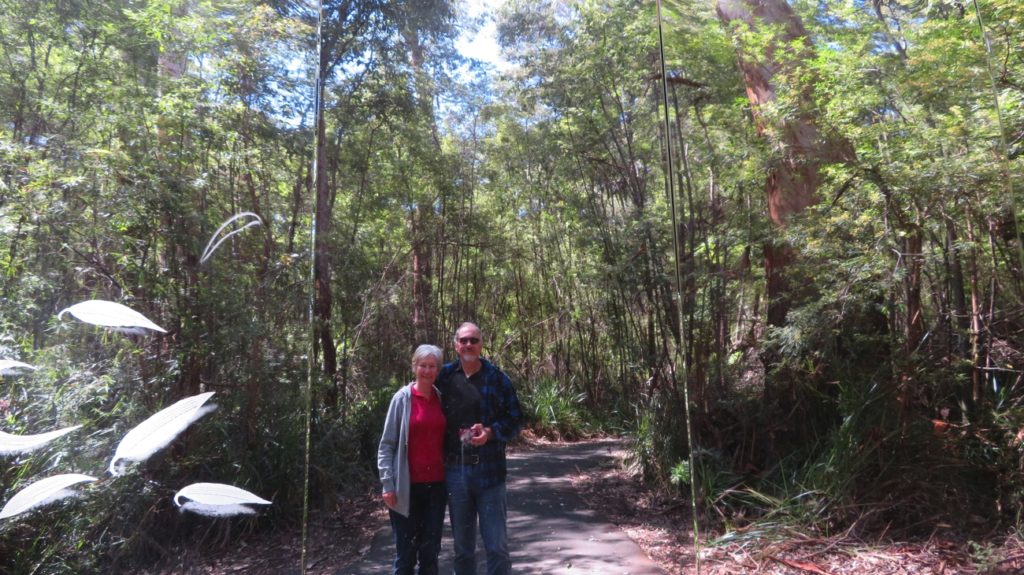
This is actually our reflection in the huge entrance wall.
The history of the forest is written in the panels, chronicling aboriginal, settler, logger and conservationist interactions with the forest. It’s a short 500m walk through the forest with half a dozen symbolic art installations. Interesting.
We continued on to Walpole for brunch and internet time, and to speak with all the family. Then on to Peaceful Bay Caravan Park where we met up with Annie and Mark in their Trakkadu, and Trish and Bryan who’ve arrived from Queensland with their camper trailer to share the next stage of our adventure with us.
A fun afternoon, fish and chips (very good) at the caravan park and a platter of fresh fruits and cheeses provided by Annie and Mark to celebrate Steve’s birthday. A great evening. Thanks all.
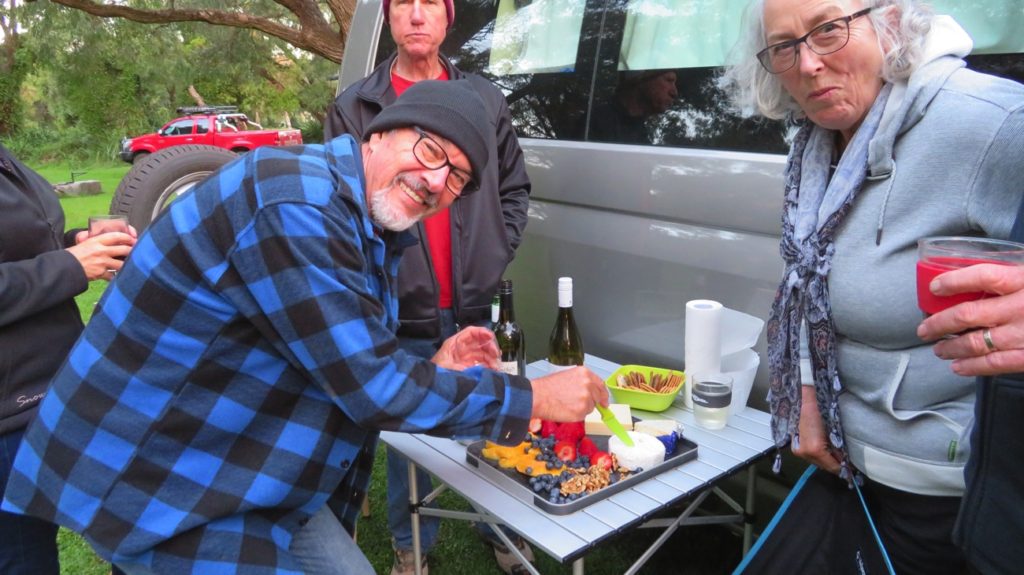
Steve, cutting his ‘birthday camembert’.
Saturday 21st
We farewelled Annie and Mark, then moved not far down the road to Coalmine Beach Caravan Park where we’ve booked in for the next 4 nights. A bit of shopping and preparations for our next big adventure begins.
For more photos from this time in our trip CLICK HERE
